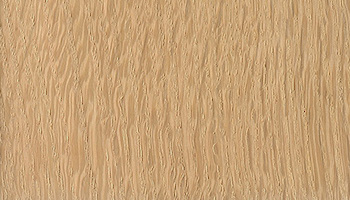
SOFTWOODS
Softwood timbers provide you with products that are structurally strong, lightweight, easily transported and worked on-site. Softwood timbers, such as those from white cypress or Douglas fir, can have higher durability and strength ratings than many hardwoods. Common uses for softwood timbers include structural framing, cladding and panelling, benchtops, flooring, decking, joinery, beams and poles. Plywood, LVL, MDF and other products that utilise softwoods are popular in shop-fittings, furniture and cabinetry, for their appearance, thermal and acoustic properties as much as for their durability. To find the right timber for your project, search softwood species.
Atlantic White Cedar | Chamaecyparis thyoides
Heartwood is a light reddish brown. Narrow sapwood is pale yellow-brown to almost white and is clearly demarcated from the heartwood. Grain is straight, with a fine uniform texture. Reported to be durable to very durable regarding decay resistance. Common Uses: Boatbuilding, carving, siding, shingles, and construction lumber. Atlantic White Cedar has excellent stability and decay resistance, but isn’t nearly as hard or strong as its west coast counterpart, Port Orford Cedar. Atlantic White Cedar is also sometimes referred to as Southern White Cedar to differentiate it from Northern White Cedar of the Juniperus genus. Other Names: Atlantic White Cedar, Southern White Cedar, Chamaecyparis thyoides. Distribution: Coastal plain regions of eastern United States.
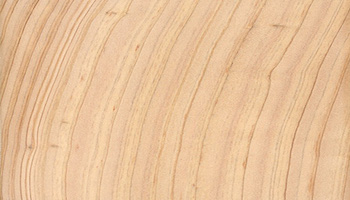
Aromatic Red Cedar | Juniperus virginiana
Heartwood tends to be a reddish or violet-brown. Sapwood is a pale yellow color, and can be appear throughout the heartwood as streaks and stripes. Regarded as excellent in resistance to both decay and insect attack, Aromatic Red Cedar is frequently used for fence posts used in direct ground contact with no pre-treating of the wood. Common Uses: Fence posts, closet and chest linings, carvings, outdoor furniture, pencils, bows, and small wooden specialty items. Although Aromatic Red Cedar is included in the cypress family (Cupressaceae) which includes many species of cedar, it’s perhaps more closely related in junipers in the genus Juniperus. In tree form, it is more commonly called Eastern Redcedar, while the wood itself is usually referred to as Aromatic Red Cedar. Though Eastern Redcedar trees are widely distributed throughout the eastern half of the United States, it is a very slow-growing species, and most trees harvested tend to be fairly small in diameter. Because of this, Aromatic Red Cedar boards tend to be knotty and narrow. Other Names: Aromatic Red Cedar, Eastern Redcedar, Juniperus virginiana. Distribution: Eastern North America.
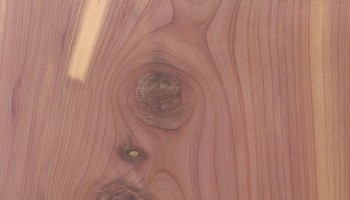
Cedar of Lebanon | Cedrus libani
Heartwood is a cream to light reddish brown color. Narrow sapwood is a pale yellowish white. Rated as very durable, and generally resistant to insect attack. Common Uses: Veneer, cabinetry, building construction, and turned objects. So named for the cedars found growing on Mount Lebanon in Syria, the country of Lebanon also has the same species, and prominently features the tree on its national flag. This same cedar is also referenced in the Bible as the source of lumber for Solomon’s temple. Distribution: Mountainous areas of the Mediterranean region.
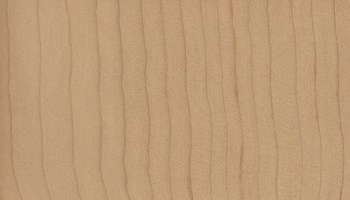
Incense Cedar | Caldocedrus decurrens
Heartwood is light to medium reddish brown. Sapwood is differentiated from heartwood and is light tan to off-white. It’s not uncommon for boards to contain pockets of partially decayed wood (peck) due to fungal attack. Common Uses: Pencils, Venetian blinds, fence posts, construction lumber, sheathing, siding, chests, and various exterior furniture applications. Incense Cedar is favored for use in wood pencils due to its softness and ease of cutting without any splintering. (Historically, Eastern Redcedar was used for pencils, but limited supplies of the wood—and consequently higher prices—have caused it to become displaced by Incense Cedar in modern times.) Other Names: Incense Cedar, California White Cedar, Calocedrus decurrens (syn. Libocedrus decurrens). Distribution: Western North America (primarily California).
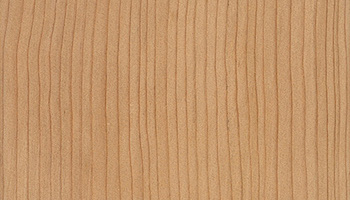
Northern White Cedar | Thuja occidentalis
Heartwood is a pale brown or tan color, while the narrow sapwood is nearly white. Numerous small knots are common in the wood. Rated as durable to very durable regarding decay resistance; also resistant to termites and powder post beetles. Common Uses: Fences, posts, shingles, piles, canoes, outdoor furniture, railroad ties, and paper (pulpwood). In tree form, Thuja occidentalis is commonly referred to as Eastern Arborvitae—or simply just Arborvitae—and is widely used as an ornamental tree, with hundreds of different cultivars in existence. Perhaps the closest thing to Balsa that the United States has domestically, Northern White Cedar is one of the very lightest and softest of commercially available woods in the country. Yet the greatest value of this wood is not merely in its lightness, but in its resistance to decay, lending it to many exterior applications. Other Names: Northern White Cedar, Eastern Arborvitae, Thuja occidentalis. Distribution: Northeastern North America.
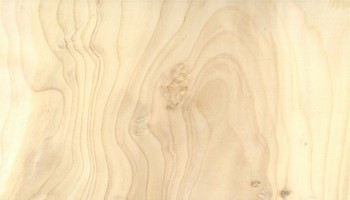
Port Orford Cedar | Chamaecyparis lawsoniana
Heartwood is a light yellowish brown. Sapwood is pale yellow-brown to almost white and isn’t clearly distinguished from the heartwood. Color tends to darken with age upon exposure to light, (though when left exposed outdoors it weathers to a uniform gray). Reported to be durable to very durable regarding decay resistance, and also resistant to most insect attacks. (Also reported to have good resistance to acid corrosion—Port Orford Cedar was used for storage battery separators during and prior to World War II.) Common Uses: Arrow shafts, musical instruments (soundboards on guitars), boatbuilding, boxes and chests, decking, and various interior millwork applications. So named because it was first discovered near Port Orford in Oregon. Port Orford Cedar is perhaps a hidden gem in the realm of strong, lightweight timber, possessing superb strength-to-weight ratios in both modulus of elasticity and modulus of rupture, as well as crushing strength. Other Names: Port Orford Cedar, Lawson’s Cypress, Chamaecyparis lawsoniana. Distribution: Pacific northwest United States.
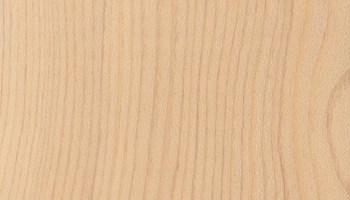
Western Red Cedar | Thuja plicata
Western Redcedar is typically reddish to pinkish brown, often with random streaks and bands of darker red/brown areas. Western Redcedar has been rated as durable to very durable in regard to decay resistance, though it is not resistant to insect attack. Common Uses: Shingles, exterior siding and lumber, boatbuilding, boxes, crates, and musical instruments. Western Redcedar is a commercially important lumber, used in a number of applications ranging from rough-sawn lumber for use in home construction to clear quartersawn material for classical guitar soundboards. Other Names: Western Redcedar, Western Red Cedar, Thuja plicata. Distribution: Pacific Northwest United States/Canada.
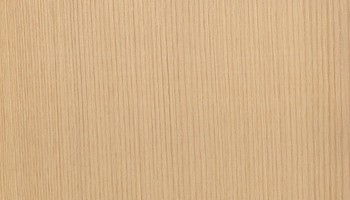
Bamboo
Generally a uniform and pale yellow to almost white. Live bamboo that has been left standing too long frequently develops fungal decay, discoloring the wood with brown or black streaks and patches. Being a monocot in the grass family, bamboo does not have any sapwood/heartwood or growth rings. Texture is very uniform, and ranges from medium to fine depending on density. Bamboo that has been split and processed into lumber will have intermittent variations in the fiber at each node on the stem. Bamboo used in exterior conditions is perishable, and will deteriorate in a matter of years. This is also paralleled in the short natural life cycle of bamboo, where many species quickly reach full maturity after only two or three years, and are subsequently attacked by decay mold and fungi, typically collapsing only a few years later. Bamboo is also susceptible to insect attacks such as powder-post beetles, termites, and marine-borers. Common Uses: Veneer, paper, flooring, fishing rods, ladders, scaffolding, musical instruments (flutes/woodwinds/chimes), furniture, window blinds, carving, turned items, and small novelty items. Scientific Name: Hundreds of species among dozens of genera from the Poaceae (grass) family (Many timber-producing bamboos are from the Phyllostachys and Bambusa genera). Distribution: Most timber-producing bamboos are from South Asia.

Black Palm | Borassus flabellifer
Black fibers embedded in a lighter tan or light brown colored body. Fibers are more densely packed toward the outside of the tree trunk, becoming more and more sparse toward the center of the tree. The center core of the tree is soft and contains none of the darker vascular bundles that give the wood its characteristic look and hardness. (This is nearly opposite of the typical outer sapwood/inner heartwood combination found in dicot hardwoods.) Other Names: Black Palm, Palmyra Palm, Borassus flabellifer. Distribution: Tropical Asia and Africa. Black Palm is reported to be durable regarding decay resistance, though it is susceptible to insect attacks. Common Uses: Flooring, boatbuilding, walking sticks, knife and tool handles, rafters, furniture, and turned objects. Technically neither a softwood nor a hardwood, palm falls into the category of monocots, which also includes bamboo, grass, banana, rice, wheat, corn, etc.
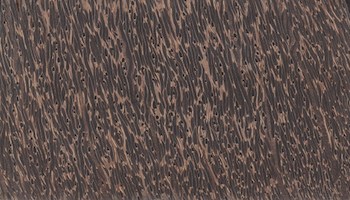
Red Palm | Cocos nucifera
Reddish brown fibers embedded in a lighter tan or light brown colored body. Fibers are more densely packed toward the outside of the tree trunk, becoming more and more sparse toward the center of the tree. The center core of the tree is soft and contains none of the darker vascular bundles that give the wood its characteristic look and hardness. (This is nearly opposite of the typical outer sapwood/inner heartwood combination found in dicot hardwoods.) Other Names: Red Palm, Coconut Palm, Cocos nucifera. Distribution: Throughout the tropics worldwide. Red Palm is reported to be durable regarding decay resistance, though it is susceptible to insect attacks. Common Uses: Flooring, canoes, rafts, walking sticks, knife and tool handles, carvings, rafters, furniture, and turned objects. Red Palm is more commonly known outside of the woodworking community as Coconut Palm, where it is cultivated and grown throughout the tropics worldwide for its fruit. Nearly every part of the tree is said to have a use or value, and older trees are typically only harvested for wood after they have passed their time of fruit-bearing—usually after 50-70 years.
Technically neither a softwood nor a hardwood, palm falls into the category of monocots, which also includes bamboo, grass, banana, rice, wheat, corn, etc.
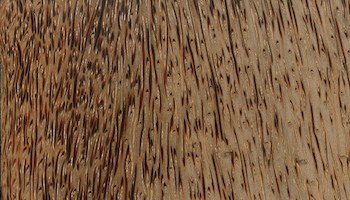
Cypress | Taxodium distichum
It’s color tends to be a light, yellowish brown. Sapwood is nearly white. Some boards can have scattered pockets of darker wood that have been attacked by fungi, which is sometimes called pecky cypress. Cypress has a straight grain and a medium texture. Old-growth Cypress is rated as being durable to very durable in regards to decay resistance, while wood from younger trees is only rated as moderately durable. Other Names: Cypress, Baldcypress, Taxodium distichum. Distribution: Southeastern United States. Overall, Cypress is easy to work with hand and machine tools, though sharp cutters ought to be used to prevent lifting of the grain. Also, the wood has been reported by some sources to have a moderate dulling effect on cutting edges. Cypress has good gluing, nailing, finishing, and paint-holding properties. Common Uses: Exterior construction, docks, boatbuilding, interior trim, and veneer. Cypress is popular choice in construction applications where decay resistance is needed.
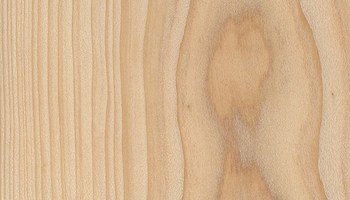
Scots Pine | Pinus sylvestris
Scots Pine is a softwood used for general construction, flooring, paneling and interior joinery. The heartwood is yellow-brown to reddish brown and the sapwood is creamy white or pale yellow. Scots Pine is used for general construction, flooring, paneling and interior joinery. Scots Pine is a softwood used for general construction purposes, flooring and joinery. Other Names: Nordic Redwood, Scots Fir, Scotch Fir, Riga Pine, Norway Pine, Mongolian Pine, Red Deal, Yellow Deal. Scots Pine is a softwood originating from northern Europe and Asia, the sawn form of which is used in general construction, flooring, paneling and interior joinery. Treated with preservatives it has also been used for poles and pit props. The sapwood of Scots Pine is 50-100mm wide, creamy white or pale yellow, and readily identified from the yellow-brown to reddish brown heartwood. Its texture is relatively fine and the grain is usually straight. The growth rings are prominently marked by the darker, denser summerwood. The knots are usually grouped, whereas in White Baltic Pine they are much more randomly distributed. The wood is resinous; it is of low durability and not susceptible to lyctid borer.
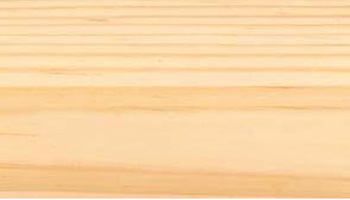
Radiata Pine | Pinus radiata
Radiata Pine is fine but uneven in texture, and is light brown to yellow in colour. It is a widely available softwood popular used for general construction and decorative purposes. Radiata Pine is a widely available softwood used for general construction, in engineered wood products and for decorative purposes. Radiata Pine is a softwood whose availability and ease of use make it popular for all kinds of construction and decorative uses. Other Names: Monterey Pine, Insignis Pine. Radiata Pine is native to the central coast of California but is widely planted in Australia and New Zealand. It makes up 28% of Tasmania’s timber plantations and is a environmentally sustainable softwood popular in all types of construction and decorative uses. These include framing, lining, glue laminated beams, veneer and plywood. It can be used for many exposed structural and non-structural applications if it is treated with the right preservatives. The texture of Radiata Pine is fine, but uneven, and knots are common. The timber is fairly soft and has a low density, often with very wide annual growth rings. The sapwood is white to pale yellow, but often indistinguishable from the heartwood, which is light brown to yellow. The grain is usually straight, apart from a central core of 100mm, which can twist if the moisture content of the timber changes. Radiata Pine is easy to work, apart from the knots, and it readily accepts preservatives. Timber that is high in resin can be hard to glue and the resin may mar painted and stained exteriors. It does not cause staining of alkaloid surfaces such as fibre-cement and concrete. Radiata Pine is not resistant to termites. It can be preservative treated to increase its durability.
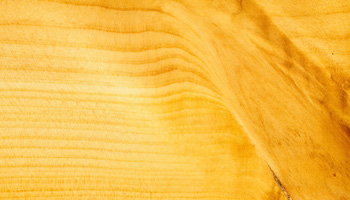
Queensland Kauri | Agathis robusta
Queensland Kauri is an Australian softwood with a fine even texture, pale cream to light or pinkish brown heartwood and a straight grain. Other Names: South Queensland Kauri, Dundathu Pine, Black Kauri, Blue Kauri, Mountain Kauri, North Queensland Kauri, Bull Kauri, Agathis palmerstonii, Agathis atropurpuea, Agathis microstachya. Its species name, Agathis robusta, is derived from its cones, which look like a ball of thread (agathis), combined with its vigorous growth (robusta). An attractive timber suited to many indoor uses, including fine cabinetry, the Queensland Kauri was heavily logged in the early years of European settlement. Large trees are therefore much more rare now than in pre-European times; despite this, the species is not classified as endangered. Queensland Kauri occurs in two localities: in southern Queensland on Fraser Island and around Maryborough; and there is a northern population on the Atherton Tableland west of Cairns. Although these two populations were once given different scientific names (A. robusta in the south and A. spathulata in the north), they have since been discovered to be the same species. Queensland Kauri is a large, coniferous tree with a straight trunk, growing to a height of 25-40 metres with a trunk diameter of between 100 – 200cm. The trunk is clear of branches for over half its length. The characteristically straight and symmetrical trees are covered with smooth to flaky grey-brown bark. Woody scales from collapsing cones gather at the base of these trees. The timber yielded by this species has a fine even texture that is pale cream to light or pinkish brown in hue, with a straight grain. Queensland Kauri withstands some exposure. It dries quickly with little degrade but needs protection against blue stain, microscopic fungi that commonly infest the sapwood of trees. Queensland Kauri timber is commonly used for cabinetwork, turnery, joinery and shelving. It is suitable for use in pattern making, lining, flooring, vats, boxes, battery separators and plywood. It is otherwise used for making furniture and violin bellies.
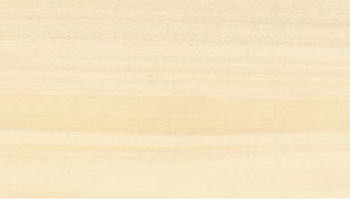
Norway Spruce | Picea abies, syn. P. excelsa
Norway Spruce timber is white to pale yellow in colour with a natural lustre and is used for general construction purposes. Norway Spruce is an economically important coniferous species grown in Europe and North America. It is used widely in general construction. Superior grades are prized as a premium tonewood. Other Names: Nordic Whitewood, Baltic White Pine, White Deal, European Spruce, Romanian Whitewood, White Fir, White Spruce, Violin Wood, Picea excelsa, Carpathian Spruce. Norway Spruce is one of the most economically important coniferous species in Europe, where it is forested for paper production, and for its timber, known as Deal or Whitewood. The timber of this species is flexible and durable. Its relative lightness, long length and straightness make it ideal for telegraph poles, wooden ladders, oars, roofing timbers and paper pulp. Construction grades are commonly used for non-structural applications such as flooring and cladding, inexpensive furniture, joinery and general carpentry. Top-grade Norway Spruce is a premium tonewood prized by luthiers for its acoustic properties; it is a timber of choice for acoustic guitar soundboards. The sapwood of Norway Spruce is white to pale yellow in colour, its heartwood is not always distinguishable but often tinged with brown and reddish-brown hues. Growth rings are prominently marked by the darker, denser summerwood. The grain of Norway Spruce is relatively fine, and typically straight. Knots are clustered together rather than randomly distributed. Timber surfaces often exhibit a slight lustre. Norway Spruce is easy to work, except for the small tight knots that quickly dull tool edges. It glues satisfactorily using standard bonding procedures. Norway Spruce can give poor results when being stained, due to its closed-pore structure. A sanding sealer, gel stain or toner is recommended when colouring Norway Spruce timber. Norway Spruce is resinous, and its sawdust is reported to cause skin irritation and respiratory problems among some users.
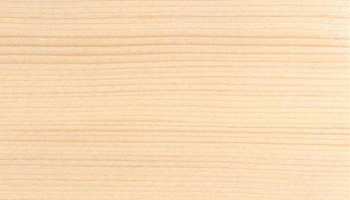
Klinki Pine | Araucaria hunsteinii
Klinki Pine is a Papua New Guinea softwood, used for battery separators, ice cream spoons, joinery and furniture. The heartwood is a straw to yellow brown colour, and texture is fine and even. It is used for battery separators, ice cream spoons, joinery and furniture. Klinki Pine is a Papua New Guinean softwood usually seen as plywood in Australia. It is used for battery separators, ice cream spoons, joinery and furniture. Other Names: Bulolo Pine, Pai, Rassu, Araucaria klinkii, Wau Pine. Klinki Pine is a timber from New Guinea, usually seen only as plywood in Australia. The wood is virtually identical to Hoop Pine, but with a lower density. Like Hoop Pine, the heartwood is a straw to pale brown colour, and the sapwood is not easily distinguishable. The texture is very fine and even, and the grain is straight. Klinki Pine can be distinguished from Hoop Pine by applying a few drops of concentrated hydrochloric acid, which gives the wood an intense green colour. The plywood is used for battery separators, ice-cream spoons and furniture joinery.
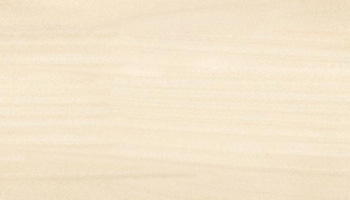
Douglas Fir | Pseudotsuga menziesii
Douglas Fir is softwood timber, finding a range of weather-protected applications in heavy construction. Other common applications include general building framework, flooring, lining, fascias and pergolas. It is also used in joinery, turnery, carving and plywood. Douglas Fir is one of the world’s best-known timber species. Other Names: Oregon Fir, Oregon Pine, Oregon, Green Douglas Fir, Blue Douglas Fir, Columbian Pine, Common Douglas, Coast Douglas Fir. Douglas Fir is one of the world’s best-known timber species. Native to the west coast of North America, it is forested extensively in timber plantations throughout Europe, New Zealand and South America – regions where the species has become naturalised. The heartwood of Douglas Fir ranges in colour from yellow through orange to a deep reddish brown. Sapwood is often distinctively paler, occurring in a band from 50 to 75 millimetres in width, depending on the timber’s source. Grain is generally straight, with a pronounced difference in colour between earlywood and latewood that results in a highly distinctive figure on back-sawn surfaces. Texture is often coarse and uneven. The timber machines and turns well, but planer blades must be kept sharp in order to avoid surface ridging. Care is required with the use of standard fastenings and fittings, as nails may tend to follow the timber’s growth rings. Douglas Fir can be satisfactorily bonded using standard glues and procedures. Due to the timber’s high resin content and occasional earlywood–latewood ridging of the dressed product, care is required in selecting timber for finishing applications and in preparation of surfaces for paints and varnishes. Douglas Fir is only moderately durable, and both sapwood and heartwood resist impregnation with preservatives. The timber lacks termite-resistance and sapwood is susceptible to Lyctid borer attack. Douglas Fir is commonly found as sawn timber in weather-protected heavy construction applications such as mining timbers, posts and poles. Treated pilings and boards are used in marine structures and for landscaping. Other common applications include general house framing, flooring, lining, fascias, bargeboards and pergolas. It is also used in joinery, turnery, carving and plywood.
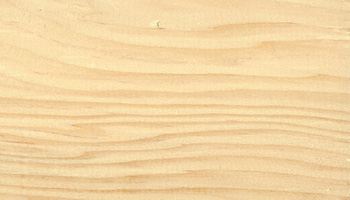
Celery Top Pine | Phyllocladus asplenifolius
Celery Top Pine is a Tasmanian softwood used in boat building, joinery and turnery, and interiors. Celery Top Pine is an attractive, durable and easily worked softwood, pale when cut and then darker with age, used in boat building, joinery and turnery, and interiors. Other Names: Tasmanian Celery Top, Phyllocladus rhomboidalis. The heartwood of Celery Top Pine is pale yellow to pale brown, which darkens to gold as the heartwood ages. The sapwood is narrow and not readily distinguishable. The texture is fine and even and the grain is usually straight, and the growth rings are conspicuous and very close together. The heartwood is durable below and above ground, though it is susceptible to the lyctid borer and is not termite resistant. The strength, durability and ease of working of Celery Top Pine have made it popular in the making of vats (specially for acid storage), garden furniture, joinery, kitchen utensils, turnery, carving, and in boat building.
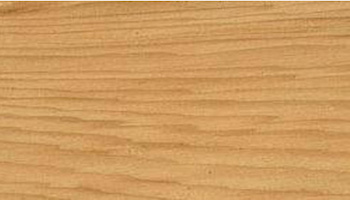
Caribbean Pine | Pinus Caribaea
Caribbean Pine is a yellow-brown, coarse-textured softwood commonly used for construction, engineering and decorative purposes. Other Names: Pinus Hodurensis, Yellow Pine, Caribaea Pine, Caribbean Longleaf, Pitch Pine, British Honduras Pine, Bahamas Pine, Nicaraguan Pitch Pine, Bastard Pine. Caribbean Pine is a softwood widely used for construction, flooring, playground furniture and cladding. Other applications include the production of plywood, wood wool and paper products. The timber is also widely used for engineering purposes, such as power poles and piles. The heartwood of Caribbean Pine is yellow to golden brown, and its sapwood is usually noticeably paler. Its texture is rather coarse and uneven, with latewood and earlywood forming uneven bands, and the grain is usually straight. Knots are present in construction grades. There is a marked difference in colour between earlywood and latewood, which results in a pronounced figure when back sawn. It has a strong resin content and odour, and the resin can lead to problems when the timber is glued and sawn. Caribbean Pine has a low degree of durability above and below ground, and although the sapwood can be treated with preservatives, the heartwood will not readily take preservatives. The timber is termite resistant and the sapwood is not prone to lyctid attack.
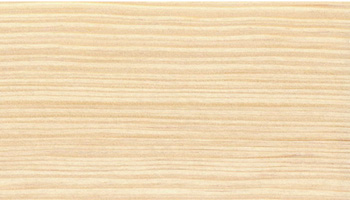
Alaskan Yellow Cedar | Chamaecyparis nootkatensis
Heartwood is a light yellow. Sapwood is a similar whitish/pale yellow and isn’t distinct from the heartwood. Color tends to darken with age upon exposure to light, (though when left exposed outdoors it weathers to a uniform gray). Other Names: Alaskan Yellow Cedar, Nootka Cypress, Cupressus nootkatensis. Reported to be durable to very durable regarding decay resistance, and also resistant to most insect attacks. Common Uses: Carving, boatbuilding, siding, flooring, decking, outdoor furniture, musical instruments (flutes, soundboards on guitars), boxes and chests, and various utility/construction applications. Alaskan Yellow Cedar has more or less always had the species label nootkatensis (so named for the Nuu-chah-nulth people of Canada). But the genus of the tree has been less clearly defined—it’s perhaps one of the woods with the most often-changed and reclassified botanical name. Alaskan Yellow Cedar was initially placed in the Cupressus genus, and later in the Chamaecyparis genus (where it had remained for roughly 160 years). Recent reclassifications have moved it from Chamaecyparis to a newly created genus named Xanthocyparis, and then to Callitropsis, and finally back into Cupressus.
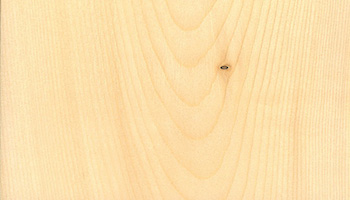
HARD WOOD
The distinction between hardwood and softwood is botanical, rather than referring to the strength or hardness of the wood. Hardwoods are relatively broad-leafed trees with seeds that are produced in an enclosed form, such as a fruit or nut; softwoods are coniferous or cone bearing trees with needle-like leaves. Due to a higher density, hardwood is usually stronger than softwood but this is not always the case; for example, balsa is a hardwood and white cypress is very strong softwood.
Hardwood timbers are ideal for high strength structural applications, such as bearers, joists, lintels and roof beams. The natural durability of most hardwoods also makes them perfect for external applications, such as decking and cladding, and for interior flooring and stairs. Hardwood timbers are also highly recyclable due to their long above-ground life.
Lemonwood | Calycophyllum candidissimum
Heartwood is a light brown to pale yellowish color. Sapwood is lighter in color and isn’t clearly demarcated form the heartwood. Mixed reports depending on type of decay fungi; usually rated as moderately durable. Excellent resistance to marine borers. Common Uses: Archery bows, carvings, turned objects, and fishing rods. Comments: Not to be confused with the wood from actual lemon trees (Citrus limon), which is not regularly used in woodworking applications. Lemonwood is sometimes referred to as Degame. Lemonwood has a very good MOR-to-weight ratio, and generally possesses good strength properties, which explains its use in archery bows and fishing rods. Other Names: Lemonwood, Degame, Calycophyllum candidissimum. Distribution: Cuba and Central America.
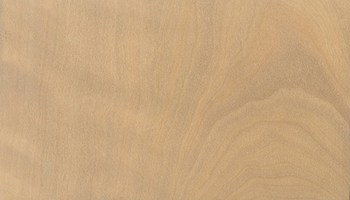
Dogwood | Cornus florida
Most boards and blanks and composed primarily of sapwood rather than heartwood. Narrow heartwood is a reddish brown. Wide sapwood is cream to pale pinkish in color. Other Names: Dogwood, Flowering Dogwood, Cornus florida. Distribution: Eastern North America/ Since there tends to be very little heartwood, Dogwood is usually composed entirely of sapwood, which is considered non-durable to perishable. Also susceptible to insect attack. Common Uses: Golf club heads, textile shuttles, bows (archery), mallets, pulleys, and turned objects. Dogwood has excellent shock resistance, and is one of the hardest domestic woods of the United States or Canada. Its toughness is appreciated in a variety of applications, though its poor dimensional stability means that its use is usually restricted to unglued/unjoined standalone components where it’s expansion and contraction can occur freely.
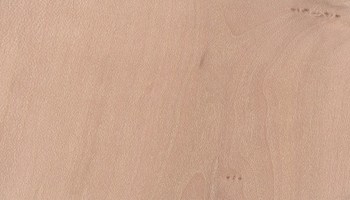
Gaboon Ebony | Diospyros crassiflora
Heartwood is usually jet-black, with little to no variation or visible grain. Occasionally dark brown or grayish-brown streaks may be present. Ebony is rated as being very durable, with good resistance to termites and other insects. Other Names: Gaboon Ebony, African Ebony, Nigerian Ebony, Cameroon Ebony, Diospyros crassiflora. Distribution: Equatorial West Africa. Common Uses: Small/ornamental items, such as piano keys, musical instrument parts, pool cues, carvings, and other small specialty items. There’s no mistaking Gaboon Ebony as there are few woods that are deep and solid black (unless dyed), and even most species in the Diospyros genus aren’t black. Other types of ebony include: Macassar (striped) Ebony, and Black and White Ebony. African Blackwood is very similar in density, color, and (unfortunately) cost, but is technically in the Dalbergia genus and isn’t considered a true ebony. Wenge and Katalox are two woods that are sometimes used as an ebony substitute. The wood is exceptionally dense, strong, and stiff, though it is considered to have moderate to poor stability through seasonal changes.
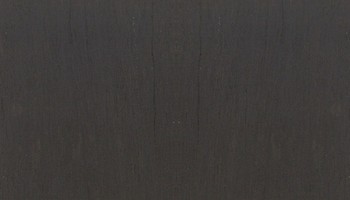
Black and White Ebony | Diospyros embryopteris
Heartwood is a pale straw color, with darker black streaks throughout; some pieces may be predominantly black rather than white. Sapwood is a paler white color, not always clearly defined. Other Names: Black and White Ebony, Pale Moon Ebony, Diospyros malabarica (syn. Diospyros embryopteris, D. peregrina). Distribution: Laos and southeast Asia. No data on durability available, though portions of the wood commonly have insect holes present. Common Uses: Turned objects, inlay, and other small wood projects. Density is reported to vary significantly depending upon the concentration of darker heartwood as compared to the lighter sections.
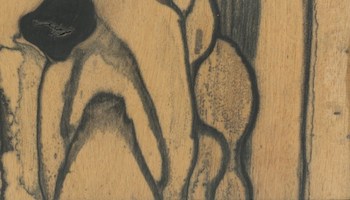
Brown Ebony | Caesalpinia paraguariensis
Heartwood is a dark brown, sometimes with a reddish hue. Pale yellow sapwood is clearly demarcated from heartwood. Distribution: Semi-arid regions of South America. Rated as very durable, though susceptible to insect attack.
Common Uses: Primarily for turned objects; also used for heavy construction within its natural range. Being that the term “ebony” is synonymous with black, the term “Brown Ebony” may be somewhat of a oxymoron. Brown Ebony is not in the Diospyros genus, and isn’t considered a true ebony. Botanically, the wood is actually more closely related to Brazilwood—well known for its use in violin bows.
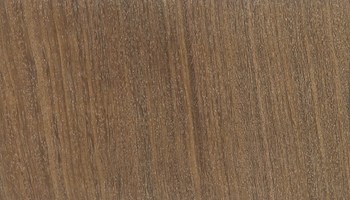
Ceylon Ebony | Diospyros ebenum
Heartwood is a jet black, sometimes with grey or dark brown streaks. Pale yellow sapwood is clearly demarcated from heartwood. Ironically, the very best quality ebony looks like black plastic. Other Names: Ceylon Ebony, East Indian Ebony, Diospyros ebenum. Distribution: Southeast Asia. Portions of black heartwood are very durable regarding decay resistance. Common Uses: Inlay, carving, musical instrument parts (piano keys, bridges, nuts, etc.), and turned objects. Still commonly referred to as Ceylon Ebony because the medium-sized tree reached its best development in Sri Lanka (formerly known as Ceylon). It’s also sometimes referred to as East Indian Ebony or simply Indian Ebony.
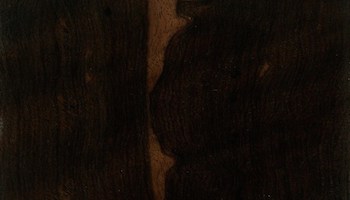
Macassar Ebony | Diospyros celebica
Has a dramatic striped appearance, somewhat similar to Zebrawood. Light to reddish brown body with darker brown or black stripes. Other Names: Macassar Ebony, Striped Ebony. Diospyros celebica. Distribution: Southeast Asia. Heartwood is rated as very durable in resistance to fungi decay, though it is reported to be susceptible to insect attack. Common Uses: Veneer, high-end cabinetry, billiard cues, musical instruments, and other small specialty items. So named for the Indonesian port-city of Makassar, which is one of the primary points of exportation. There’s not much mechanical data available on Macassar Ebony, but judging from its weight, and the properties of
other species such as Diospyros crassiflora, this wood is likely to be exceptionally hard, heavy, and strong.
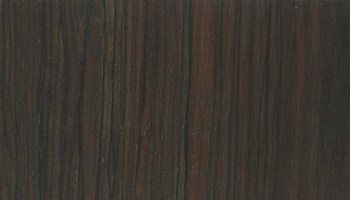
Mun Ebony | Diospyros mun
Heartwood is medium brown, sometimes with a reddish hue, commonly with dark brown to black streaks throughout. Clearly demarcated sapwood is a pale yellow to white. Other Names: Mun Ebony, Vietnamese Ebony, Diospyros mun. Distribution: Laos and Vietnam. Common Uses: Inlay, carvings, veneer, and turned objects.
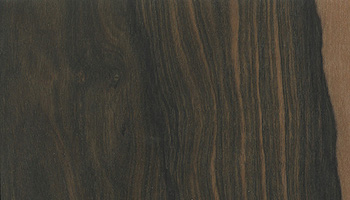
Panga Panga | Millettia stuhlmannii
Heartwood is a very dark brown with black streaks. Upon application of a wood finish (particularly an oil-finish) the wood can become nearly black. Distribution: Africa (Congo, Kenya, Mozambique, Tanzania, Zimbabwe). Very durable, and resistant to termite attack. Common Uses: Panga Panga and Wenge can both be dark enough to be used as substitutes for ebony. Panga Panga is very similar in working properties and appearance to Wenge, and it’s not uncommon for the two species to be used and mixed interchangeably.
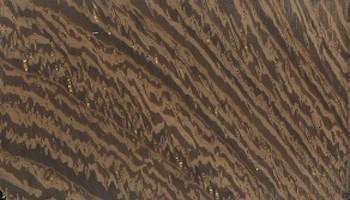
Yellowheart | Euxylophora paraensis
Heartwood color ranges from pale to golden yellow, darkening only slightly with age. Sapwood is a pale yellow/white. Distribution: Brazil. Rated as moderately durable in decay resistance, with mixed reports on its resistance to insect attacks. Common Uses: Flooring, furniture, boatbuilding, accents, and turned objects. Commonly referred to as Pau Amarello— which is Portuguese for “yellow wood”—few woods are as consistent and vibrant a yellow as Yellowheart. The wood is also sometimes sold as Brazilian Satinwood, though it is not to be considered a true satinwood. Yellowheart has an unusually high amount of radial shrinkage when compared to its tangential shrinkage, giving it a remarkably low T/R ratio.
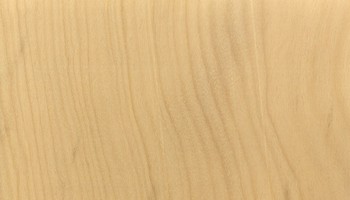
Pau Rosa | Bobgunnia fistuloides
Heartwood tends to vary in color from a pink or yellow to a darker reddish brown, with darker brown streaks common. White to pale yellow sapwood clearly demarcated from heartwood. Color tends to darken with age. Distribution: Small clusters within African rainforests. Rated as very durable regarding decay resistance, and is also resistant to insect attack. Pau Rosa has good weathering characteristics in outdoor applications. Common Uses: Veneer, carvings, furniture, turned objects, and other small, specialty wood items. Formerly classified in the Swartzia genus along with Katalox and Wamara, Pau Rosa has since been placed into its own genus, Bobgunnia. Pau Rosa is one of only a handful of woods that have the potential of being nearly rainbow-colored; its appearance is reminiscent of Tulipwood or Canarywood.

Paulownia | Paulownia tomentosa
Heartwood typically a pale grayish brown, sometimes with a reddish or purplish hue. Pale white sapwood not clearly demarcated from heartwood. Overall appearance (both the wood and the tree itself) is not too unlike Catalpa, another lightweight and porous hardwood. Other Names: Paulownia, Royal Paulownia, Princess Tree, Kiri, Paulownia tomentosa. Distribution: Native to eastern Asia; also planted in eastern North America. Reported to be durable regarding decay resistance, with decent weathering characteristics, though susceptible to insect attack. Common Uses: Plywood, veneer, furniture, boxes, millwork/siding, musical instruments (electric guitar bodies), clogs, carvings, and other small specialty items. Paulownia is used in applications where a lightweight (yet proportionately strong) wood is needed. It’s widely used in Japan for construction of the koto (a stringed musical instrument), as well as other household items, where the wood is referred to as Kiri. Paulownia is one of the fastest growing trees in the world, capable of growth rates of well over seven feet per year as a seedling! But while it’s highly appreciated and cultivated in Asia, Paulownia has come to be considered an invasive species in the United States.
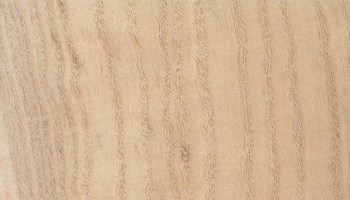
Pear | Pyrus communis
Heartwood is a pale pink or light reddish brown. Sapwood is slightly paler but is not usually distinct from heartwood. Pear is sometimes steamed to deepen the pink coloration. Pear is also occasionally dyed black and used as a substitute for ebony. Other Names: Pear, Swiss Pear, Pyrus communis. Distribution: Native to central and eastern Europe; also widely planted throughout temperate regions worldwide. Rated as non-durable regarding decay resistance. Common Uses: Veneer, architectural millwork, marquetry, inlay, carving, musical instruments, furniture, cabinetry, and turned objects. It’s been said that Pear is used in Europe much in the same way that Black Cherry is used in the United States: as a popular and high-quality domestic hardwood.
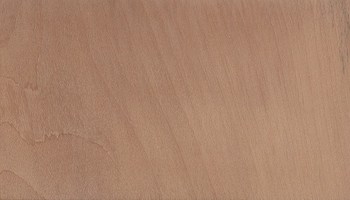
Pecan | Carya illinoinensis
Heartwood tends to be light to medium brown, with a reddish hue; sapwood is a paler yellowish brown. Distribution: South-central United States and Mexico. Considered to be non-durable to perishable regarding heartwood decay, and also very susceptible to insect attack. Common Uses: Tool handles, ladder rungs, wheel spokes, and flooring. Pecan has slightly lower strength values than some of the other species of Hickory, but it is still among the hardest and strongest of woods native to the United States. The wood is commonly used where strength or shock-resistance is important. As the common name implies, Carya illinoinensis is the tree responsible for producing Pecan nuts commonly used in snacks and cooking recipes, and is the state tree of Texas. Pecan falls into the Pecan-Hickory grouping, which tends to be slightly stabler but weaker than the True-Hickories, and is considered to be a semi-ring-porous wood. The strength characteristics of Pecan are somewhat influenced by the spacing of its growth rings. In general, wood from faster-growing trees, with wider spaced growth rings, tends to be harder, heavier, and stronger than wood from slower-growing trees that have rings which are closer together. In addition to strength and hardness applications, the wood of Carya species also has a very high thermal energy content when burned, and is sometimes used as fuelwood for wood stoves. Additionally, Pecan is also used as charcoal in cooking meat, with the smoke imparting additional flavor to the food.
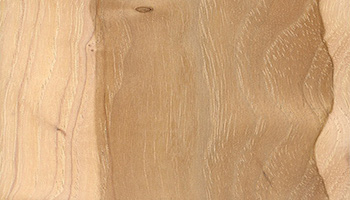
Persimmon | Diospyros virginiana
Very wide sapwood is a white to pale yellowish-brown. Color tends to darken with age. Very thin heartwood (usually less than 1? wide) is dark brown to black, similar to ebony. (Persimmon is in the same genus
—Diospyros—as true ebonies.) Other Names: Persimmon, White Ebony, Diospyros virginiana. Distribution: Eastern United States. Being that nearly all of Persimmon is sapwood, it is rated as perishable and is susceptible to insect attack. Common Uses: Turned objects, golf club heads, veneer, and other small specialty wood items. Persimmon trees are known much more commonly for their fruit, and not their wood. Persimmon is technically related to true ebonies (Diospyros genus), and is therefore sometimes referred to as “white ebony.” Persimmon wood is heavy, hard, and strong for a temperate species. It has excellent shock and wear resistance, but has a very high shrinkage rate, and may experience significant movement in service.
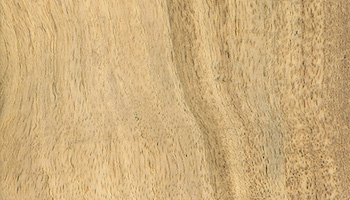
Pheasantwood | Senna siamea)
Heartwood is a medium to dark brown, to nearly black, with ligher brown contrasting stripes, sometimes with a red or yellow hue. The striping is due to very wide parenchyma bands, which can give it an appearance somewhat similar to Wenge, though Pheasantwood’s stripes tend to be lighter and with better contrast, especially once a finish has been applied. Distribution: Native to South/Southeast Asia, widely planted throughout the tropics. Rated as durable, though susceptible to insect attack. Common Uses: Musical instruments (ukeleles and guitars), turned objects, carvings, and other small specialty wood items. So named for the wood’s resemblance to the coloration and patterns found on the tail-feathers of pheasants. Pheasantwood exhibits the most figure on flatsawn sections of wood.
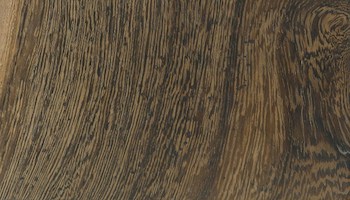
Dalmata | Cynometra spruceana
Heartwood is medium reddish brown, with dark brown to black streaks and veining. Distribution: South America. Common Uses: Turned objects, boxes, knife handles, and other small specialty wood items.
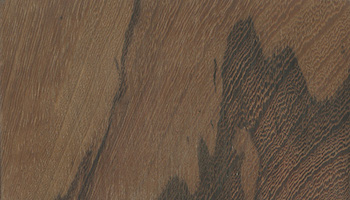
Sweet Chestnut | Castanea sativa
Heartwood is a light to medium brown, darkening to a reddish brown with age. Narrow sapwood is well-defined and is pale white to light brown. Other Names: Sweet Chestnut, Spanish Chestnut, European Chestnut, Castanea sativa. Distribution: Europe and Asia Minor. Rated as durable to very durable, though susceptible to insect attack. Common Uses: Furniture, veneer, and carvings. This tree is widely cultivated for the edible seeds which it produces.
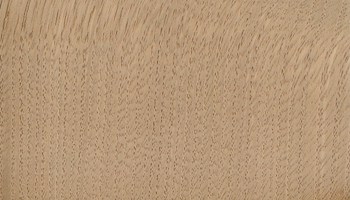
Chico Zapote | Pouteria sapota
Color ranges from a pink or red to a darker reddish brown. Pale yellowish sapwood gradually transitions to heartwood. Gum pockets are commonly found in this wood. Other Names: Chico Zapote, Zapote, Mamey Sapote, Pouteria spp. (P. sapota). Distribution: Southern Mexico and Central America. Reported to have outstanding durability and insect resistance. Common Uses: Cabinetry, furniture, utility wood (within its natural range), turned objects, and other small specialty wood items. This gum of the tree’s bark is used for chewing gum and other candies, and the tree is primarily known for its fruit, not its lumber. The tree is usually called Mamey Sapote.
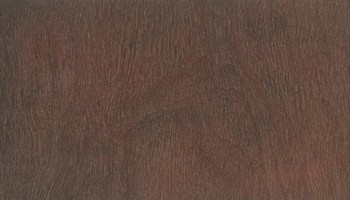
Chinaberry | Melia azedarach
Color can range from a light pinkish orange to a deeper reddish brown. Color becomes darker upon prolonged exposure to light. Well-defined sapwood is a lighter yellow. Distribution: Southern Asia, Australia and Oceania. There are many conflicting reports on Chinaberry’s durability. The heartwood is generally considered at least moderately durable, and somewhat resistant to insect attack. Common Uses: Veneer, carvings, furniture, and turned objects. Sometimes called “Persian Lilac,” though the name usually rather refers to a hybrid lilac in the Syringa genus. Chinaberry is not closely related to true lilacs, but is rather related to the various types of Mahogany in the
Meliaceae family. Chinaberry is a potentially commercially valuable timber tree throughout its natural range in Asia, though perhaps under-utilized and under-appreciated. Chinaberry has also been introduced in the southeastern United States as an ornamental tree, though it’s now considered by many to be an invasive species.
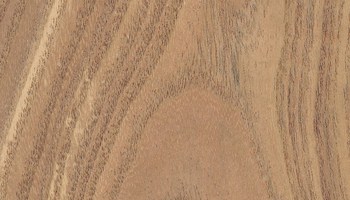
Cocobolo | Dalbergia retusa
Cocobolo can be seen in a kaleidoscope of different colors, ranging from yellow, orange, red, and shades of brown with streaks of black or purple. Sapwood is typically a very pale yellow. Colors are lighter when freshly sanded/cut, and darken with age. Distribution: Central America. Rated as very durable, and also resistant to insect attack. Its natural oils are reported to give it good resistance to degrade from wet/dry cycles. Common Uses: Fine furniture, musical instruments, turnings, and other small specialty objects. One of today’s most prized lumbers for its outstanding color and figure; yet also one of the most infamous for its difficulty in gluing, and its tendency to cause allergic reactions in woodworkers. Also, there are a few misleading reports of Cocobolo’s Janka hardness being only about 1,100 lbf, and it’s modulus of elasticity at only about 1,100,000 lbf/in2: which is almost certainly either a typo or a different wood than what is commonly called Cocobolo (Dalbergia retusa).
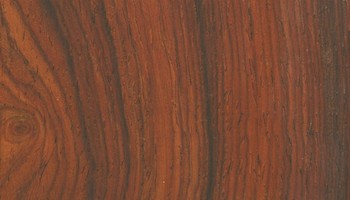
Kentucky Coffeetree | Gymnocladus dioicus
Heartwood an orange to reddish brown. Yellowish white sapwood is very narrow and well defined against heartwood. Overall appearance and grain pattern similar to ash or oak. Distribution: Eastern North America. Reports range from moderately durable to very durable regarding decay resistance, and is reported to fare well in direct ground contact. Reports are mixed on resistance to insect attack. Common Uses: Furniture, cabinetry, fence posts, and utility wood. So named because early settlers (particularly in the state of Kentucky) used roasted seeds from this tree to make a coffee substitute. Today, no such use is made of the tree’s seeds, but the wood is sometimes
harvested and used for a variety of general construction purposes. Along with Black Locust and Honey Locust, Coffeetree is one of the most fluorescent woods when viewed under a blacklight, glowing a bright yellowish green.
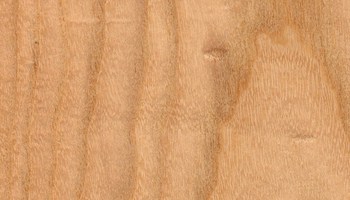
Eastern Cottonwood | Populus deltoides
Heartwood tends to be a light brown. Sapwood is a pale yellow to nearly white, and isn’t clearly demarcated, tending to gradually blend into the heartwood. Distribution: Central and eastern United States. Rated as non-durable, and also susceptible to insect attack. Common Uses: Boxes/crates, veneer, plywood, and various utility purposes. So named for its cotton-like strands that accompany the tree’s seeds in the spring. Eastern Cottonwood is the state tree of Kansas and Nebraska, and is sometimes called the pioneer of the prairie; pioneers on the Oregon Trail would look for such trees, as their shade and firewood was a welcome respite, and their presence usually meant that water was nearby.
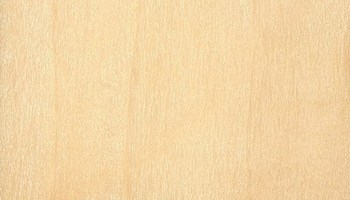
Cumaru | Dipteryx odorata
Heartwood tends to be a medium to dark brown, sometimes with a reddish or purplish hue; some pieces may have streaks of yellowish or greenish brown. Other Names: Cumaru, Brazilian Teak, Dipteryx odorata. Distribution: Northern South America. Cumaru has excellent durability and weathering properties. The wood is rated as very durable regarding decay resistance, though it may be susceptible to some insect attacks. Common Uses: Flooring, cabinetry, furniture, heavy construction, docks, railroad ties, bearings, handles, and other turned objects. Wood of the species Dipteryx odorata is most commonly called Cumaru among most woodworkers, though it is sometimes referred to as Brazilian Teak as well: primarily when used as hardwood flooring. (Brazilian Teak is not related to the wood that is most commonly called Teak, Tectona grandis.) Cumaru is also called by the name Tonka Bean, and the tree is commonly cultivated for its vanilla-cinnamon scented seed—the tonka bean—which contains a chemical compound called coumarin. Cumaru lumber is extremely stiff, strong, and hard, lending itself well to a variety of applications. It is sometimes used in place of the much more scarce Lignum Vitae. The heartwood fluoresces under a blacklight, which can help distinguish it from Ipe.

Wild Cherry | Prunus avium
Heartwood is a light pinkish brown when freshly cut, darkening to a deeper golden brown with time and upon exposure to light. Heartwood is rated as being moderately durable to non-durable regarding decay resistance. Wild Cherry is also susceptible to insect attack. Other Names: Wild Cherry, European Cherry, Prunus avium. Distribution: Europe and Asia. Common Uses: Veneer, furniture, cabinetry, turned objects, musical instruments, and carvings. Comments: Wild Cherry is the Old World counterpart to Black Cherry found in the New World. Wild Cherry is said to exhibit a bit more of a color contrast than Black Cherry, and it also tends to be slightly denser and stronger. However, the tree itself tends to be smaller than Prunus serotina, and does not yield the larger sizes of lumber that are available for the American species.

Osage Orange (Maclura pomifera)
Heartwood is golden to bright yellow, which inevitably ages to a darker medium brown with time: primarily due to exposure to ultraviolet light. Osage Orange is extremely durable and is considered to be one of the most decay resistant woods in North America. Common Uses: Fence posts, dye, archery bows, musical instruments, turnings, and other small specialty wood items. Other Names: Osage Orange, Horse Apple, Hedge Apple, Bois d’arc, Maclura pomifera. Distribution: South-central United States. Osage Orange has a relatively low modulus of elasticity compared to its weight and modulus of rupture which helps explain why it is sometimes used for archery bows. It’s sometimes called Bois d’arc, which literally means “bow wood” in American French.The wood is also very stable, with little seasonal/environmental movement. One helpful characteristic that can help separate it from lookalikes such as Mulberry or Black Locust (besides being heavier) is that Osage Orange contains a water-soluble yellow dye, so putting shavings into water will turn the water yellow. Commonly, the wood of a related South-American species—Maclura tinctoria—is imported as Argentine Osage Orange. This imported wood has the advantage of being available in larger sizes, with boards having less knots and defects than the smaller domestic species, Maclura pomifera.
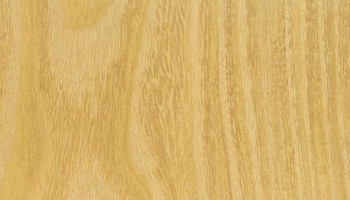
Argentine Osage Orange | Maclura tinctoria
Heartwood is golden to bright yellow, which almost certainly ages to a darker medium brown with time: primarily due to exposure to UV light. Other Names: Argentine Osage Orange, Fustic, Maclura tinctoria (syn. Chlorophora tinctoria, Morus tinctoria). Distribution: Tropical America (West Indies, Central and South America). A Guatemalan variant exists which is sometimes called “Guatemalan Tigerwood” or “Mora” (not to be confused with Mora excelsa, which also goes by the common name of Mora) which is light to medium reddish brown, with streaks of lighter and darker material. Argentine Osage Orange is very durable and has good weathering characteristics; it is also resistant to termites. Common Uses: Heavy construction (within the tree’s natural range), flooring, furniture, turnings, and other small specialty wood items. Argentine Osage Orange is known by a host of names throughout its natural range in South America, though historically the wood has been known in English as Fustic. However, because of its close relation and similar working properties to Osage Orange (Maclura pomifera) found in North America, merchants of imported hardwoods have referred to this wood as Argentine Osage Orange.
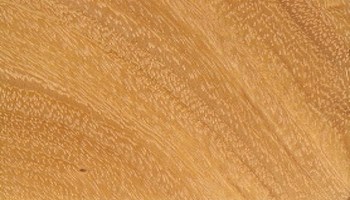
This imported wood tends to be available in larger sizes, and with less knots or twists than the domestic species. (Though it appears, at least on paper, that Maclura pomifera has a lower modulus of elasticity, making it more flexible—which may be good or bad depending upon the intended application.) Perhaps one of the most confusing names in modern hardwood commerce is the selling of a Guatemalan variety of Osage Orange—which looks vastly different than the traditional yellow color—that’s being marketed as “Mora.” Unfortunately, the common name Mora has traditionally been used for an unrelated wood found in northern South America (not found in Guatemala) known by the scientific name Mora excelsa. Argentine Osage Orange is sometimes called Fustic because the wood contains a yellow dye called fustic—which has historically been used in making brown, yellow, and green colored dyes for fabric.
African Padauk | Pterocarpus soyauxii
Heartwood color can vary, ranging from a pale pinkish orange to a deep brownish red. Most pieces tend to start reddish orange when freshly cut, darkening substantially over time to a reddish/purplish brown. Distribution: Central and tropical west Africa. Padauk’s initial orange coloration can be preserved through various finishing procedures. Has excellent decay resistance, and is rated as durable to very durable. Padauk is also reported to be resistant to termites and other insects. Common Uses: Veneer, flooring, turned objects, musical instruments, furniture, tool handles, and other small specialty wood objects. Padauk has a very unique reddish orange coloration. Unfortunately, this dramatic color is frequently lost due to improper or inadequate finishing. If finished properly, the orange color can be preserved for many years with little to no signs of degradation. Padauk is moderately heavy, strong, and stiff, with exceptional stability. It’s a popular hardwood among hobbyist woodworkers because of its unique color.

Andaman Padauk | Pterocarpus dalbergioides
Heartwood color can vary, ranging from a pale pinkish orange to a deep brownish red. Most pieces tend to start reddish orange when freshly cut, darkening substantially over time to a reddish/purplish brown. Distribution: Andaman Islands. Padauk’s initial orange coloration can be preserved through various finishing procedures. Rated as very durable regrading decay resistance, with good resistance to termites and other insects. Common Uses: Veneer, flooring, turned objects, musical instruments, furniture, tool handles, and other small specialty wood objects. Historically, this species was one of the primary contributors of the reddish orange wood called “Vermillion”—much more commonly referred to as “Padauk” today. Currently African Padauk provides nearly all of the world’s supply of Padauk, with Andaman Padauk supplies being greatly depleted.
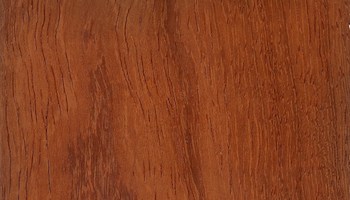
Burma Padauk | Pterocarpus macrocarpus
Heartwood color can vary, ranging from a pale golden yellow to a deeper reddish brown. Color tends to darken to a golden brown over time. Yellow sapwood is well demarcated from heartwood. Overall, Burma Padauk’s color tends to be less red and more subdued than African Padauk. Distribution: Myanmar (formerly Burma), and Thailand. Rated as very durable regrading decay resistance, with good resistance to termites and other insects. Common Uses: Veneer, flooring, turned objects, musical instruments, furniture, tool handles, and other small specialty wood objects. Burma Padauk is the heaviest and hardest of all types of Padauk (Pterocarpus genus) commercially available. The color tends to be a bit more subdued than the more common African variety.
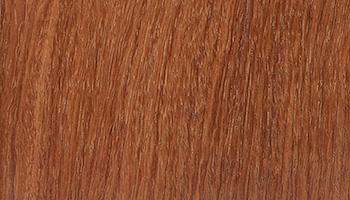
American Chestnut | Castanea dentata
Heartwood is a light to medium brown, darkening to a reddish brown with age. Narrow sapwood is well-defined and is pale white to light brown. Wormy Chestnut is also seen, which is chestnut that has been damaged by insects, leaving holes and other discoloration in the wood. Distribution: Eastern United States. Rated as very durable, though many trees killed by the chestnut blight of the early 1900s were left standing and eventually were damaged by insects. Common Uses: Flooring, rustic furniture, shingles, and reclaimed lumber. Wormy Chestnut is not a distinct species of Chestnut, but rather refers to trees that were killed by the chestnut blight of the early 1900s, caused by an accidentally introduced Asian bark fungus (Cryphonectria parasitica); the wood was subsequently damaged by insects, leaving holes and discoloration in the standing trees. The trees were then subsequently harvested and converted into lumber. Between the nail holes, discoloration, worm and insect damage, Wormy Chestnut is preferred in applications where a rustic or unpolished appearance is desired.
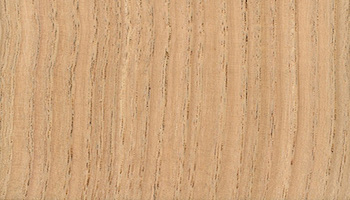
Horse Chestnut | Aesculus hippocastanum
Heartwood is creamy white or yellowish brown, not clearly demarcated from the white sapwood. Horse Chestnut has poor decay resistance, and is rated as non-durable to perishable. Common Uses: Veneer, furniture, plywood, interior trim, and turned objects. Distribution: Eastern Europe. Despite its name, Horse Chestnut is not closely related to the wood that has traditionally been referred to as Chestnut in the Castanea genus. It’s actually related to its American counterpart in the Aesculus genus, Buckeye.
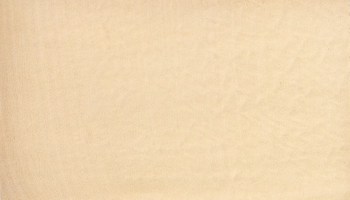
Chechen | Metopium brownei
Heartwood color is highly varied, with red, orange, and brown contrasted with darker stripes of blackish brown. Color tends to shift to a darker reddish brown with age. Rated as being very durable, and moderately resistant to most insect attacks. Other Names: Chechen, Chechem, Black Poisonwood, Caribbean Rosewood, Metopium brownei. Distribution: Dominican Republic, Cuba, Jamaica, northern Guatemala, Belize, and southeastern Mexico. Common Uses: Veneer, furniture, cabinetry, flooring, turned objects, and small specialty wood items. Its alternate name, Black Poisonwood, comes from its toxic sap, which turns black and causes severe skin reactions similar to poison ivy—and both are classified in the same family: Anacardiaceae. However, the wood itself is safe to handle, though there are some allergenic reactions associated with the wood dust. Because of its density, natural luster, and beautiful coloration, Chechen is sometimes referred to as Caribbean Rosewood, though it is not a true rosewood in the Dalbergia genus.
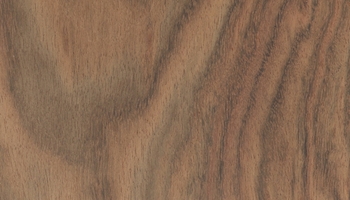
Olive | Olea europaea)
Heartwood is a cream or yellowish brown, with darker brown or black contrasting streaks. Color tends to deepen with age. Olive is somtimes figured with curly or wavy grain, burl, or wild grain. Other Names: Olive, Olea spp. (Olea europaea, O. capensis). Distribution: Europe and eastern Africa. Conflicting reports range from non-durable/perishable to durable/moderately durable. Olive is susceptible to insect attack. Common Uses: High-end furniture, veneer, turned objects, and small specialty wood items. Olive trees are commercially important throughout the natural regions where they grow. There are several subspecies and hundreds of cultivars of Olea europaea; the olives harvested from the trees are made into olive oil.
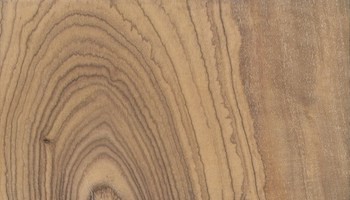
Russian Olive | Elaeagnus angustifolia)
Color ranges from a light yellowish-brown to a darker golden brown, sometimes with a greenish hue. Sapwood a much lighter yellow-white. Distribution: Native to eastern Europe and western and central Asia; naturalized throughout North America. Common Uses: Knife scales, bowls, pens, and other small woodturning projects. Considered to be an invasive species in the United States, Russian Olive is not closely related to the wood that is commonly referred to as Olivewood (Olea europaea).
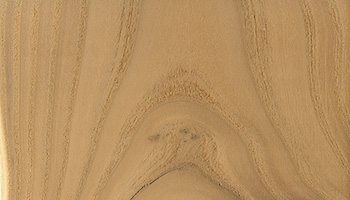
Black Cherry | Prunus serotina
Heartwood is a light pinkish brown when freshly cut, darkening to a deeper golden brown with time and upon exposure to light. Sapwood is a pale yellowish color. Other Names: Black Cherry, Cherry, American Cherry, Prunus serotina. Distribution: Eastern North America. Heartwood is rated as being very durable and resistant to decay. Common Uses: Cabinetry, fine furniture, flooring, interior millwork, veneer, turned objects, and small specialty wood items. Cherry has a decent strength-to-weight ratio, though it’s not as hard as some other denser domestic hardwoods. Cherry is commonly used in furniture construction and turned items. It is said that Cherry’s colors can
quickly be darkened and aged by exposing it to direct sunlight.
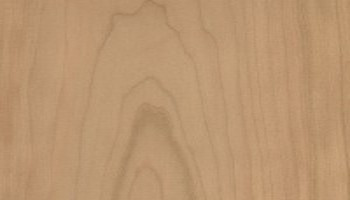
Jatoba | Hymenaea courbaril
Heartwood varies from a light orangish brown to a darker reddish brown, sometimes with contrasting darker grayish brown streaks. Color tends darken upon exposure to light. Sapwood is a light grayish yellow, clearly demarcated from the heartwood. Other Names: Jatoba, Brazilian Cherry, Hymenaea courbaril. Distribution: Central America, southern Mexico, northern South America, and the West Indies. Jatoba is rated as being very durable in regards to rot resistance, and is also resistant to termites and most other insects. Common Uses: Flooring, furniture, cabinetry, tool handles, shipbuilding, railroad ties, turned objects, and other small specialty items. Although it’s widely named “Brazilian Cherry,” (mostly among flooring sellers), it bears little relation to the domestic Cherry (Prunus serotina) that is found in the US, except perhaps that its natural color closely matches the common stained color of domestic Cherry that has been aged/stained reddish-brown as seen on some interior furniture. Jatoba is exceptionally stiff, strong, and hard—representing a great value for woodworkers seeking high-strength, low-cost lumber.
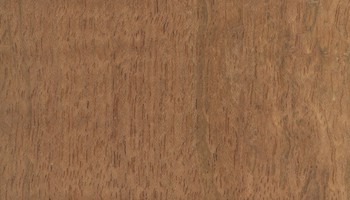
Tiete Rosewood | Guibourtia hymenaeifolia
Generally an orange to pinkish brown. Color tends to darken and redden with age. Grain is typically straight with bland patterning, exhibiting a very uniform color and appearance. Other Names: Tiete Rosewood, Patagonian Cherry, Sirari, Guibourtia hymenaeifolia (syn. G. chodatiana). Distribution: South America. No specific data is available on the decay resistance of Tiete Rosewood, but tests have shown that untreated wood used in exterior applications has a tendency to warp and check. Common Uses: Interior flooring, turned objects, and other small specialty wood items. Not a true rosewood (Dalbergia genus), Tiete Rosewood is actually more closely related to Bubinga. This wood has benefitted from a variety of flattering (and often misleading) trade names, and in addition to being called a rosewood, it’s sometimes sold (usually as flooring) as Patagonian Cherry, even though it isn’t related to Cherry (Prunus spp.) either. One of the only common names that isn’t deceptive is Sirari, which may be applied to a number of South American hardwoods, creating further confusion.
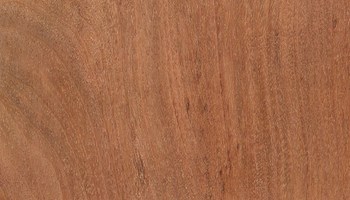
Butternut | Juglans cinerea
Heartwood is usually a light to medium tan, sometimes with a reddish tint. Growth rings are darker and form fairly distinct grain patterns. Sapwood is a pale yellowish white. Other Names: Butternut, White Walnut, Juglans cinerea. Distribution: Eastern United States. Decay resistance is rated as moderately durable to non-durable.; also susceptible to insect attack. Common Uses: Veneer, carving, furniture, interior trim, boxes, and crates. Sometimes called White Walnut, Butternut is indeed closely related to Black Walnut. While the difference is not black and white, the wood of Butternut is considerably lighter-colored than Black Walnut, as well as being very soft and lightweight. Butternut trees can be distinguished from Black Walnut by looking at its fruit: Butternut’s fruit is more oblong or oval shaped, while Walnut is nearly round. The commercial potential of Butternut’s edible fruit (nuts) is generally regarded as being more valuable than its lumber. (Butternuts are not related to Butternut squash, which comes from an unrelated plant—Cucurbita moschata.)
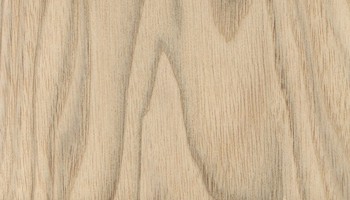
Canarywood | Centrolobium spp.
Heartwood color can vary a fair amount, from a pale yellow-orange to a darker reddish brown, usually with darker streaks throughout. Pale yellow sapwood is sharply demarcated from heartwood. Color tends to
darken and homogenize with age. Other Names: Canarywood, Canary, Centrolobium spp. Distribution: South America (from Panama down to southern Brazil). Rated as very durable in regard to decay resistance, as well as being resistant to termite and marine borer attack. Common Uses: Construction lumber, railroad crossties, flooring, veneers, boatbuilding, furniture, cabinetry, and turned items. Some pieces of Canarywood can be almost rainbow colored—with dark red streaks, along with the natural orange, yellow, and brown coloration. Canarywood is said to have good acoustic properties, and is sometimes used for speaker enclosures and entertainment system cabinets. a
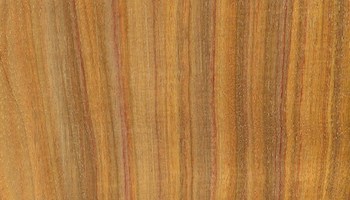
Cebil | Anadenanthera colubrina
Heartwood is a pale to medium reddish brown, frequently with darker brown to black streaks throughout. Color tends to darken with age. Sapwood is a pale yellow to pinkish brown. Other Names: Cebil, Curupay, Anadenanthera colubrina (syn. Anadenanthera macrocarpa). Distribution: Argentina, Brazil, and Paraguay. Rated as very durable. Resistant to termites, though more susceptible to other insect attacks. Common Uses: Flooring, exterior construction, furniture, and turned objects. Sometimes sold as Curupay by lumber dealers, or by the exaggerated name Patagonian Rosewood by flooring dealers, Cebil is a dense hardwood with a highly variable streaked appearance not too unlike Goncalo Alves (Astronium graveolens).
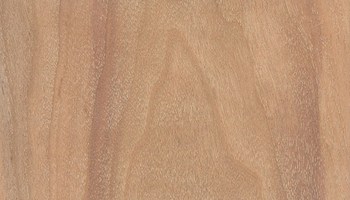
Spanish Cedar | Cedrela odorata
Heartwood is a relatively uniform light pinkish to reddish brown; colors tend to darken with age. Random pockets of gum and natural oils are commonly present. Grain patterning and figure tends to be somewhat bland. Other Names: Spanish Cedar, Cedro, Cedrela odorata. Distribution: Native to Central and South America and the Caribbean; also grown on plantations. Spanish Cedar ranges from durable to moderately durable regarding decay resistance, and is also resistant to termite attack; the wood is also reported to have excellent weathering characteristics. Older, slower-growing trees from the wild tend to produce wood that is more durable than wood from younger, plantation-grown trees. Common Uses: Veneer, plywood, cabinetry, musical instruments, (flamenco and classical guitars), humidors, and boatbuilding. A historically valuable Latin-American timber, Spanish Cedar has been exploited in many regions, and the species is now considered to be vulnerable. Not a true cedar, Spanish Cedar is actually more closely related to true Mahoganies (Swietenia and Khaya genera), as both are in the Meliaceae family. Density and mechanical properties can vary widely depending on country of origin and growing conditions. Some of the wood available at present comes from plantations: where younger, faster-growing trees, produce wood that is lower in density, and paler in color than wood cut from trees taken from forests in the wild.
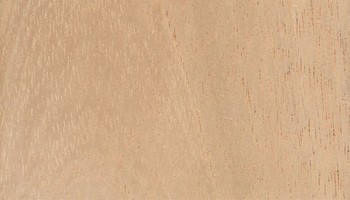
Redheart | Erythroxylon mexicanum
Aptly named, in some instances freshly surfaced Redheart can be a very bright, watermelon red—though color can vary in intensity and hue from board to board: anywhere from a light orange/pink, (similar to Pink
Ivory), to a darker brownish red. In some cases, it can look quite similar to Bloodwood, though usually with a more visible and figured grain pattern. Redheart’s vibrant color quickly fades to a reddish brown in direct sunlight, though
this color change can be slowed (but usually not stopped entirely) by using a finish with UV inhibitors, and keeping the wood away from strong lighting.Other Names: Redheart, Chakte Kok, Erythroxylum spp. (syn. Erythroxylon spp.) and Simira spp. (syn. Sickingia spp.). Distribution: Southern Mexico to southern Brazil and Paraguay. Although Chakte Kok and Redheart are from two different genera, (Simira and Erythroxylum, respectively) the working properties and appearance of the two are so close, and both have so poorly documented scientific data, the two different species and genera have been combined on this page for the sake of simplicity and consolidation. Wood
retailers will sometimes sell the two woods interchangeably.
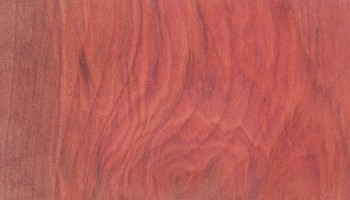
Swamp White Oak | Quercus bicolor
Has a light to medium brown color, though there can be a fair amount of variation in color. Conversely, Red Oak tends to be slightly redder, but is by no means a reliable method of determining the type of Oak. Distribution: Eastern and Midwestern United States. Swamp White Oak has been rated as having very good resistance to decay. Common Uses: Cabinetry, furniture, interior trim, flooring, boatbuilding, barrels, and veneer. Swamp White Oak falls into the white oak group, and shares many of the same traits as White Oak (Quercus alba). White Oak, along with its brother Red Oak, are commonly used domestic lumber species. Hard, durable, and moderately priced, White Oak presents an exceptional value to woodworkers—which explains why it is so widely used in cabinet and furniture making.
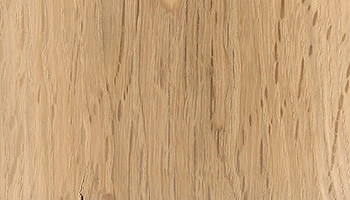
Brazilwood | Caesalpinia echinata
Heartwood is a yellowish orange, sometimes a darker reddish brown. Whitish yellow sapwood is clearly demarcated. Other Names: Brazilwood, Pernambuco, Caesalpinia echinata (syn. Guilandina echinata). Distribution: Brazil. Brazilwood is rated as very durable regarding decay resistance. Common Uses: Stringed instrument bows (violin, viola, cello, etc.), veneers, inlay, carvings, and turned objects. Perhaps the only wood that was so famous, it was responsible for the naming of an entire nation. When Portuguese ships discovered the trees on the coast of South America, they found that the wood yielded a red dye – which made for a very valuable and lucrative trading commodity. They named the tree pau brasil, the term pau meaning wood, and brasil meaning red/ember-like. Such a vigourous trade resulted from this wood that early sailors and merchants referred to the land itself as Terra do Brasil, or simply, the “Land of Brazil”—and the name stuck. Brazilwood is also known as “Pernambuco” to bow-makers. With Brazilwood already at a historically depleted level from the exploitation for its dye wood, today’s global demand for violin bows have pushed the tree species to dangerously low levels in its natural range. There’s no other known wood that matches Brazilwood’s quality and acoustic properties in bow-making, creating a dilemma for bow-makers.
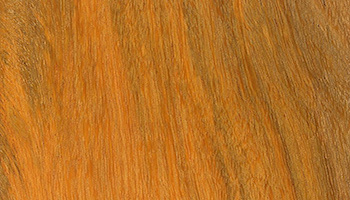
Briar | Erica arborea
In pipe-making, there are two types of burl sections: ebauchon, and plateaux. Ebauchon burl blocks are usually rectangular in shape and cut from the center of the burl. They tend to have a more random grain pattern and are the least expensive. Plateaux burl blocks are cut from the outer edge of the burl, and are usually in a quarter-round shape which still includes the bark on the outside edge. They tend to have a more consistent grain pattern, and are more expensive than ebauchon burl blanks. Other Names: Briar (burl types: plateaux and ebauchon), Erica arborea. Distribution: Europe (Mediterranean region). Common Uses: Tobacco pipes, knife handles, and other small specialty wood items. Briar burl is the tumor-like growths between the roots and stem of the shrub. The wood has very good heat-resistance properties, and is favored for use in making the bowls for tobaccos pipes.
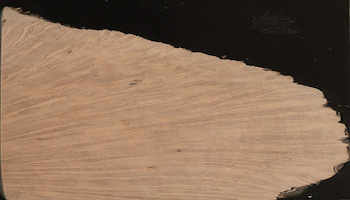
Bubinga | Guibourtia spp.
Heartwood ranges from a pinkish red to a darker reddish brown with darker purple or black streaks. Sapwood is a pale straw color and is clearly demarcated from the heartwood. Bubinga is very frequently seen with a variety of figure, including: pommele, flamed, waterfall, quilted, mottled, etc. Other Names: Bubinga, Kevazingo, Guibourtia spp. (G. demeusei, G. pellegriniana, G. tessmannii, etc.). Distribution: Equatorial Africa. Common Uses: Veneer, inlays, fine furniture, cabinetry, turnings, and other specialty items. Since Bubinga trees can grow so large, natural-edge slabs of the wood have also been used in tabletops and other specialized projects. An immensely popular imported African hardwood, Bubinga may be loved as much for its quirky name as it is for its strength and beauty. Also sometimes called Kevazingo, usually in reference to its decorative rotary-cut veneer. Bubinga has a close resemblance to rosewood, and is often use in place of more expensive woods. Yet Bubinga also features a host of stunning grain figures, such as flamed, pommele, and waterfall, which make this wood truly unique. Bubinga also has an exceptional strength-to-weight ratio.
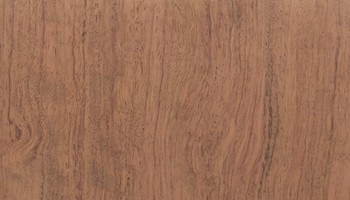
Buckthorn | Rhamnus cathartica
Heartwood is a yellowish-orange, sometimes with darker red or brown streaks. Sapwood is a pale off-white or straw color. Buckthorn’s overall color is close to the appearance of Canarywood. Other Names: Buckthorn, Rhamnus spp. (Rhamnus cathartica, R. purshiana, etc.). Distribution: Widespread throughout Europe, North America, Asia, and northern Africa. Common Uses: Posts, turned objects, carvings, and other small wooden specialty items. The strength numbers and mechanical data cited above is for Cascara Buckthorn (Rhamnus purshiana), while the foliage illustration, wood scans, and written descriptions are for Common Buckthorn (Rhamnus cathartica). Buckthorn is considered an invasive species in many areas of the United States, where it was originally brought over from Europe as an ornamental shrub in the 1800s. Curiously, Pink Ivory (Berchemia zeyheri) was once considered to be within the Rhamnus genus (Rhamnus zeyheri), and could be considered a relative of Buckthorn.
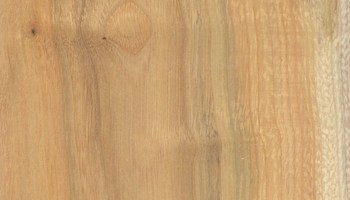
Live Oak | Quercus virginiana
Has a light to medium brown color, though there can be a fair amount of variation in color. Conversely, Red Oak tends to be slightly redder, but is by no means a reliable method of determining the type of Oak. Other Names: Live Oak, Southern Live Oak, Quercus virginiana. Distribution: Southeastern United States. Live Oak has been rated as having very good resistance to decay, and has been used frequently in ship and boatbuilding. Common Uses: Cabinetry, furniture, interior trim, flooring, boatbuilding, barrels, and veneer. Live Oak technically falls into a group separate from either Red or White Oak, though it shares many of the same traits as White Oak (Quercus alba). Historically, it has been used in shipbuilding, and was even used in the construction of the USS Constitution, which was fittingly named “Old Ironsides”—an incontrovertible testament to the wood’s toughness.
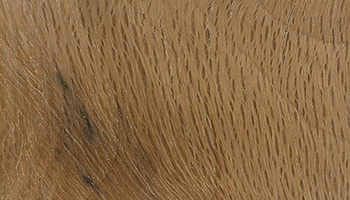
Oregon White Oak | Quercus garryana
Has a light to medium brown color, though there can be a fair amount of variation in color. Conversely, Red Oak tends to be slightly redder, but is by no means a reliable method of determining the type of oak. Distribution: Pacific Northwestern United States. Common Uses: Cabinetry, furniture, interior trim, flooring, boatbuilding, barrels, and veneer. White Oak, along with its brother Red Oak, are commonly used domestic lumber species. Hard, durable, and moderately priced, White Oak presents an exceptional value to woodworkers—which explains why it is so widely used in cabinet and furniture making.
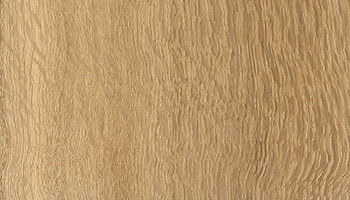
Overcup Oak | Quercus lyrata
Has a light to medium brown color, though there can be a fair amount of variation in color. Conversely, Red Oak tends to be slightly redder, but is by no means a reliable method of determining the type of Oak. Distribution: Eastern United States. Overcup Oak has been rated as having very good resistance to decay. Common Uses: Cabinetry, furniture, interior trim, flooring, boatbuilding, barrels, and veneer. Overcup Oak falls into the white oak group, and shares many of the same traits as White Oak (Quercus alba). White Oak, along with its brother Red Oak, are commonly used domestic lumber species. Hard, durable, and moderately priced, White Oak presents an exceptional value to woodworkers—which explains why it is so widely used in cabinet and furniture making.
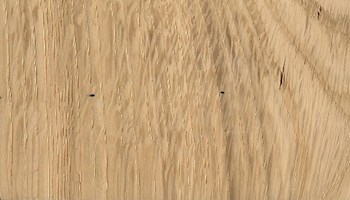
Post Oak | Quercus stellata
Has a light to medium brown color, though there can be a fair amount of variation in color. Conversely, Red Oak tends to be slightly redder, but is by no means a reliable method of determining the type of Oak. Post Oak has been rated as having very good resistance to decay. It is said that this wood has been used for fence posts, and may be where it got its name. Distribution: Eastern United States. Common Uses: Fence posts, cabinetry, furniture, interior trim, flooring, boatbuilding, barrels, and veneer. Post Oak falls into the white oak group, and shares many of the same traits as White Oak (Quercus alba). White Oak, along with its brother Red Oak, are commonly used domestic lumber species. Hard, durable, and moderately priced, White Oak presents an exceptional value to woodworkers—which explains why it is so widely used in cabinet and furniture making.
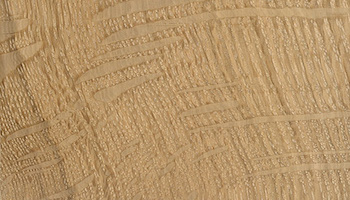
Swamp Chestnut Oak | Quercus michauxii
Has a light to medium brown color, though there can be a fair amount of variation in color. Conversely, Red Oak tends to be slightly redder, but is by no means a reliable method of determining the type of Oak. Distribution: Southern and Central United States. Swamp Chestnut Oak has been rated as being moderately durable, and moderately resistant to decay. Common Uses: Cabinetry, furniture, interior trim, flooring, boatbuilding, barrels, and veneer. Swamp Chestnut Oak falls into the white oak group, and shares many of the same traits as White Oak (Quercus alba). White Oak, along with its brother Red Oak, are commonly used domestic lumber species. Hard, durable, and moderately priced, White Oak presents an exceptional value to woodworkers—which explains why it is so widely used in cabinet and furniture making.
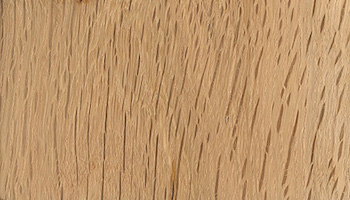
American Ash | Fraxinus spp.
American Ash is the trade name for a number of sub species of Ash that grow throughout the eastern USA. It is a versatile and attractive hardwood with good strength properties. Other Names: Northern Ash, Southern Ash, White Ash, American White Ash, Brown Ash.
American Ash is the trade name for a variety of sub species of Ash that are grown in the eastern parts of the USA. It is similar in appearance to European Ash, with very pale sapwood and heartwood that varies from a greyish brown to light brown, or a pale yellow with brown streaks. The timber or veneer from the American Ash is sometimes sold based on colour, with White Ash referring to the sapwood and Brown Ash referring to the heartwood. It is available in a wide range of grades and specifications.
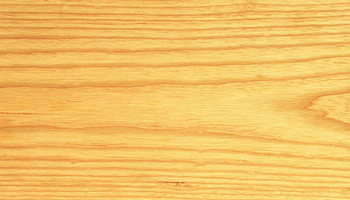
American Ash has good strength properties and is usually straight-grained with a uniform texture. The timber has good hardness and steam bends well; it also machines well and is an excellent timber for woodturning. Overall, American Ash is easily worked, responding well to nailing, screwing and gluing. It can also be polished to a very high finish. The heartwood is not resistant to decay and is moderately resistant to preservative treatment, limiting the timber to interior applications. The sapwood, however, is permeable.
Common applications for American Ash include furniture, flooring, doors, architectural interiors, high-end joinery and mouldings, cabinetry, panelling in the form of veneers, tool handles, sports goods and turnings. It is also becoming popular in the construction of electric guitars. It is an attractive and versatile timber for a vast range of interior applications.
American Ash is readily available in the Eastern USA, where the various sub species grow. It is available in Australia from specialist timber suppliers as both sawn timber and veneer.
English Oak | Quercus robur
Has a medium yellowish-brown color, though there can be a fair amount of variation in color. Other Names: English Oak, European Oak, Quercus robur. Distribution: Most of Europe, to Asia Minor, and North Africa. English Oak has been rated as having very good resistance to decay, and is commonly used in boatbuilding applications. Common Uses: Cabinetry, furniture, interior trim, flooring, boatbuilding, barrels, and veneer. English Oak falls into the white oak group, and shares many of the same traits as White Oak (Quercus alba). English Oak is used extensively for both interior and exterior building applications throughout Europe.
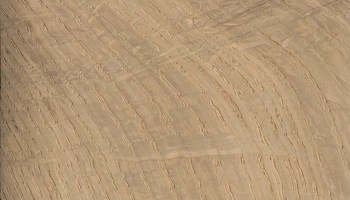
American Black Walnut | Juglans nigra
American Black Walnut is a premium cabinet and furniture making timber, native to the eastern regions of North America. Other Names: American Walnut, Black Walnut, Virginia Walnut, Canaletto, Black Hickory Nut.
American Black Walnut is a medium to large hardwood, native to the eastern regions of North America. Its heartwood ranges from a golden to rich chocolate brown colour, sometimes with narrow streaks of a darker purplish-brown. Sapwood is a distinctive creamy white colour. American Black Walnut is a fine and generally straight-grained timber, although sometimes it has an attractive wavy or curly grain, giving it a highly decorative figure.

By virtue of its appearance, durability and ready workability – being only moderately hard – American Black Walnut is an excellent cabinetmaking timber. It performs well with both machine and hand tools and can be polished to a high finish. It is also an excellent timber for carving and turning and is suitable for steam bending. It glues satisfactorily if conditions are carefully controlled. It is suited to high-end cabinetwork, and is a timber of choice for gunstocks. Other applications include general furniture and joinery work.
Holm Oak | Quercus ilex
Has a light to medium brown color, though there can be a fair amount of variation in color. Common Uses: Tools, cabinetry, furniture, wine barrels, turned objects, and firewood. The term “holm” oak is another word for “holly,” so named because the foliage of Quercus ilex resembles Holly. (The tree is also sometimes known as Evergreen Oak, since it keeps its leaves year round, with old leaves falling off after the new ones appear. Holm Oak falls into the white oak group, and shares many of the same traits as White Oak (Quercus alba). Other Names: Holm Oak, Holly Oak, Quercus ilex. Distribution: Mediterranean Basin.
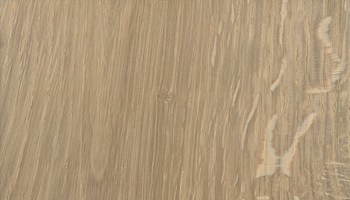
American Cherry | Prunus serotina
American Cherry is a hardwood native to eastern USA. Its heartwood ranges from a dark, rich red to a reddish brown, and is prized for high-end interior applications, turning and carving, and musical instruments. Other Names: American Black Cherry, Black Cherry, Rum Cherry.
Predominantly grown in the eastern regions of the USA, American Cherry is a highly prized hardwood for a vast range of interior and other applications. Heartwood ranges from rich reds to reddish browns, while the sapwood is creamy white. Sapwood can be steamed to darken the colour. The wood has a fine, uniform grain with a smooth texture; it can contain pith flecks and gum pockets that are considered to add to the distinctiveness of the timber.
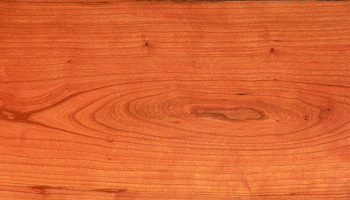
American Cherry has good workability, as it is easy to machine, nail and glue. It is also an excellent timber for turning and carving, making it popular in the construction of musical instruments. It is of medium density, has good bending properties, low stiffness, and has medium strength and shock resistance.
The main reason for the timber’s popularity for high-end applications, such as furniture, cabinet making, boat interiors and musical instruments, is its ease of workability and that it sands, stains and polishes to a smooth finish, highlighting its rich colouring.
American Cherry is readily available in the USA as both sawn timber and veneer and in a range of grades and specifications.
American Hard Maple | Accer saccharum
American Hard Maple produces timber with good strength properties and an attractive appearance. Its most common applications are flooring, cabinet making, furniture and interior joinery. Other Names: Sugar Maple, Black Maple, Rock Maple, White Maple, Sap Maple.
American Hard Maple is a cold weather tree that grows across the north-east States of the US and in Canada. It produces an attractive timber with creamy-white sapwood, sometimes with a pink tinge, and light to reddish brown heartwood. Higher grades of the timber are selected for the white colour of the sapwood, and this can limit their availability. While generally straight-grained, American Hard Maple can have a distinctive curly, fiddleback or birdseye figure.
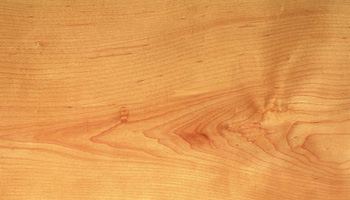
American Hard Maple, as the name suggests, is a hard, heavy wood with a fine texture that is high in all strength properties except for stiffness, which is medium. It is a hardwearing timber, making it ideal for flooring applications where there is a high volume of foot traffic, such as gymnasiums or concert halls. It also has a very good steam bending classification.
American Hard Maple is considered to be quite difficult to work with due to its blunting effect. Pre-boring is recommended when nailing or screwing. The timber does not take glue well. When care is taken, the timber machines and turns well, and it can be stained and polished to achieve an extremely attractive finish.
American Hard Maple is used in a variety of interior applications, such as furniture, panelling, cabinet making and interior joinery. It is also used in stairs, handrails, mouldings and doors. As mentioned above, the hardwearing properties of American Hard Maple mean that it is an excellent timber for flooring applications in gymnasiums, theatres, concert halls and basketball courts. In its veneer form, American Hard Maple is also used in the construction of skateboards.
American Hickory | Carya glabra
American Hickory is considered one of the most important of the commercially available eastern USA hardwoods for its combination of strength, toughness, hardness, and stiffness.
Other Names: Red Hickory, White Hickory, Pecan, Pignut Hickory, Pignut, Sweet Pignut, Coast Pignut Hickory, Smoothbark Hickory, Swamp Hickory, Broom Hickory.
American Hickory is a hardwood that is native to the eastern States of the USA. It is considered to be one of the most important trees of the eastern forests, due to its combination of strength, toughness, hardness and stiffness.
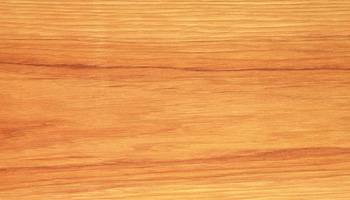
American Red Alder | Alnus rubra
American Red Alder is a hardwood timber that is light brown in colour with a reddish tinge, making it a popular substitute for cherry in furniture and other interior applications.
American Red Alder grows on the west coast of the USA and is the most common commercial hardwood in that region. This attractive timber is used for furniture, interior mouldings, doors and turning and carving. Other Names: Red Alder, Western Red Alder, Western Alder, Oregon Alder, Pacific Coast Alder.
American Red Alder is the most common hardwood in the Pacific Northwest of the USA, and it the largest of the American alders. It is a fast-growing species and has nitrogen-fixing nodules on its roots that are formed as a result of a beneficial relationship with a species of bacteria.
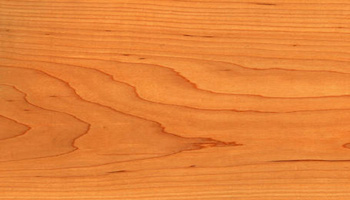
American Red Alder timber is almost white when freshly cut but rapidly changes to a light brown colour with a red or yellow tinge when it is exposed to air. Heartwood is formed only in very old trees and there is no visible boundary between heartwood and sapwood. The timber is of medium density and low bending strength, making it unsuitable for structural applications. However, it machines, polishes and turns well, making it an ideal timber for furniture, cabinetry and other interior applications.
American Red Alder timber is available as both rough and dimension stock; veneer production is limited. While American Red Alder is readily available in the regions where it grows in the USA, its international availability is mixed.
American Red Oak | Quercus spp.
American Red Oak is a highly attractive hardwood that is becoming increasingly popular for furniture, flooring and joinery around the world.
American Red Oak is the trade name for eight commercially available species of Oak that are sold as both timber and veneer and used in a range of interior applications. Other Names: Red Oak, Southern Red Oak, Northern Red Oak, Swamp Red Oak, Quercus falcata, Quercus rubra.
American Red Oak is the trade name for eight commercially available species within the large group of Oaks. The trees grow extensively across the eastern part of the USA and are more abundant than the American White Oak. This means that there is a good supply of Red Oak as both sawn timber and veneer, and in a range of grades and specifications. In the US Red Oak is often classified according to its growing region, and sold as Northern Red Oak (Quercus rubra) or Southern Red Oak (Quercus falcata).
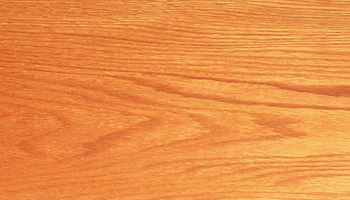
A highly attractive timber, the sapwood of the Red Oak ranges from white to light brown, with a pink to red-brown heartwood. While similar in appearance to White Oak, Red Oak has slightly smaller rays and so has a less pronounced figure. The end grain structure of the Red Oak is also more porous. It is a typically straight-grained wood with a coarse texture, although both colour and texture can vary dependent on the growing region. The name, Red Oak, comes from colour of the leaves in Autumn.
American Red Oak is a hard and heavy wood with moderate bending strength and stiffness. The timber performs best when it has been dried slowly, as this reduces the possibility of the wood splitting and warping. As a result of Red Oak’s high shrinkage, it can be susceptible to movement under uneven moisture conditions. The timber can be stained and polished to an extremely attractive finish, which is one of the reasons it is becoming increasingly popular around the world. American Red Oak is predominantly used in furniture, flooring, joinery, staircases, mouldings, cabinets and boat interiors.
American Soft Maple | Acer spp.
American Soft Maple is similar in appearance to the American Hard Maple, with greyish-white sapwood and light to dark reddish brown heartwood. It is used in a range of interior applications, including furniture, paneling and doors.
American Soft Maple is about 25% less hard than American Hard Maple, making it easier to work but not as hard-wearing. Other Names: Red Maple, Silver Maple, Bigleaf Maple, Pacific Coast Maple, Acer rubrum, Acer saccharinum, Acer macrophyllum.
American Soft Maple is the trade name for three trees of the Acer family. They grow widely throughout the eastern USA, although the Pacific Coast/Big Leaf Maple (Acer macrophyllum) grows only in the Pacific Northwest region. The eastern Soft Maple is normally called Red Maple in the northern States and Silver Maple throughout the Midwest and southern States. Red Maple is very similar to Hard Maple and is generally consistent in colour. Silver Maple has a much wider range of colours and tends to have a softer texture.
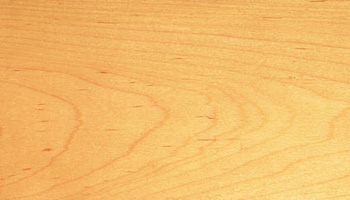
American Soft Maple is very similar in appearance to the American Hard Maple, with a greyish white sapwood and light to dark reddish brown heartwood. However, due to the widespread growth of American Soft Maple, colouring can vary between regions. The wood is generally straight-grained although a highly figured wormy variety can occur that is not considered a defect.
About 25% less hard than Hard Maple, American Soft Maple is easier to work. It has moderate bending and crushing strength and low stiffness and shock resistance. American Soft Maple responds well to steam bending. It is often used as a substitute for Hard Maple, given the similarity in appearance, or is stained to resemble Cherry. Its good working properties also make it a potential substitute for Beech.
American Soft Maple is easily worked. It machines well and takes glue, nails and screws satisfactorily. It is considered to be an excellent timber for sawing, planning, drilling and boring. It can be stained and polished to a high finish, making it ideal for decorative purposes. The timber dries slowly and has good stability.
Soft Maple is used in a range of interior applications including furniture, paneling, cabinets, mouldings and doors. It is a good woodturning timber and is also used in the construction of musical instruments. It is expected that the availability of Soft Maple will improve as the demand for the timber increases.
American Tulipwood | Liriodendron tulipfera
With a colour that ranges from creamy white to an olive green, American Tulipwood is an ideal timber for furniture, joinery, cabinetry, doors and paneling. American Tulipwood is one of the largest trees native to the eastern USA. It is used for both sawn timber and veneers, and is a versatile and attractive timber for a range of interior applications. Other Names: Tulip Tree, American Tulip Tree, Tuliptree, Tulip Poplar, Yellow Poplar.
American Tulipwood is not only one of the largest trees in the forests of the eastern USA, it is also one of the most plentiful, representing about 9% of the country’s standing hardwood resource. This has ensured that it is widely available and its size means that it can produce timber that is both very wide and very long. The tree is similar in shape to the European Poplar, which is why it is called the Yellow or Tulip Poplar in the USA, however it is not related. The growing region of the tree is extensive, stretching as far south as Florida and north to the southern parts of New England.
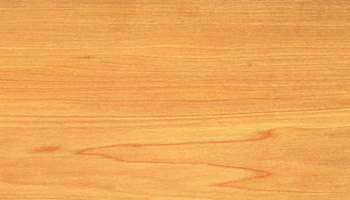
Sapwood of the American Tulipwood is creamy white an can be streaked; heartwood varies from a pale yellow-brown to an olive green, which darkens to brown on exposure to UV light. The texture of the Tulipwood is medium to fine and it is straight grained. Burls and swirls can occur in the grain and are not considered defects. Size and characteristics can vary dependent on the region in which it grows.
American Tulipwood is an extremely versatile timber of moderate density. It has low values for shock resistance, bending, stiffness and compression. It is classified as ‘medium’ for steam bending. It has a good strength to weight ratio, making it an ideal wood for laminated beams and structures.
Tulipwood is easy to work, as it machines, planes, turns and bores well. It has high dimensional stability and rarely splits when nailed. It takes and holds paint, stains and enamel and can attain an excellent finish. American Tulipwood is ideal for a range of interior applications, such as furniture, joinery, cabinets, doors, panelling and mouldings. In the US it is used in the production of plywood. It is also an excellent timber for turning and carving.
Exported widely around the world, American Tulipwood is a popular choice for architects and designers as a result of its unusual colour range.
American White Oak | Quercus alba
American White Oak is a light to dark brown coloured hardwood that can be used in structural, exterior and interior applications. American White Oak is the trade name for a variety of hardwood species from the Quercus genus. The timber is imported from eastern USA and used for a variety of applications, including furniture, flooring and joinery. Other Names: Northern White Oak, Southern White Oak, True White Oak, White Oak, Overcup Oak, Swamp Chestnut Oak, Chestnut Oak (Q. prinus, Q. montana), Overcup Oak (Q. lyrata), Swamp Chestnut Oak (Q. michauxii).
American White Oak is a hardwood common throughout the eastern United States.
The name ‘White Oak’ encompasses numerous species, eight of which are commercially available as timber. Very similar in appearance and colour to the European Oak, American White Oak has light-coloured sapwood and a light to dark brown heartwood. White Oak is mostly straight grained with a medium to coarse texture, with longer rays and more figure than American Red Oak. It has large distinctive growth rings, and some medullary rays may be present.
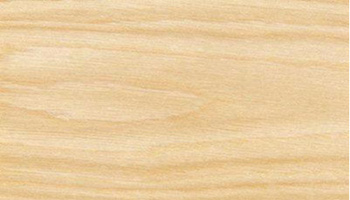
American White Oak is used for a wide range of applications, including shipping and boat building, flooring, architectural joinery, exterior joinery, railways sleepers and timber bridges due to its strength and resistance to decay. It is also an excellent timber for high-grade furniture, interior woodwork and paneling. Because of its impermeability, the timber is suitable for vats and casks holding liquids such as wine and spirits.
American White Oak is a hard, heavy wood, and has low stiffness and good overall strength, making it increasingly popular as a structural timber. It also has very good steam bending properties. White Oak machines well and is easy to glue, nail and screw. It readily accepts stains and polishes to a good finish. The heartwood is susceptible to lyctid borer attack and to termites.
Balau | Shorea albida
Balau is highly durable hardwood native to Malaysia, Indonesia and the Philippines, used mainly for heavy construction. Other Names: Selangan Batu, Gisok, Belangeran, Empenit Thitya, Teng, Alan, Shorea glauca, Maxwelliana, Shorea seminis, Shorea laevis.
The heartwood of Balau is yellow to brown, which is distinct from the paler sapwood. Its moderately fine and even texture presents an interlocked grain, which produces a stripe figure on the radial surface. Balau is also susceptible to pinhole borer damage.

In relation to its density, Balau is relatively easy to work. It does not contain silica, however resin pockets may be present, meaning resin can build up on cutting equipment. Pre-drilling is advisable when nailing. Balau can be painted, stained and polished but is not suitable for steam bending. Balau (Shorea albida) is used for heavy construction, wharfage, sleepers and shipbuilding.
Balsam Poplar | Populus balsamifera
Balsam Poplar is a hardwood used for plywood, boxes, artificial limbs, wood wool, brake blocks and match splints. Other Names: East Asian Balsam Poplar, Korean Poplar, Canadian Poplar, Western Balsam, Black Cottonwood, Cottonwood, Populus spp., Populus koreana, Populus laurifolia, Populus maximowiczii, Populus simonii, Populus trichocarpa.
Balsam Poplar is a hardwood native to Asia and North America. It is used for match splints, plywood, artificial limbs, brake blocks, wood wool and boxes.
The heartwood of Balsam Poplar is pale brown, and the sapwood is white to cream and up to 80mm wide in fast-growing stems (about three growth rings). The grain is straight and the texture is fine but sometimes slightly uneven because of the harder latewood.

Blackbutt | Eucalyptus pilularis
Blackbutt is a large Australian hardwood that is commonly used for structural and exterior applications. It is also used to produce plywood. Other Names: Coastal Blackbutt, Pink Blackbutt.
The common name Blackbutt came about due to the tree’s appearance after bushfire, whereby the buttress – or butt – was significantly darkened. It is also known as Coastal Blackbutt to distinguish it from the tableland species, New England Blackbutt.
Due to its quick growth and versatility, Blackbutt makes a good plantation timber.
The heartwood ranges from golden yellow to pale brown, although occasionally a slight pinkish colour may be present. The sapwood, which is not always easy to distinguish, is much paler in appearance and is resistant to attack by lyctid borer. Blackbutt has an even texture and generally straight grain making it appealing for interior use applications.
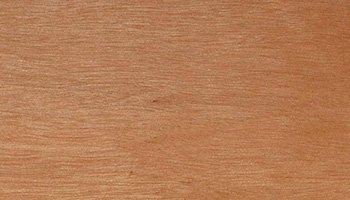
Blackdown Stringybark | Eucalyptus sphaerocarpa
Blackdown Stringybark is a durable Australian hardwood, suitable for a range of engineering and construction applications. Blackdown Stringybark grows to a height of 45 metres, with a stem diameter of up to two metres. It is not considered a ‘true’ Stringybark, but is named for its fibrous, grey-brown bark. Heartwood ranges in colour from brown to yellow-brown. Sapwood, usually distinct, is a pale brown colour. The texture of Blackdown Stringybark timber is even, with slightly interlocked grain. Fine rays are visible with a lens.
Blackdown Stringybark is a durable timber, with a life expectancy of up to 40 years above ground, and 15 to 25 years in-ground. It is termite-resistant and untreated sapwood is immune to Lyctid borer (powder post beetle) attack. The sapwood of this species is, however, readily impregnated with preservatives using commercially available procedures.
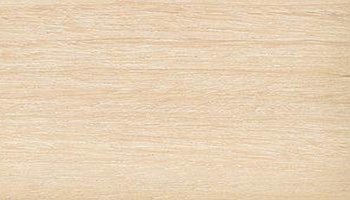
Blackdown Stringybark is a very hard timber in relation to both indentation and hand tooling. It is readily worked by machine, and amenable to the use of all standard fastenings and fittings. It may be satisfactorily painted, stained, polished and glued using standard procedures.
The timber of this species is commonly used in engineering (mining timbers, utility pole cross-arms) and general construction (framing, cladding, flooring) applications.
Blackwood | Acacia melanoxylon
With its rich, dark appearance, Blackwood is well suited to interior applications such as veneers and high-end furniture. It is a medium-sized Australian hardwood that yields an attractive timber often used for decorative veneers, furniture and paneling. Other Names: Australian Blackwood, Paluma Blackwood, Black Wattle. lackwood is a medium-sized Australian hardwood that grows in South Australia and the eastern states. It is definitely an ‘appearance timber’, with a heartwood that is a rich golden brown. This is sometimes complimented by reddish streaks or a narrow band of darker colour, indicative of the growth rings. The sapwood is much paler in appearance. Blackwood has a medium and even texture. Its grain can either be straight or have a wavy, fiddleback pattern, which is valued for furniture and veneers.
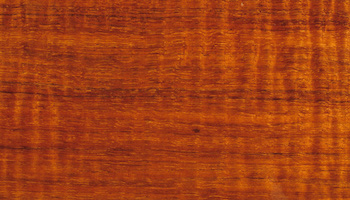
Blackwood is easy to work and nails and glues well. A smooth, polished finish can be achieved, making blackwood ideal for furniture. It is also good for steam bending. If the grain is wavy then this may require the planer angle to be adjusted. It is important that safety precautions are taken when sanding blackwood, as the dust can cause irritations.
While Blackwood is a durable, interior-use timber it has a low in-ground durability and is not ideal for external applications.
Broad-leaved Tea Tree | Melaleuca leucadendron
Broad-leaved Tea Tree is a moderately durable timber commonly used in general construction and for fence posts, railway sleepers and mine props. Other Names: Brown Tea-tree, Paperbark, Cajuput Tree, Weeping Tea Tree, Weeping Paperbark, Broad-leaved Paperbark, Melaleuca quinquenervia, Melaleuca viridiflora.
Broad-leaved Tea Tree is widely used in general construction, for flooring, boat knees (cut from the natural shapes of tree branches) and oyster rack structural members (with bark intact). The bark is used for lining fernery baskets and for making bark paintings. The cork from the bark is used for infants’ pillows and mattresses. Small stems of Tea Tree with bark intact make an attractive fencing material.
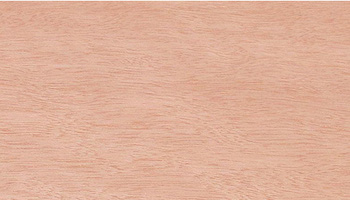
The heartwood of this species is pinkish-brown in colour. Sapwood is distinctively paler. Grain is often interlocked and the timber exhibits a fine and even texture.
Broad-leaved Tea Tree occurs in northern New South Wales, Queensland, the Northern Territory and Western Australia. Small quantities are occasionally imported from Papua New Guinea, Indonesia and Malaysia.
Brown Stringybark | Eucalyptus baxteri
Brown Stringybark is a moderately durable Australian hardwood, used in general building construction and for fuel. Other Names: Eucalyptus blaxlandii, Eucalyptus capitellata.
As its trade name suggests, Brown Stringybark heartwood is pale brown in colour. Its texture is medium and even, with considerable variation in grain. Gum veins are common.
Brown Stringybark timber exhibits moderate strength and durability, and is not recommended for in-ground applications. The sapwood of the species, not always visually distinct from the true wood, is immune to lyctid borer (powder post beetle) attack.
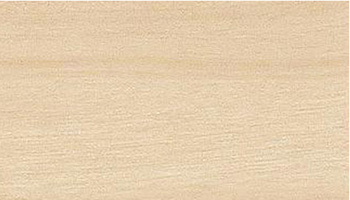
Brownbarrel | Eucalyptus fastigata
Brownbarrel is a large Australian hardwood from the north east of Victoria and the tableland districts and south coast areas of New South Wales. It is commonly used for protected general construction and internal applications. Other Names: Brown Barrel, Cuttail, Black Mountain Ash, Whitetop, Woollybutt.
It is used mainly for general construction, although this is limited to applications protected from weather exposure due to Brownbarrel’s moderate durability. It is also used for internal applications such as flooring, veneers and paneling.
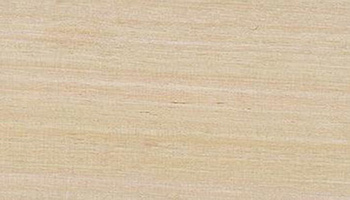
Brush Box | Lophostemon confertus
Brush Box is an attractive Australian hardwood used for a variety of applications, including flooring. Brush Box is a medium to large sized Australian hardwood that grows along the edges of the rainforest areas of New South Wales and Queensland. It is used for a variety of applications including flooring, cladding and bridge decking. Other Names: Pink Box, Scrub Box, Tristania conferta.
Its heartwood can vary in appearance, from a greyish pink through to a reddish brown, while the sapwood is usually paler in colour. Brush Box has a fine and even texture with an interlocking grain – a feature that is appealing for appearance-based applications such as timber flooring, but can cause significant distortion during drying.

Brush Box has a poor workability in part due to its density, interlocked grain and the presence of silica. It does however provide good resistance to wear and splintering. The natural waxiness may cause problems with some adhesives but provides a very good base for paints and stains. Brush Box is not suitable for steam bending.
Brush Box is used for a variety of applications including flooring, cladding, paneling and some structural applications.
Calantas | Toona calantas
Calantas is a medium-sized hardwood that grows in parts of South-East Asia including the Philippines, Malaysia and Indonesia. It is mainly used for decorative applications. Other Names: Kalantas, Limpoga, Surian, New Guinea Cedar, Surian Cedar, Cedrela Calantas.
Calantas is a medium-sized hardwood that grows in parts of South-East Asia, including the Philippines, Malaysia, Indonesia and Papua New Guinea. It is mainly used for decorative applications such as timber veneers, paneling, joinery and furniture. Other uses for Calantas include boat building, piano cases and carving.
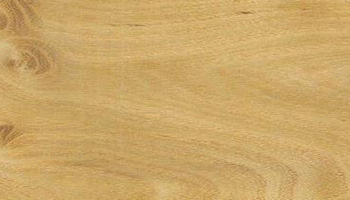
Its heartwood is reddish brown, while the narrow sapwood is generally a pale red in colour and quite distinctive. It is similar in appearance and also odour to Australian Red Cedar. Calantas has a moderately coarse texture with a grain that can be straight or interlocked.
Calantas is quite easy to work by hand or by machine, but tools need to be kept sharp, as the material can be soft. It is quick to dry, however there is a risk of internal checking and collapse. Issues may occur with gluing, painting and finishing for material where resin is present.
Camphor Laurel | Cinnamomum camphora
Camphor Laurel yields a rich honey-coloured hardwood timber with a fresh camphor smell perfect for cutting boards, furniture and cabinetry. Other Names: Camphor tree, Camphorwood, Chinese Camphor Wood.
Camphor Laurel yields a beautiful, rich honey-coloured timber with a clean, fresh camphor smell that is perfect for furniture, carving, and cabinetry. The tree is native to Taiwan, southern Japan, southeast China and Indochina, where it has great cultural significance as a source of scent, oil and crystallised blocks for use in religious ceremonies and for medicinal purposes. It is used as a valuable timber for furniture and carving icons.
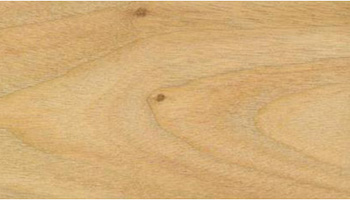
Camphor Laurel timber is excellent for creating fine furniture. Its heartwood varies widely in colour from pale to mid brown and is often streaked with darker brown or red. The sapwood is very wide and pale brown. The timber’s grain is usually interlocked with a moderately fine and even texture. All camphor laurel wood features the characteristic camphor smell that repels moths and other insects, making it perfect for clothes storage cabinets. Camphor Laurel also has antibacterial properties prized for use in crafting handsome chopping and carving boards.
The Camphor Laurel’s extraordinary strong dark grain against a yellow base creates distinctive furniture. It is also recommended for use as slabs in kitchen benchtops, tables and shelves, as well as decorative veneers, internal lining boards and turned or hand-carved bowls.
Candlebark | Eucalyptus rubida
Candlebark is a medium-sized hardwood found in parts of the cooler, south-eastern states of Australia. It is not widely available and is used predominately for building framework. Other Names: Ribbon Gum, White Gum.
Its heartwood is pale pink, while the sapwood is usually indistinguishable. Candlebark has a medium texture and straight grain. Gum veins are often present.
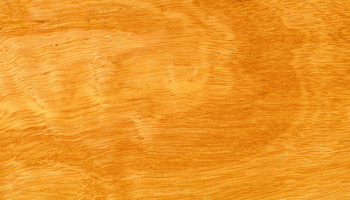
Coachwood | Ceratopetalum apetalum
Coachwood is an Australian hardwood timber commonly used in cabinetmaking, turnery and carving. Other Names: Scented Satinwood, Tarwood.
The true wood of this species – not always clearly distinct from the sapwood – is a pale pink to pinkish-brown colour. The grain is usually straight, with a fine and even texture. Due to banding of soft tissue (parenchyma) in the wood, the timber is often highly figured on back-sawn surfaces. The wood has a distinctive ‘caramel’ odour – hence one of the species’ common names is Scented Satinwood.
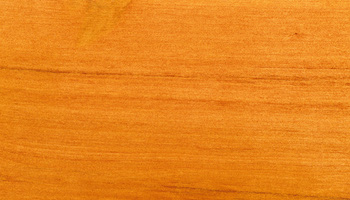
Coachwood is only moderately durable, with a life expectancy of between five and seven years for in-ground and aboveground applications, respectively. Coachwood is not resistant to termites, and its untreated sapwood is susceptible to Lyctid borer attack. The sapwood (but not heartwood) of this species is readily impregnated with preservatives.
Coachwood is moderately hard in relation to indentation and ease of working with hand tools. The timber machines well to a smooth surface. It accepts standard fixings and fastenings but tends to split when nailing (pre-drilling is recommended). Coachwood glues well and readily accepts most coatings. Coachwood responds better to water- and spirit-based stains, than to oil-based equivalents.
Uses of Coachwood timber are predominantly decorative, although it is used as a flooring material and for spars and masts in boatbuilding. Common applications include turnery, carving, interior fittings, sporting goods, furniture and cabinetwork. Coachwood is also found as a decorative veneer.
Coast Grey Box | Eucalyptus bosistoana
Coast Grey Box is a highly durable Australian hardwood often used for heavy construction applications and as round timber. Other Names: Bosisto’s Box, Gippsland Green Box.
Its heartwood is a pale brown with the sapwood paler in appearance. It has a fine and even texture and usually features an interlocked grain. Gum veins are rarely present. It is similar in appearance to Grey Box, Eucalyptus moluccana.
Coast Grey Box is also a highly dense species so it is quite difficult to work. It can be painted, stained and polished. Any machining or surface preparation should be done immediately prior to gluing. It is slow to dry but generally will not develop any surface checking. It is also satisfactory for steam bending.
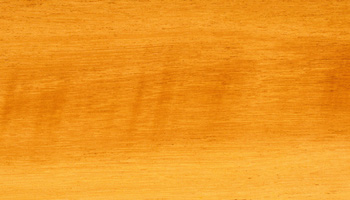
Coast Grey Box is used for heavy construction, round timber and sleepers.
Crow’s Ash | Flindersia australis
Crow’s Ash is an Australian hardwood timber which is mainly used for flooring, boat building and outdoor furniture. Other Names: Australian Teak, Flindosy, Nutwood, Colonial Tea. Crow’s Ash is slow to dry and surface checking may occur if it is dried too quickly. Its heartwood is golden yellow with a more distinct, paler sapwood. Aside from appearance, Crow’s Ash main benefit is that it is a very strong timber.
Crow’s Ash is predominately used for flooring and decking. It is also used for boat building and outdoor furniture. In times gone by it was used as flooring for dance halls due to its highly durable characteristics. While it is visually appealing, this species is not easy to work with, which limits the applications it can be used for. Crow’s Ash is quite greasy which means it is hard to glue and nail. Due to its limited availability, Crow’s Ash timber may attract a premium.
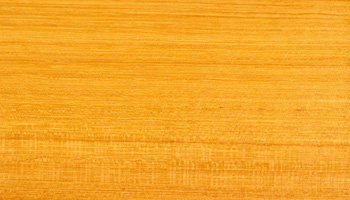
Forest Red Gum | Eucalyptus tereticornis
Forest Red Gum is an Australian versatile, dense and durable hardwood, with a light to dark red heartwood perfect for flooring, decking, construction and furniture making. Other Names: Blue Gum (Qld), Red Irongum (Qld), Red Gum, Blakely’s Red Gum, Eucalyptus umbellata, Eucalyptus vlakelyi, Eucalyptus blakelyi.
The Forest Red Gum produces a reliable timber suited to a wide range of uses. The timber is highly durable with an extremely high density. It displays a tight interlocking grain alongside its lush red colour, making it excellent for applications where appearance and durability are important.
As the name suggests, the Forest Red Gum is a medium to tall forest tree. Trees of this species grow to a height of 20 to 50 metres, with a girth of up to two metres. The trunk is straight and is usually unbranched for more than half the total height of the tree, with limbs that are more steeply inclined than other eucalypt species. The bark is shed in irregular sheets, resulting in a smooth trunk surface, coloured in patches of white, grey and blue. Rough dark grey to black dead bark is retained at the base of the stem.
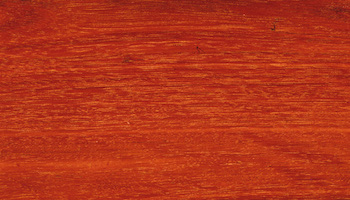
A versatile timber, Forest Red Gum can be used in wharf and bridge construction, railway sleepers, cross-arms and mining timbers. It is suitable for all building members including posts and poles, framing, flooring, lining, decking and cladding. It is suitable for both indoor and outdoor furniture. As well as sawn and round applications, forest red gum is suitable for the manufacture of structural plywood. The sapwood is not susceptible to lyctid borer attack and the species is not susceptible to termites.
Grey Box | Eucalyptus moluccana
Grey Box is a highly durable Australian hardwood often used for heavy construction applications and flooring. Other Names: Gum-topped Box, Eucalyptus Microcarpa, Eucalyptus Woollsiana, Eucalyptus Hemiphloia.
Its heartwood is a pale, yellowish brown with the sapwood paler in appearance. It has a fine, even texture and usually features an interlocked grain. Gum veins are rarely present.
Grey Box is a highly dense species, so it is quite difficult to work. It can be painted, stained and polished. Any machining or surface preparation should be done immediately prior to gluing. It is slow to dry but generally will not develop any surface checking.
Grey Box is used for heavy construction, flooring, round timber wharfage, sleepers and shipbuilding.
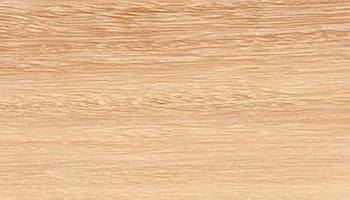
Grey Gum | Eucalyptus propinqua
Grey Gum is an Australian hardwood timber with extreme hardness and durability, making it suitable for a wide range of engineering and general construction applications, from mining timbers to flooring and decking. Other Names: Grey Iron Gum, Eucalyptus punctata, Large-fruited Grey Gum, Small-fruited Grey Gum, Eucalyptus canaliculata, Eucalyptus major, Brown Grey Gum.
The heartwood of this species is a red to reddish-brown colour, visually distinct from the paler sapwood. Grain is usually interlocked, with a coarse but even texture. Grey Gum is similar in general appearance to the ironbarks, but often marked by characteristic grub holes.
Grey Gum timber is an extremely durable timber, with an in-ground life expectancy in excess of 25 years. For aboveground applications, life expectancy exceeds 40 years. Grey Gum heartwood is termite-resistant, and untreated sapwood is not susceptible to Lyctid borer attack. Grey Gum sapwood is readily impregnated with commercially available preservatives.
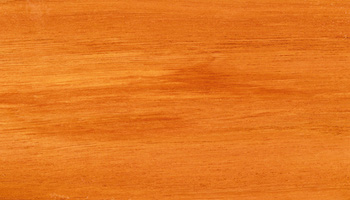
The timber is very hard in relation to both indentation and ease of working with hand tools. It machines well, although care is required in working the timber’s interlocked grain. Grey Gum readily accepts paint, stain and polish, and is amenable to the use of standard fastenings and fittings. As with most high-density species, machining and surface preparation should be done immediately prior to the application of adhesives.
Grey Gum is widely used in heavy engineering and marine construction, where it is found as poles, piles, railway sleepers, cross-arms and mining timbers. In general construction it is used for building framework, flooring and decking. Grey Gum is also extensively used in landscaping and boat building.
Grey Ironbark | Eucalyptus paniculata
Grey Ironbark is a premium Australian hardwood with a wide range of applications from industrial construction to house framing, flooring and sporting goods. Other Names: White Ironbark, Eucalyptus drepanophylla, Eucalyptus siderophloia, Eucalyptus decepta.
It is a particularly hard, strong and durable timber, with a truly broad range of applications, due to its resistance to lyctid borers and termites.A very heavy timber, at 1120 kilograms per cubic metre, Grey Ironbark is dense and can be difficult to work. Dressed surfaces take on a steely sheen. The timber’s appearance ranges from reddish to dark brown heartwood. The sapwood is lighter in colour and is 20mm thick on average. Grain is usually tight and straight and no distinctive figure is encountered. Both sawn and round grey ironbark timber has a wide range of applications.
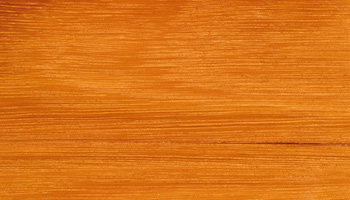
Engineering uses include railway sleepers, construction, poles and cross-arms, and bridge construction. Unseasoned timber is used in house framing, while dressed timber can be employed for both internal and external use. It has also been used in boat, coach, vehicle and carriage building and to create sporting goods.
Grey Satinash | Syzygium gustavioides
Grey Satinash is a hardwood used for general construction, interiors, furniture and decorative purposes. Other Names: Watergu, Trumpet Satinash, Eugenia Gustavioides, Cleistocalyx Gustavioides, Acmenosperma Claviflorum, Syzygium Claviflorum, Eugenia Leptantha.
The construction uses of grey satinash include framing, dressed window and door sills, joinery, flooring, plywood, linings and fixtures, and mouldings. Apart from furniture, decorative uses include cabinet-making, and picture frames. Other applications include shoe heels, butter boxes and funeral caskets.
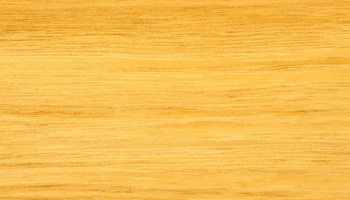
As the name suggests, the heartwood of Grey Satinash is buff-grey to a yellowish colour, while the sapwood is white-grey and not clearly distinguishable from the heartwood. The grain is often interlocked and the texture is fine to medium and uniform.
Grey Satinash is durable, though it is not termite resistant, and untreated sapwood is susceptible to lyctid borer attack. The sapwood takes preservatives. The timber is easy to work, and accepts paint, stain and polish, and there are no problems with the use of standard fittings and fastenings. The timber can be greasy and thus hard to glue.
Gympie Messmate | Eucalyptus cloeziana
Gympie Messmate is a strong, versatile and popular timber used for a wide range of interior and exterior applications. Other Names: Queensland Messmate, Dead Finish, Yellow Messmate.
Gympie Messmate is a large Australian hardwood harvested commercially in Queensland. Gympie Messmate features yellow-brown heartwood that is strong, hard and extremely durable.
Its sapwood is noticeably paler in colour, ranging from white to grey-white. The grain is generally uniform, unfigured, with a fine to medium texture that can sometimes be shallowly interlocked. Bark is soft, flaky, and fibrous with distinctively tessellated fine or coarse longitudinal fissures and is often mistaken for the Yellow Bloodwoods, although there is no relation between these two species.
This strong, versatile timber machines, turns, and dresses well and readily accepts paint, stains and polish.

This highly valuable tree species is used for heavy engineering construction, railway sleepers, mining timber, posts, poles and scantling. It is highly resistant to decay from ground contact or in damp, poorly ventilated conditions. These properties make it extremely useful for creating outdoor furniture, turnery and joinery, as well as crafting keeling and framing components in vehicles and carriage building.
Gympie Messmate is often used as sawn and round timbers for wharf and bridge construction, while unseasoned sawn timber is regularly employed for general house framing. Seasoned dressed timber is used for cladding, internal and external flooring, lining, joinery, fencing, landscaping and retaining walls.
Jarrah | Eucalyptus marginata
Jarrah is an Australian hardwood renowned for its versatility, durability and strength in a wide range of interior and exterior applications. Its durability and strength make it an ideal timber for a range of structural and design applications, with timbers that display colours ranging from deep red to blonde.
Jarrah trees grow on the iron and aluminium rich plains of south-western corner of Western Australia, from the ranges east of Perth down to Albany. They are slow growing, their roots often reaching to great depths in search of nutrients and water. Their long, straight trunks, can grow up to 40 metres tall and 2 metres in diameter, creating beautifully coloured and grained timbers. The bark is rough with a fibrous texture, and covers the entire trunk and smallest branches. The trees do not germinate from seed, but from lignatubers, large underground swellings that store energy and nutrients, allowing young trees to regenerate after bushfires.
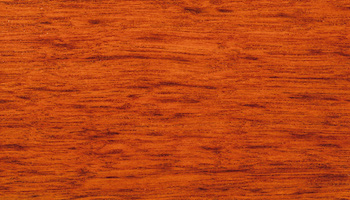
The heartwood varies in colour from rich reds to browns, while sapwood ranges from a pale yellow to orange. The texture of the timber is moderately coarse and even-textured grain, although some interlocked, wavy grain may feature, creating interesting fiddle-back figure. This makes it an appealing architectural and design material.
Jarrah’s natural properties include a high resistance to weather, rot, termites and even marine borers, making it valuable for a range of outdoors uses. Its density also makes it fire resistant. It can be used in wharf and bridge construction, railway sleepers, cross arms, poles and piles. Construction applications include general house framing, flooring, linings, joinery and fencing. Jarrah’s decorative qualities make it prized for use in furniture, turnery, joinery and parquetry.
Johnstone River Hardwood | Backhousia bancroftii
Johnstone River Hardwood is a tree that produces a rich, striped, attractive timber from Australia. It is prized for its hard wearing yet handsome properties and makes excellent flooring.
The Johnstone River Hardwood is a medium sized hardwood. Its heartwood features various shades of brown, and is often dark and sometimes striped. The timber’s texture is fine and even with a variable grain that is usually free of defects. Sapwood is distinctly paler.
Johnstone River Hardwood timber is popular as a flooring material, as its beautifully rich appearance also resists indentation.
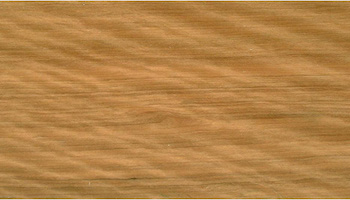
Kapur | Dryobalanops Spp, principally D.aromatica
Kapur is a large South East Asian hardwood with a broad range of applications including general construction and as an internal and external finishing material. Other Names: Borneo Camphorwood, Keladan, Kapoer.
An imported timber with a reputation for durability, in Malaysia and Indonesia Kapur is a large hardwood used for general construction and as an internal and external finishing material.
Sourced in the tropical lowland rainforests of Malaysia and Indonesia, Kapur trees can grow to 60m in height and to a diameter of between 80 and 100cm. Well-formed buttresses support their straight, cylindrical bole and the trunk is free of branches for up to 30m. The bark is grey brown or dark brown with shallow fissures. When freshly cut, the timber releases a camphor-like odour but is not moth repellent or resistant to termites.
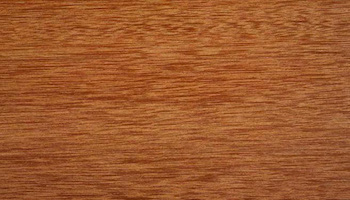
Kapur wood is ideal for use in general construction. It makes an attractive material for flooring and staircases. The timber is also highly prized for external joinery, in particular for door and window sills, as it is resistant to decay when fully exposed to the weather.
This timber is not recommended for in-ground use. Often preferred for external decking, it can also be used to create sturdy outdoor furniture. Kapur wood requires no finishing and will not rot when left outdoors where rain and sun will damage other lesser quality woods. Left untreated, Kapur will weather to a soft warm shade of gray similar to the weathering of teak. It can also been used decoratively to create internal fittings, plywood, joinery and lining, as it displays a striking figure.
Karri | Eucalyptus diversicolor
Karri is a slow-growing, durable Australian hardwood that produces an interlocked grain and ranges from creamy to red-brown in colour. With its durability and distinctive red hues it is suited to a broad range of applications. Most commonly used in construction, it is also valued by designers in the manufacture of indoor and outdoor furniture. Karri timber also features in the design of indoor and outdoor joinery.
Karri timber has an appealing golden appearance. The heartwood varies from reddish browns through to pale pink hues with the sapwood being a clearly distinguishable creamy white. It is moderately durable, but resists impregnation with preservatives or other treatments. The sapwood is susceptible to borer attack and is known to be susceptible to termites.
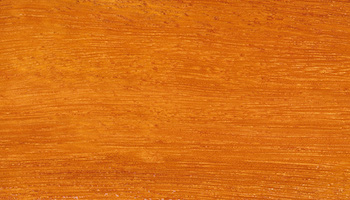
Karri is currently used extensively for flooring, panelling and internal joinery. Its strength and appearance has a wide appeal for fine furniture designers. It has been used extensively for general construction, framing, joists, shipbuilding, sleepers, guides or side beams in mines, structural plywood, roofing timbers and pulp and paper. The timber also lends itself to use in roofing because it can be milled in extensive lengths that are uninterrupted by knots.
Keruing | Dipterocarpus confertus
Keruing is a hardwood native to South East Asia and used in a wide variety of internal and external applications.
Other Names: Apitong, Hagakhak, Panau, Dau, Eng, Yang, Keruwing, Kruen, Kujun, Klalar, Keroewing, Iagan,Dipterocarpus, Dipterocarpus alatus, Dipterocarpus apterus, Dipterocarpus baudii, Dipterocarpus cornutus, Dipterocarpus costulatus, Dipterocarpus crinitus, Dipterocarpus dyeri, Dipterocarpus exalatus, Dipterocarpus gracilis, Dipterocarpus gradiflorus, Dipterocarpus indicus, Dipterocarpus lowii, Dipterocarpus macrocarpus, Dipterocarpus obtusifolius, Dipterocarpus sublamellatus, Dipterocarpus turbinaturs. Dipterocarpus verrucosus, Dipterocarpus warburgii.
Keruing is the name given to the timber yielded from more than 70 species of the genus Dipterocarpus. This group of large hardwoods is indigenous to South East Asia, where the species are harvested from managed forests with regeneration programs.

Across the entire species, a wide variety of heartwood hues are available, including deep-pink, orange-pink and purple-red. The most common heartwood is red-brown. Sapwood is usually lighter, sometimes with yellow or grey tinges. The wood darkens with age and features a generally straight, or shallowly interlocked grain, sometimes with a stripe figure on the radial surface. Texture varies between species from fine to coarse but is always uniform.
Keruing timber is low maintenance, hardwearing and ideal for outdoor furniture use. The wood is strong and classified as durable, making it useful for construction purposes. Other common uses include internal flooring, protected framing and boards, internal joinery and mouldings, lining, paneling and framework. Preservative-treated material is used for poles, piles, sleepers and cross-arms. It is often used as a cheaper alternative to oak for heavy construction, decking, vehicle building and sleepers, and it is also in plywood.
Where other timbers may require curing, Keruing is completely cured and ready for immediate use with no risk of leaching, bleeding or leach sap. It contains oleo-resins and will exude it onto surfaces during drying or when exposed to heat or sunshine when in use; gums may also cause problems in machining.
Leatherwood | Eucryphia lucida
The Tasmanian hardwood, Leatherwood, produces an extremely even and fine-grained timber in a rich range of hues, with good workability and finish. Other Names: Eucryphia billardieri.
Renowned as a honey nectar tree, Leatherwood is an understorey tree in the wet Tasmanian rainforests and mixed forests where it accounts for almost 70% of all honey produced. Where there is prolific growth the tree is excluded from timber use to maintain a resource for the apiary industry.
When harvested, however, it produces an attractive timber in a rich palette ranging from pinks to browns. Purple-heart logs feature the most figured wood and resemble Black-heart Sassafras. The heartwood is pinkish brown with a fine uniform texture while the sapwood remains undefined.
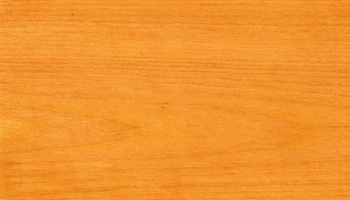
Light Red Meranti | Shorea argenifolia
Light Red Meranti is a tropical rainforest species found throughout South East Asia and the South West Pacific, where it is used for decorative purposes. Other Names: Perawan, Meranti Bunga, Binatoh (Sarawak), Borneo Cedar, Light Red Seraya, Seraya Majau (Sabah), Meranti Merah (Indonesia), Meranti Bakau (Malaysia), Saya (Thailand), Damar (Borneo), Alan Bunga (Sarawak), Almon (Philippines), Shorea albida, Shorea leptoclados, Shorea rugosa, Shorea acuminata, Shorea leprosul, Shorea macroptera, Shorea ovalis, Shorea parvifolia, Shorea smithiana, Shorea quadrinervis.
Light Red Meranti is a tropical rainforest species found throughout South East Asia and the South West Pacific islands, including the Philippines, Indonesia, and east Malaysia. In Australia, Light Red Meranti is marketed simply as Meranti, or can be found under the names Borneo Cedar, Seraya, Lauan, and Philippine Mahogany.
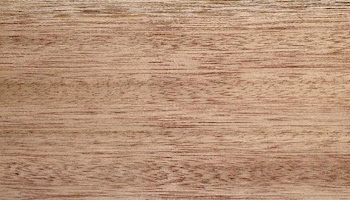
The timber’s heartwood ranges from pink to pinkish-brown. The sapwood is sometimes lighter than the heartwood, but differentiation cannot always be made. The grain is moderately coarse but even in texture with quarter sawn material sometimes displaying an attractive ribbon figure. Growth rings are absent and rays are medium to fine.
Light Red Meranti is a softwood and not resistant to termites. It can be dried using conventional methods and bonded using standard procedures. While the sapwood readily accepts preservatives, penetration of heartwood is insignificant using current commercial processes. The timber can be painted, stained, or polished but the open grain means surfaces should be filled before finishing. This species also machines well to a smooth surface and takes standard fittings and fastenings easily.
It is commonly used for decorative applications including paneling, flooring, joinery, mouldings, plywood and turnery. It is regularly sought after for furniture and carving as well.
Manna Gum | Eucalyptus viminalis
Manna Gum is an Australian hardwood timber of limited commercial availability. It is suitable for applications such as flooring, joinery, paneling, furniture and general construction. Other Names: Ribbon Gum, Rough-barked Manna Gum, Coast Manna Gum, White Gum.
Manna Gum is a hardwood timber species occurring in the cooler areas of South Australia, Tasmania, Victoria and the tableland districts of New South Wales. The heartwood of the species is a pale pink or pinkish-brown colour, often with distinctive light grey streaks. Sapwood is not clearly distinguishable from the true wood. The texture of Manna Gum timber is medium and even with a variable grain and prominent growth rings. It is usually quarter-sawn.
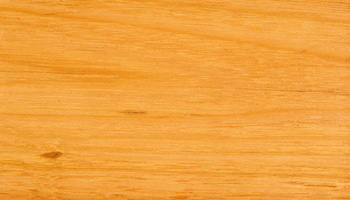
Manna Gum is a moderately durable timber. Its heartwood lacks natural termite resistance and untreated sapwood is susceptible to Lyctid borer attack. Although moderately hard, Manna Gum timber is easy to work by hand or machine. It glues satisfactorily using commercially available bonding agents. Pre-drilling is recommended when nailing near the ends of boards, to avoid splitting.
Uses of Manna Gum timber range from general construction to internal joinery, furniture, paneling, flooring and tool handles. Potential applications include plywood.
Despite a striking appearance especially suited to more formal decorative applications, Manna Gum timber is relatively uncommon due to the difficulties it presents in drying. The timber is prone to internal honeycombing, surface checking and collapse during seasoning.
Marri | Corymbia calophylla
Marri is a distinctive bloodwood native to Western Australia used mainly for fine furniture crafting and flooring. Other Names: Red Gum, formerly Eucalyptus calophylla, Port Gregory Gum. It is an adaptable tree that grows in both jarrah and karri forests in the state’s southwest, from north of Geraldton to Cape Riche and inland beyond Narrogin, and can also be found on the Swan Coastal Plain and Darling Scarp.
Marri is often called Red Gum due to the gummy red protrusions often seen on its trunk. As the name suggests, the timber is high in gum, resulting in low recovery rates of first grade timber. In the past, few timber millers produced it, however Marri’s feature grain has become more popular in recent times for making fine, handcrafted furniture.
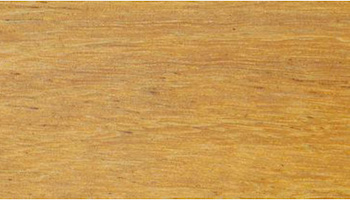
The dark red gum of the Marri tree contrasts beautifully with the yellow to pale brown heartwood, while the 40mm wide sapwood is noticeably paler and often tending to white. Marri has a rather coarse but even texture with slightly interlocked grain. Gum veins are common and logs are generally sound to the centre.
Marri timber is increasingly used for modern household furniture. The finished honey-coloured timber with a distinctive vein structure makes handsome flooring. It can also be used for general construction, handles, oars and sporting equipment, while preservative-treated material is useful for piles, poles and posts.
Merbau | Insia Bijuga
Merbau is a popular hardwood from South East Asia used in a wide variety of applications from construction to indoor and outdoor furniture. Other Names: Kwila, Ipil, Vesi, Johnstone River Teak or Scrub Mahogany.
With its high degree of natural durability and strength it is appreciated for external applications in rugged engineering, construction and marine contexts. Merbau also features in backyards as outdoor furniture, and internally across a range of joinery, flooring and other uses.
In its natural setting across North Queensland, Malaysia, Fiji, Vietnam, the Philippines, Madagascar, Papua New Guinea, Thailand, Solomon Islands, New Caledonia, Vanuatu and Samoa, the Merbau species can grow up to 40 metres in height, with a 0.6 metre trunk diameter. The bushy tree, with distinctive local names, will often form a spreading canopy. The attractive yellow-orange brown hue of freshly cut heartwood deepens or reddens with ageing. This contrasts markedly with the Merbau sapwood, which is white, pale yellow or buff coloured. If left untreated, the sapwood is susceptible to lyctid borer attack. Beyond that, Merbau is quite resistant to termites and seasons well with kiln or air-drying, exhibiting only a low degrade and very little shrinkage or movement.
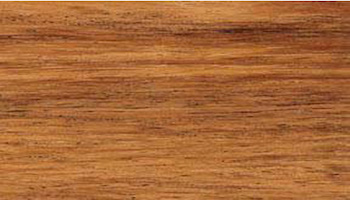
The wood grain of the Merbau can vary but it is usually interlocked or wavy, with a coarse but even texture, often prized for its attractiveness on backsawn material. It will finish well with paint, stain, and polish although gum bleed is a possibility. Merbau is a versatile wood product. It is utilised for larger-scale projects and general construction, along with common use for outdoor settings and barbeque trolleys, and for joinery, flooring and fitting purposes. As it turns well and responds to hand tools it can be applied to more specialised work, such as cabinet making, musical instruments, boat building, carving and tool handles.
Messmate | Eucalpytus obliqua
Messmate is a well-known Australian hardwood with timber varying in colour from pale browns through to light yellows with subtle hints of peach. Other Names: Messmate Stringybark, Brown-top Stringybark, Australian Oak, Tasmanian Oak, Victorian Messmate.
It has been known to grow to 90 metres tall, with a trunk up to three metres in diameter. A well-known Australian hardwood that is in high demand for a wide variety of applications, Messmate is often sold with Mountain Ash as Vic Ash or Tasmanian Oak. It varies in colour from pale browns through to light yellows with subtle hints of peach. The sapwood is pale yellow to pale brown, with light brown heartwood. A species rich and warm in detail, it has an even, moderately coarse texture. The sometimes interlocking, straight grains feature beautifully defined rings. Gum veins are quite common.
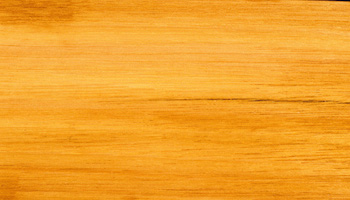
Messmate timber has moderate hardness and strength, but low durability. It splits easily and is susceptible to lyctid borer attack. It is relatively easy to work, glue and it bends well. It will readily accept stains, paints and polishes but can be difficult to impregnate with preservatives.
Messmate is mostly used for pulp production and general construction and manufacture, especially framing above ground (when protected), internal flooring, paneling, plywood, protected external use, internal joinery and furniture.
Mountain Ash | Eucalyptus regnans
Mountain Ash is a large Australian hardwood that can be used for timber framing, flooring, internal applications and furniture. Other Names: Stringy Gum, Swamp Gum, White Mountain Ash, Australian Oak, Tasmanian Oak, Victorian Ash.
Mountain Ash has a straight grain but visible gum veins are common. With its course or stringy texture, it is sometimes referred to as ‘Stringy Gum’. Mountain Ash is similar in appearance to Alpine Ash. The heartwood is pale brown, sometimes pinkish and, like alpine ash, the sapwood is not always clearly distinguishable. A fiddleback marking may occur at the butt.
Care needs to be taken when drying Mountain Ash because of its proneness to collapse and internal checking, as well as surface checking on the tangential surface. There is minimal shrinkage after drying.
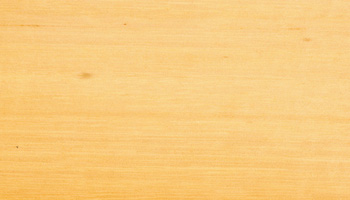
To ensure good quality boards, logs will be quarter-cut which provides excellent dimensional stability. Reconditioning is standard practice.
Mountain Ash can be used for general construction, such as framing, and interior applications such as flooring, paneling, high-end joinery and furniture. It is also used to manufacture plywood and may also be used for weatherboards, cooperage and pulp.
Mountain Grey Gum | Eucalyptus cypellocarpa
Mountain Grey Gum is an Australian hardwood timber often used for general construction purposes and for flooring and paneling. Mountain Grey Gum is a hard and moderately durable timber species. It is suitable for a range of applications including general construction, flooring, paneling and sleepers. Other Names: Monkey Gum, Spotted Mountain Gum, Small-fruited Mountain Gum, Mountain Blue Gum, Eucalyptus goniocalyx.
The wood of this species is a pale brown colour, often with pink or yellow tinges. Sapwood is generally paler, but not always visually distinct from the heartwood. Grain is typically straight and close, with occasional interlocking. Texture is moderately coarse and even, and gum veins are common.
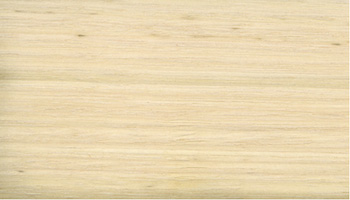
Mountain Grey Gum timber is moderately durable. Untreated heartwood, although lacking termite-resistance, has an above ground life expectancy of between 15 and 40 years. Untreated sapwood is susceptible to Lyctid borer attack.
Given the timber’s hardness, Mountain Grey Gum is reasonably easy to work by hand or machine. Common uses of mountain grey gum timber include bridge and wharf construction, general construction applications such as building framework, wheelwright work, sleepers, paneling and flooring. The timber has potential for furniture, joinery and veneer applications, although care is required in the selection of timber suitably free of gum veins.
Mountain Gum | Eucalyptus dalrympleana
Mountain Gum is an Australian hardwood timber species, useful for various applications ranging from furniture and flooring to general construction. Other Names: White Mountain Gum, Kindlingbark.
Mountain Gum is a hardwood tree reaching heights of up to 50 metres in favourable conditions. It occurs naturally in Queensland, New South Wales, Victoria and Tasmania.

The heartwood of this species is pale pink or pinkish brown in colour; sapwood is visually indistinct. The texture of this straight-grained timber ranges from fine (latewood) to relatively coarse (earlywood). Growth rings are prominent because of the darker latewood.
Due to its moderate hardness and durability, applications of Mountain Gum timber include general building construction, joinery, flooring and the fabrication of tool handles. Heartwood lacks natural termite-resistance, and untreated sapwood is susceptible to Lyctid borer (powder post beetle) attack. Mountain Gum timber products have limited commercial availability.
Myrtle Beech | Nothofagus cunninghamii
Myrtle Beech is an attractive Australian hardwood used for internal-use applications such as decorative veneers, paneling, joinery and flooring. Other Names: Beech, Tasmanian Myrtle, Southern Myrtle, Myrtle.
Myrtle Beech, also known as Tasmanian Myrtle, is a medium-sized hardwood that mainly grows in the temperate rainforest areas of Tasmania and eastern Victoria. While its name may imply otherwise, Myrtle Beech has no connection to the European Myrtle. The name ‘Myrtle’ is believed to have come from the early timber workers.
The heartwood can be pink or a more popular warm reddish brown and may also feature traces of orange, while the sapwood is pale and narrow. Even-textured, Myrtle Beech has a fine grain that can be straight, interlocked or feature a fiddleback pattern. Growth rings may also be visible. The burls and knotty wood of Myrtle Beech are favoured by craftspeople.
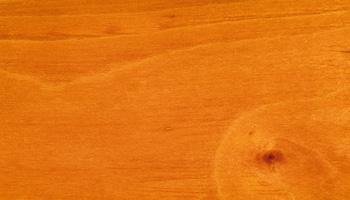
While Myrtle Beech is good for steam bending, it only provides moderate workability. Some collapse can occur through drying.
A strong and dense timber, it is not particularly durable, and due to its generally colour-rich appearance, Myrtle Beech is favoured for internal applications such as decorative veneers, high-end joinery, furniture and flooring. Myrtle Beech is also used for bridge and wharf decking and plywood.
Narrow-leaved Peppermint | Eucalyptus australiana
Narrow-leaved Peppermint is an Australian hardwood used for construction and fencing. Other Names: Eucalyptus radiata, Eucalyptus robertsonii.
Narrow-leaved Peppermint is a member of a family of eucalypts used in the production of oils. It grows in the mountainous areas of New South Wales and Victoria, and in Tasmania. Although many members of the peppermint family are not suitable for use in construction, the Narrow-leaved Peppermint has been used for construction, fencing, joinery, outbuildings, handles, sporting goods, and novelties.
The heartwood is pale to light brown, and the sapwood slightly lighter but not readily discernible. The grain is straight or interlocked, and the texture is even and of medium fineness. Although gun veins are common in the Narrow-leaved Peppermint, they are rather less so in this timber than in other members of the peppermint species, though if present they can cause problems in working the timber.
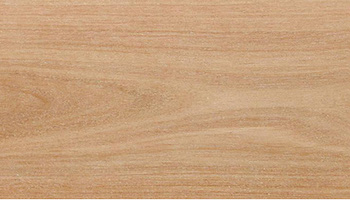
The heartwood of Narrow-leaved Peppermint is moderately durable, and the sapwood is susceptible to lyctid borer, though not to termites. Narrow-leaved Peppermint works fairly easily with a reduced cutter angle. Pre-boring is necessary. The timber glues well and comes to a reasonable finish, though gum veins are common and can cause problems.
New England Blackbutt | Eucalyptus andrewsii
New England Blackbutt is a large Australian hardwood from the tablelands of northern New South Wales and southern Queensland used mainly for general construction. Other Names: New England Ash, New England Peppermint, Eucalyptus campanulata.
Also known as New England Ash, it is similar in appearance yet not quite as durable as Blackbutt. The heartwood is pale brown, while the sapwood is much paler in appearance. New England Blackbutt has an even texture and generally straight grain. Gum veins are usually present.
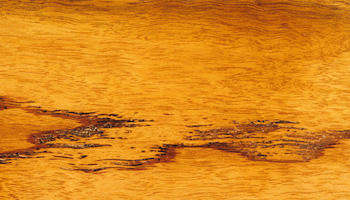
New England Blackbutt can be stained, painted or polished but there can be issues with painting because of its tendency to surface check. The high extractives of mature wood can cause problems with some adhesives. These extractives can also cause staining on painted surfaces exposed to the weather. Blackbutt machines well but is only fair for steam bending.
A durable hardwood, New England Blackbutt is used for general construction applications, flooring and joinery.
New Guinea Walnut | Dracontomelum magniferum
New Guinea Walnut is a decorative hardwood timber used in turnery, cabinetmaking, paneling and carving. It is most commonly available as a veneer. Other Names: Bau, Laup, Loup, Pacific Walnut, Paldao, Dao, Sengkuang, Dracontomelum spp., Dracontomelum dao.
New Guinea Walnut is a large hardwood that co-occurs with the taun timber species in the lowland forests of Papua New Guinea. It is also found in Indonesia, Malaysia and the Philippines. New Guinea Walnut timber products are mainly used for furniture, paneling, turnery and carving. Its most common form is as a decorative veneer.
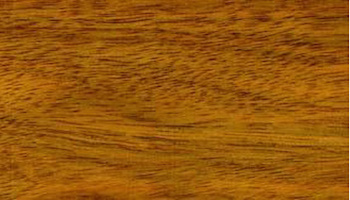
The true wood of this species is grey-brown in colour, with an orange cast and bands of darker brown and black. The clearly demarcated sapwood, growing to a width of up to 100 millimetres, is cream-coloured. The texture of New Guinea Walnut is moderately coarse and even; grain is moderately interlocked. Waviness of the grain often produces an attractive, broken striped figure on quarter-sawn surfaces.
The timber seasons readily, with a slight tendency to warp in the thinner sizes, and to check or distort if the drying is hurried. New Guinea Walnut is only moderately durable. It is susceptible to marine borers, but resistant to termites. It is resistant to preservative impregnation.
As small quantities of New Guinea Walnut are only sporadically exported from growing regions, commercial availability of this timber is limited.
Oregon Maple | Acer macrophyllum
The handsome Oregon Maple grows on the pacific coast of North America and is prized for furniture and cabinetry veneers. Other Names: Maple, Broad-leaved Maple, Big-leaf, British Columbia Maple, Pacific Maple.
The Oregon Maple’s huge, distinctive leaves are the largest of any maple species. It grows on the pacific coast of North America, from northern British Columbia to California, where it is widely recognised for its superb autumn foliage. It is sometimes used for maple syrup production.
Oregon Maple heartwood varies from creamy white to light reddish brown with pinkish hues. The sapwood is reddish-white, sometimes with a greyish cast. Although much of the wood is straight-grained, some highly figured wood, which includes wavy, quilted, fiddle-back or birds-eye grain patterns, is also produced. Growth rings are indistinct and moderately small to medium in size.
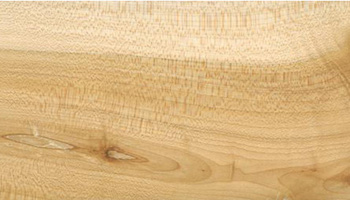
Oregon Maple is very hardwearing, extremely stable and moderately durable. It can therefore be used for pergolas and structural framing, flooring and interior joinery. Popular for its availability in long lengths, it is only moderately easy to work with. Its high resin content sometimes crystallises on the surface of the timber but can be scraped off when dry. Oregon Maple is not good for staining but takes polyurethanes well and oil can add more depth of colour.
Oregon Maple is also popular in veneer production for furniture and cabinetry. Its highly figured wood is sought after for musical instruments such as guitar bodies, stringed instruments and piano frames as well as salad bowls. The Indigenous Lakwungen people of Vancouver Island knew it as the ‘Paddle Tree’ and created paddles and spindle wheels from its wood.
Philippine Dark Red Mahogany | Shorea Negrosensis
Philippine Dark Red Mahogany is a tropical hardwood typically from South East Asia and widely used as an alternative to Teak.
Other Names: Shorea Polysperma, Shorea Sqamata, Shorea Palosapis, Tiaong, Red Lauan, Ganguile, Bataan. Also sold as White Lauan when pale in colour.
Part of the extensive Shorea species, it is a popular export timber and widely used as an alternative to Teak.
The heartwood of the Dark Red Mahogany comes in various shades of red, from pale pink to deep red brown. The sapwood is cream to pale grey and easily identified, with its uniformity of colour setting it apart. The wood is tightly grained with a very fine and even texture.
Philippine Dark Red Mahogany timber is generally used for exterior and interior joinery, shopfittings, boatbuilding and flooring. Once treated it can be used for exterior cladding or other uses where exposure is a factor.
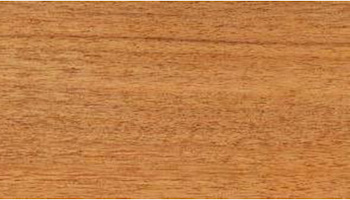
The timber works well, particularly with hand tools, however some adjustment to machine knives and saw blades may be necessary due to the variation in density and grain patterns when processing large or mixed volumes because of the slight differences in the individual species. The exceptional density of the timber can sometimes lead to more visible cracking but this is generally a rarity. Carving can prove a problem due to its brittle nature and fine detailing is difficult as it has a tendency to chip easily. It does, however, machine well.
Philippine Dark Red Mahogany timber has medium bending and crushing strengths and a low stiffness factor making it susceptible to shock loads. The wood buckles severely during steam bending and care must be taken during seasoning, as distortion may be a problem. Drying will be moderately slow.
The sapwood is susceptible to powderpost beetles and marine borers and should be treated correctly in the manufacturing process.
The wood glues well and takes nails and screws, although some localised tearing of the grain can occur when being cross cut and pre-drilling is recommended near the ends to avoid splitting.
Philippine Light Red Mahogany | Shorea Spp
Philippine Light Red Mahogany is a tropical hardwood. Other Names: Almon, Mayapis, White Lauan, Bagtikan, White Seraya, Gerutu, Thingado, Meranti, Putih, Parashorea Spp, Parashorea malaanonan, Shorea almon, Shorea squamata, Palosapis, Parashorea plicata, Pentacme contorta, Pacific Maple.
Philippine Light Red Mahogany is a tropical hardwood typically found in Malaysia, Indonesia and the Philippines. Part of the extensive Shorea species that includes over 180 species, it is a popular export timber and widely used as a slightly cheaper alternative to teak.
The heartwood of the Light Red Mahogany is a pale straw colour when first cut, with a characteristic oily odour. It turns to a pale pink to mid red brown hue as it dries. The sapwood is up to 50mm wide and usually yellow, pink, or grey and sometimes not easily distinguished. The timber’s texture is coarse but even, with an interlocked grain that often produces a stripe or ribbon figure on the radial surface. Logs may contain brittleheart. Narrow concentric lines of resin ducts may be mistaken for growth rings and pinhole borer discolouration and pencil streak is more common than in Dark Red Mahogany.
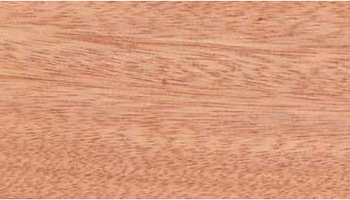
The timber is relatively easy to dry but bluestain can be a problem unless precautions are taken. It mostly finishes well, although tools must be kept sharp to avoid producing a woolly surface. This feature can often be overcome with sanding. Light Red Mahogany nails and glues well but beware of localised tearing when cross cutting and pre-drilling. It is unsuitable for steam bending.
Philippine Light Red Mahogany is often used for plywood, internal moulding, joinery and paneling. It is popular for domestic finishing applications such as skirting boards, architraves and door jambs.
Queensland Maple | Flindersia brayleyana
The Queensland Maple is an Australian hardwood prized for its attractive wavy or curly grain, ideal for decorative furniture and musical applications. Other Names: Maple. It flourishes in the northern Queensland rainforests between Townsville and the Windsor Tableland. With these areas now heritage protected, Maple wood is harder to come by, although it is still prized for use in furniture and fixtures.
The lustrous sheen of the pink to brownish pink heartwood makes for a distinctive tree. Historically, it was widely used for aeroplane propellers, coach, vehicle, carriages, and boats. It was also popular for creating picture frames, and for musical instruments like guitar necks and piano parts.
The Queensland Maple is not susceptible to lyctid borer attack. Termites can present a challenge and there is also the threat of attack by an insect that calls this distinctive species home. The insect’s destruction to the living tree can leave areas of dark coloured soft tissue, giving dressed surfaces a dimpled appearance – a feature rarely seen in the pretty wood sought for furniture or high-value decorative uses. Such pieces are enhanced by a distinctive grain that is somewhat interlocked and often wavy or curly, but with a medium and uniform texture. On quarter sawn boards, the Maple exhibits waterwave, rib and birdseye figures.
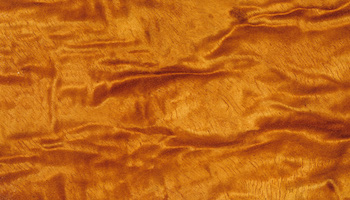
The living Maple does not record its age with growth rings. It appears as a medium-sized tree of up to 40 metres in height and 2.5 metres in stem diameter. The trunk is usually well formed, circular in cross-section and not buttressed. The bark, which is approximately 12mm thick, is grey to brown. It has fairly distinct longitudinal fissures. In older trees these fissures are not so marked owing to a tendency to scaliness. The Maple has a medium durability.
Queensland Walnut | Endiandra palmerstonii
Queensland Walnut is an Australian native hardwood timber. Its uses are mostly decorative and include furniture, plywood, turnery and acoustic guitar backs and sides. Other Names: Australian Walnut, Oriental Wood, Walnut Bean, Black Nut, Black Walnut, Cryptocarya Palmerstonii.
Queensland Walnut is a large rainforest tree growing to a height of around 35 metres with a stem diameter of up to 1.8 metres. It is restricted to the coastal tablelands of North Queensland, between Innisfail and Atherton, where it is the dominant rainforest tree species.
The heartwood of the species varies in colour, but is usually greyish-brown with streaks of chocolate brown, black or pink. The sapwood, up to 100 millimetres wide, is pale yellow. Queensland Walnut timber exhibits medium texture with a moderate natural lustre and shallow open pores. Grain is close and even, usually interlocked, and commonly wavy. This results in a wide variety of figure effects, especially attractive on quarter-sawn surfaces.
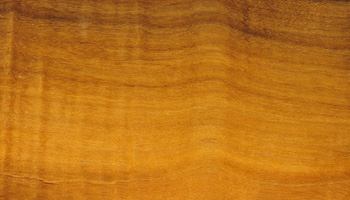
Uses for Queensland Walnut are mainly decorative and include plywood, veneers, shop and office fixtures, turnery, and musical instruments – notably guitar backs and sides. Queensland Walnut is reported to have higher than usual electrical insulation properties, and may be suitable for some types of electrical enclosure applications.
Timber produced from Queensland Walnut has a life expectancy of between five and seven years (for in-ground and above ground applications, respectively). The timber is not termite-resistant, and untreated sapwood is susceptible to borer attack. Sapwood (but not heartwood) is readily impregnated with preservatives. Queensland Walnut is recommended for use in continuously dry situations that are under cover, well ventilated, clear of the ground and fully protected from the weather and other dampness.
Commercial availability of Queensland Walnut timber is currently very limited, due to World Heritage listing of the main sites in which it occurs.
Ramin | Gonystylus macrophyllus
Ramin is a straw-coloured hardwood used for mouldings, flooring, plywood and picture frames. It is an imported straw-coloured hardwood used for mouldings, flooring, plywood, picture frames. Other applications include dowels, handles, turnery and carving. Other Names: Gaharu Buaja, Mavota, Melawis, Ramin Telur, Nununa, Ainunura, Lanutan, Bagyo, Gonystylus spp., Gonystylus bancanus, Gonystylus punctatus.
The timber sold under the name Ramin comes from a mixture of species originating in Malaysia, Indonesia, Philippines, Papua New Guinea and Fiji. It is considered endangered.
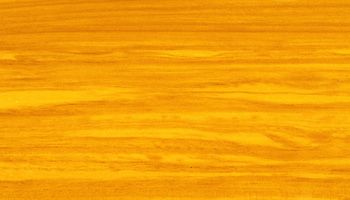
The heartwood is straw-coloured and the sapwood is similarly coloured and up to 60mm. The texture of Ramin is medium and even and its grain is straight or shallowly interlocked, with very little figure. The green timber has an unpleasant odour but this disappears when it is dry.
Ramin is easy to work to a smooth finish. Pre-drilling may be needed when nailing near ends. It peels well, although the veneer is inclined to be brittle, and it is unsuitable for steam bending because of excessive buckling. If any inner bark is present on material being processed, the fine splinters from it can cause skin irritation. It glues well, and takes polish, paint and stains easily.
The untreated sapwood is susceptible to lyctid borer attack and is not resistant to termites. It takes preservatives easily.
Red Bloodwood | Corymbia gummifera
Red Bloodwood is a medium-sized Australian hardwood occurring along the coast of New South Wales and Queensland. It is commonly used in the production of round timber. Other Names: Bloodwood, Pale Bloodwood, Pink Bloodwood, Pale Kulcha Bloodwood, Small-flowered Bloodwood, Eucalyptus gummifera, Eucalyptus corymbosa, Corymbia intermedia, Eucalyptus intermedia, Corymbia polycarpa, Eucalyptus polycarpa.
Taking its common name from the appearance of its heartwood, Red Bloodwood ranges from a dark pink to dark red colour, with much paler sapwood. It has a course texture, with the grain of Red Bloodwood usually interlocked.
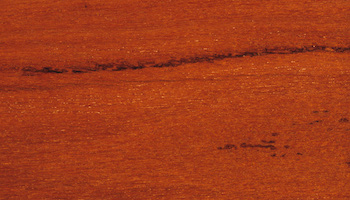
Due to the presence of concentric gum veins, Red Bloodwood is not ideally suited for use as sawn timber as gum veins – or the red-coloured kino veins – can open up during drying. This species is mainly used for round timber applications such as poles, piles and posts, however due to its attractive grain pattern, Red Bloodwood is also used for veneers and decorative paneling.
Red Bloodwood can be painted, stained and polished. It glues satisfactorily, but any surface preparation or machining should be done so immediately prior.
A highly durable and dense species, Red Bloodwood is well suited for in-ground applications such as posts, although untreated sapwood is susceptible to lyctid attack.
Red Bloodwood is generally readily available, especially close to the areas it grows.
Red Cedar | Toona ciliata
Red Cedar is a large hardwood that grows in the coastal rainforest areas of eastern Australia and parts of Papua New Guinea and the Philippines. It is commonly used for decorative applications such as veneers and paneling. Other Names: Cedar, Australian Red Cedar, Thitkado, Toon, Yom Hom, Calantas, Dolipega, Toona, Toona australis, Cedrela toona, Toona Sureni.
Red cedar is a large hardwood that grows in the coastal rainforest areas of eastern Australia and parts of Papua New Guinea, South America, the Philippines and India. It is commonly used for internal decorative applications such as veneers and paneling.

The heartwood of red cedar ranges from a pale pinkish red through to a richer dark reddish brown. The sapwood is paler pink or yellow in colour and is distinctive from the heartwood. Red cedar has a rough, uneven texture with a grain that is usually straight but may be slightly interlocked. Growth rings are often visible. Red cedar also features a distinctive odour that is said to repel moths.
Red cedar is soft and has good workability. It nails and glues well. Red cedar can also be painted, stained and polished and it finishes well, however its rough texture may require extra work. Precautions should be taken when machining red cedar as the sawdust can cause irritation for some people.
Red Ironbark | Eucalyptus sideroxylon
Red Ironbark is a very distinctive Australian hardwood that has been prized for over 200 years for its strength and durability. Other Names: Mugga, Ironbark. As one of a very distinctive group of Australian eucalypts, the Ironbarks, it can be easily recognised by its hard, deeply furrowed, rough bark ranging from a dark grey to black hue. It has been a preferred structural timber for over 200 years, due to its long-term performance in weather-exposed structural applications.
Like its name, Red Ironbark heartwood is a deep dark red to red-brown. By contrast, its sapwood is a distinctive pale yellow in colour. The timber’s texture is fine and even with an interlocked grain. It is extremely hardwearing and highly durable, allowing for wide range of external applications. However the timber is very hard to work, limiting some applications that require fine detailing. It is slow to dry and care needs to be taken to minimise surface checking.
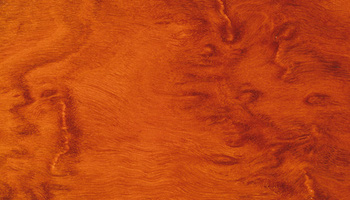
Red Ironbark is ideal for engineered structures that require excellent durability and strength, including wharf and bridge members, poles, railway sleepers, mining timbers. The timber is also suitable for all building construction materials from poles, framing, flooring, decking and cladding. Additionally, the wood is suitable for both indoor and outdoor furniture.
The Red Ironbark tree has a tendency towards piping, where a hollow forms in the trunk’s centre trunk and reduces recovery rates and sectional sizes of sawn timber.
Red Mahogany | Eucalyptus pellita
Red Mahogany is an Australian hardwood with a fine grain and stunning red colouring used for engineering applications, construction, furniture and turnery. Other Names: Red Stringybark, Daintree Stringybark (Qld), Red Messmate (Qld), Eucalyptus resinifera.
Red Mahogany is a hardwood with a fine grain and stunning red colouring. It is a versatile wood suitable for engineering applications and for use in construction. Due to its attractive figure, it is prized for furniture and turnery. Red Mahogany has become a prestigious timber due to its durability, termite resistance and rare colouring. Different species of Red Mahogany grow in different regions of Queensland, New Guinea and Irian Jaya. E. resinifera occurs from Jervis Bay in New South Wales to Coen in Queensland. E. pellita occurs from north of Townsville to Iron Range on Cape York Peninsula and through areas from Gladstone in Queensland to southern coastal New South Wales. Trees of this species reach a height of 40-45m with 1-1.5m trunk diameter. The bark is fibrous, shallow to coarsely fissured, and persists on even the small branches. Different species have differently coloured bark; E. resinifera being greyish to reddish-brown and E. pellita being reddish-brown to brown. Red Mahogany is a dense, durable timber. The heartwood ranges from red to dark red, but sapwood is distinctively paler.
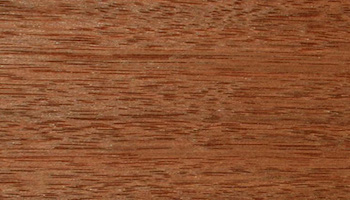
The even grain is generally moderatley textured, displaying the occasional gum vein, and at times the grain is interlocked producing an attractive figure. The density of the timber varies depending on its source; plantation grown 8.5 year-old timber has 70% of the density of natural grown timber, creating some variance in hardness. The common uses of Red Mahogany include wharf and bridge construction, railway sleepers and in mining timbers. It is used for a wide range of interior and exterior purposes in general construction and can be made into indoor and outdoor furniture. Other uses include boat building, coach, vehicle and carriage building and structural plywood.
Red Stringybark | Eucalyptus macrorhnycha
Red Stringybark is a moderately durable hardwood species native to southeast Australia. It is used in a variety of applications, including light construction, engineering and cabinetmaking. It features pale red or pinkish-brown heartwood, with cream-coloured sapwood approximately 50 millimetres wide. Red Stringybark timber is close-textured. Interlocking of its grain often produces an attractive fiddleback figure.
Uses of this moderately durable timber range from light construction (fencing, framing, weatherboards, posts, poles) to engineering (sleepers, utility pole cross-arms, bridge and wharf construction). Red Stringybark has also found favour as a cabinet timber in the manufacture of furniture and bench tops.
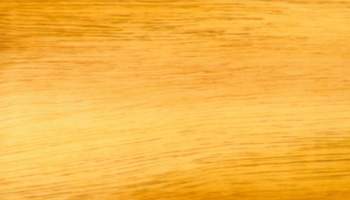
The timber of this species machines, routs, saws and sands well. It occasionally exhibits some natural feature and surface cracking. It is amenable to the use of standard fastenings and fittings. Due to the timber’s natural density, polyurethane glues are best for bonding Red Stringybark, The timber accepts most standard coatings, and responds particularly well to oil-based finishes. Red Stringybark timber products are not very common and supplies are usually limited.
River Red Gum | Eucalyptus camaldulensis
The timber of the iconic River Red Gum has a reputation for durability, strength and for its distinctive brilliant red colouring ranging from pink to almost black. Other Names: Blue Gum, Red Gum, Murray River Gum, yarrow, Eucalyptus Rostrata. The River Red Gum (Eucalyptus camaldulensis) is an iconic Australian tree, yielding an equally iconic Australian timber. The timber of this renowned species has a reputation for durability, strength and its distinctive red colouring. Its wide availability has seen it used for a range of applications including heavy construction, railway sleepers, flooring, framing, fencing, plywood and veneer manufacture, wood turning, firewood and charcoal production. In keeping with its name, this species is commonly found along the rivers. It can withstand submersion during floods for long periods. The hallmark of River Red Gum timber is its distinctive red appearance.
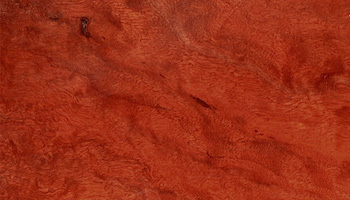
The heartwood is red to reddish brown in colour with the timber’s texture having some coarseness. The grain is commonly interlocked with frequent gum veins. The timber’s charm is often best showcased in furniture; the spectacular deep red colour and the typical fiddle-back figure of River Red Gum timber make each piece of furniture unique. The heartwood of the River Red Gum displays considerable durability, allowing for a range of exterior applications, including heavy commercial construction, general framing, sleepers, flooring, panelling and joinery.
Rose Gum | Eucalyptus grandis
Rose Gum is a fast growing Australian native hardwood with a wide range of applications from general construction to fine furniture making. Other Names: Flooded Gum, Scrub Gum. When grown in a favourable environment, Rose Gum is one of the most productive plantation eucalypts. It is a very tall forest tree, reaching 45 to 55 metres in height, with a trunk of between one and two metres in diameter. The trunk displays rough, stringy grey-brown bark at the base, with a white, powdery bark extending above. As its name suggests, Rose Gum has heartwood that is pink to red-brown in colour, with paler sapwood. The timber can be moderately course and is predominantly straight grained.
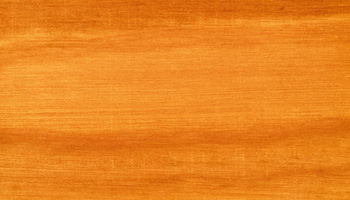
Rosewood | Pterocarpus indicus
Rosewood is a hardwood whose attractive colour has made it popular for furniture, paneling, veneers, and in the making of musical instruments. Other Names: Linggoa, Sena, Amboyna, Angsana, Narra, Padauk. Rosewood is a hardwood native to South-East Asia, Papua New Guinea, the Solomon Islands, Sabah, Philippines, Indonesia and Malaysia. Some trees of the species grow very highly figured burrs, which are given the name ‘Ambonya wood’ from the Indonesian island of Ambon, and in veneer form are used in the making of furniture. Other uses of the wood include turnery, paneling, guitar-making, and knife handles.
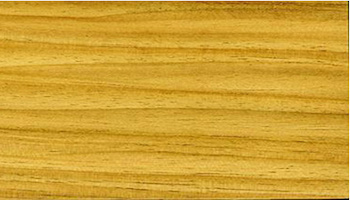
The heartwood of Rosewood can be either golden brown or a dark blood-red, while the sapwood is pale yellow and up to 60mm wide. The wood is of medium texture and the grain is variable. Freshly cut, the wood has a fragrant odour and is often highly figured: burrs are highly prized in furniture-making.
The timber is susceptible to lyctid borer, but is termite resistant. In its sawn form it is easily worked with hand and machine tools. The heartwood is hard to stain, but polishes to a lustrous finish. Rosewood is imported in small quantities.
Satin Sycamore | Ceratopetalum succirubrum
Satin Sycamore is a relatively scarce timber, sourced from northern Queensland, Indonesia and Papua New Guinea. Its main uses are in furniture, joinery and as a decorative veneer. Other Names: Blood-in-the-bark, North Queensland Coachwood, Jackwood.
Satin Sycamore is a medium-sized hardwood occurring in coastal rainforest areas of northern Queensland, Indonesia (Irian Jaya) and Papua New Guinea. The heartwood of this species is a pale or pinkish-brown colour, not visually distinct from the sapwood. The texture of Satin Sycamore timber is fine and even. Its grain is usually straight, with occasional interlocking. Common applications of Satin Sycamoreinclude furniture, joinery and as a decorative veneer. It is sometimes used for sides and backs (but not generally soundboards) of acoustic guitars. Satin Sycamore glues relatively well, but the dry wood rapidly dulls cutting edges. Commercial availability of Satin Sycamore timber products is currently limited.
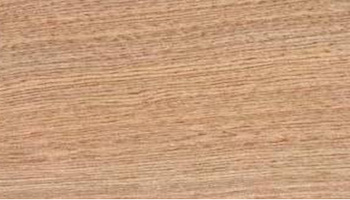
Sassafras | Doryphora Sassafras
Sassafras is a hardwood, straight-grained and yellowish-grey or brown in colour, used for cabinet drawer sides, brushware, small tool handles, turnery and plywood. Other Names: Northern Sassafras, Socket Sassafras, Socetwood, Canary Sassafras, Yellow Sassafras, Grey Sassafras, Golden Deal, Golden Sassafras, Blackheart Sassafras
Sassafras is a hardwood originating in New South Wales, not to be confused with Tasmanian or Southern Sassafras. It is yellowish grey or brown to dark brown. Its grain is usually straight and the texture very even. The variations in colour make it a popular material for customised items. It is used for cabinet drawer sides, brushware, small tool handles, turnery, and plywood. Sassafras is firm but easy to work. It glues well, and its uniform surface provides a good base for paints.
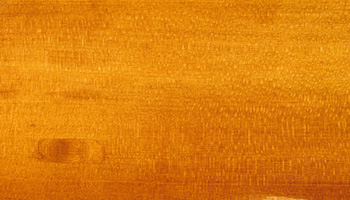
Satinay | Syncarpia hillii
Satinay is a hardwood of limited commercial availability that has been used for flooring, paneling, decorative veneers and furniture. Other Names: Fraser Island Turpentine. The heartwood of Satinay is reddish brown, while the sapwood is usually distinctively paler, and fuming with ammonia produces a greyish plum colour. The texture is relatively fine and even, and the grain rather interlocked, giving some ribbon figure to the radial surface, which also has a subdued ray fleck. The wood resembles turpentine but is easier to work, and the logs generally have very few defects. The sapwood is not susceptible to lyctid borer attack and it is termite resistant. It also accepts preservatives easily. It is good for firm carving, though it is hard to glue and care is needed when dressing because of the interlocking grain. It takes polish, paints and stains well.
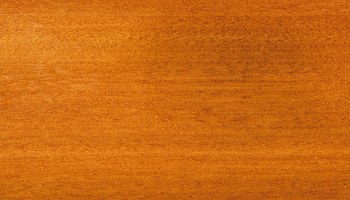
Shining Gum | Eucalyptus nitens
Shining Gum is a native Australian hardwood gaining popularity for its versatility, interesting colour and speckled appearance. Shining Gum produces timber used predominantly in construction and furniture making. As a plantation managed timber subject to advanced silvicultural and milling methods, Shining Gum is gaining in popularity.
It is a popular plantation timber as it can be extremely quick growing. Eucalyptus nitens is grown as a commercial plantation species in cool temperate regions around the world, including Tasmania, New Zealand, South Africa and Chile. Shining Gum trees can reach heights of 70m, and diameters of 1-2m at breast height. Its form is desirable, with a straight bole up to two-thirds the height of the tree. Its smooth white or greyish bark is shed in long ribbons. It gets its name nitens (meaning shining) from the distinct glossy fruits, which have a varnished appearance, as well as the leaves, buds and bark, which can also appear to shine. The juvenile leaves have a pleasant fruity smell.
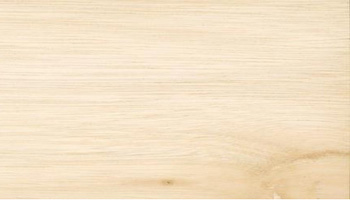
Shining Gum timber exhibits some interesting colours making it an appealing produce for furniture making. The wood is pale pink and straight grained. It is suitable for general building, flooring, joinery, paneling, furniture and framing. It is also considered a good quality pulping species, although not as high yielding as some due to its lower density.
Shining Gum is not particularly durable and is not recommended for external use, especially not in-ground. It is vulnerable to termites and the sapwood is susceptible to Lyctid borer.
Silver Wattle | Acacia dealbata
Silver Wattle is a native Australian hardwood suitable for most internal applications including decorative, architectural and structural uses.
hat can reach heights of around 30 metres and a stem diameter of up to 75 centimetres. Because Silver Wattle has a relatively short lifespan and regenerates well after fire, supplies are usually readily available from stands of regrowth harvested on rotation. This species yields a striking light brown to subtle pink timber with a straight grain and porous even texture. Silver Wattle’s distinctive growth rings create an appealing and attractive figure; a striped pattern often results on back-sawn surfaces. It is a timber of choice among furniture designers and manufacturers, by whom it is often used in decorative counterpoint to Blackwood, a closely related more common and much darker hardwood timber.
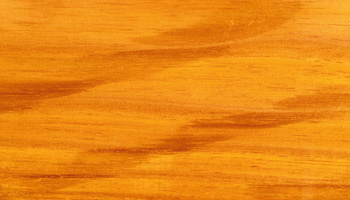
Silver Wattle is easy to work with both machine and hand tools. It may be turned, bored, sawed and planed with excellent results. Pre-drilling is recommended when nailing, in order to prevent splitting. Silver Wattle is an excellent bending timber. It glues satisfactorily with most common adhesives, accepts most finishes readily, and may be polished to a smooth, lustrous surface. Silver Wattle is not recommended for external applications, but is sufficiently durable for most internal applications including decorative, architectural and structural use. The untreated sapwood of this species is susceptible to Lyctid borer attack.
Silvertop Stringybark | Eucalyptus laevopinea
Silvertop Stringybark is a native Australian hardwood timber species commonly used for flooring and decking, among other general construction applications. Other Names: Silvertop Stringy. Silvertop Stringybark – so named for the grey, fibrous bark extending to the species’ upper limbs, which by contrast are whitish and smooth – can attain heights of up to 40 metres. The species occurs natively on the coastal fall of tablelands, mainly in northern New South Wales.
The heartwood of this species is a pale brown colour, sometimes with pinkish hues. Its sapwood, up to 50 millimetres in width, is visually indistinct from the true wood. The grain of Silvertop Stringybark is typically close and straight, with a medium and even texture, relatively free of gum veins.
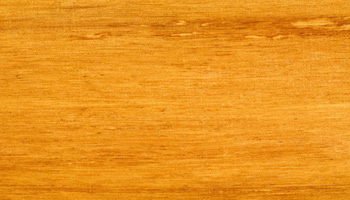
Silvertop Stringybark is a hard timber in relation to both indentation and working with hand tools. It is readily worked by machine, and amenable to the use of standard fittings and fastenings.
In terms of durability, Silvertop Stringybark has life expectancy of between seven and 15 years, and an in ground life expectancy of between five and 15 years. Silvertop Stringybark is not termite-resistant. Sapwood of the species is not susceptible to lyctid borer (powder post beetle) attack, and is readily impregnated with commercially available preservatives.
Southern Blue Gum | Eucalyptus globulus
Southern Blue Gum is a widely forested Australian hardwood species. Its timber products are readily available and suitable for flooring, furniture and a range of general construction applications. Other Names: Eurabbie, Tasmanian Blue Gum, Maiden’s Gum, Gippsland Blue Gum.
The colour of Southern Blue Gum timber ranges from pale straw to brown, often with blue, green or grey tinges. Regrowth material can exhibit shades of pink. Sapwood is somewhat paler than the heartwood, but not always clearly demarcated. Growth rings are prominent on end sections. Grain is often interlocked with a medium and relatively even texture. Timber produced from plantations often exhibits areas of pinhole. Southern Blue Gum is a moderately durable timber. It is not termite-resistant and untreated sapwood is susceptible to Lyctid borer attack. Although very hard, the timber is relatively easy to work, fix and dress. Due to its density, seasoning requires care in order to minimise checking of tangential surfaces. Southern Blue Gum blunts cutting edges but good results can be achieved with careful working and the use of correct machinery. The timber can be worked to a smooth and resilient surface that readily accepts most standard finishes. Southern Blue Gum can be difficult to drill, but holes are usually very clean and to size. Seasoned material can be difficult to nail and utmost care is required when gluing. Southern Blue Gum is suitable for steam bending if carefully selected for straightness of grain. Suggested applications of Southern Blue Gum include flooring, joinery, furniture and general construction. The hardness and brightness of this timber makes it an ideal flooring material for indoor sports centres and other venues. Other applications include wagon building, framing, boat building, handles, piles, posts, sleepers, paving blocks, spokes, felloes and shafts.
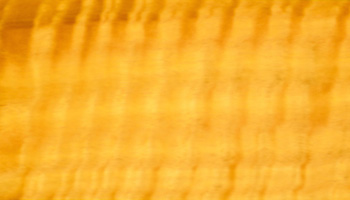
Southern Mahogany | Eucalyptus botryoides
Southern Mahogany is a native Australian hardwood popularly used for indoor and outdoor applications as well as furniture and cabinetry. Other Names: Bangalay (NSW), Gippsland Mahogany (Vic), Woollybutt, Swamp Mahogany or Mahogany Gum.
An excellent timber tree, it has deep pink to red-brown heartwood with distinctively paler sapwood. The timber is hard, strong and dense with a medium, even texture and interlocking grain. It is durable and lyctid borers rarely attack the sapwood.
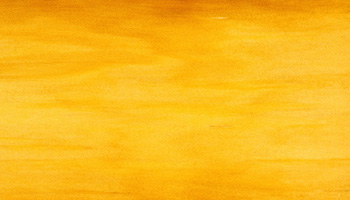
Spotted Gum | Corymbia maculata
Spotted Gum is a premium Australian hardwood that is used widely in structural, exterior and internal applications. Other Names: Lemon-scented Gum, Spotted Irongum, Eucalyptus maculata, Corymbia citriodora, Eucalyptus citriodora, Corymbia henryi, Eucalyptus henryi.
The species referred to as Spotted Gum vary in appearance but not in durability class or other properties. The heartwood ranges from light brown through to dark red-brown hues. Sapwood is usually white to light brown in colour. The presence of a wavy grain can produce an attractive fiddle-back figure. The wood has a slightly greasy feel, a characteristic that aids machining and boring. Spotted Gum components that are 18mm thick or greater do not require fire retardant treatment for use in construction in bush-fire prone areas.

Spotted Gum is used in engineering applications such as wharf and bridge construction, railway sleepers, cross-arms and mining timbers. It is suitable for a range of building applications, such as posts and poles, framing, flooring, lining, decking and cladding. Spotted Gum is also used in the manufacture of veneer and plywood. Other applications include boatbuilding, tool and implement handles, polo sticks and diving boards. Compared to other Australian hardwoods, Spotted Gum is a minimal staining timber as it is less prone to bleed-through of tannins than other species. Spotted Gum is also a good timber for carving and woodturning.
Sugar Gum | Eucalyptus cladocalyx
Sugar Gum – an Australian hardwood that is fast becoming recognised as both a decorative and durable timber. This vigorous plantation species has a history of farm use for firewood and fencing. However, Sugar Gum has the capacity to produce higher value sawn timbers.
Where good genetic material has been used in plantation, the form of the timber lends itself to sawlog production with minimal management requirements. This eucalypt originates in South Australia in three distinct populations: the Flinders Ranges, Eyre Peninsula and on Kangaroo Island. Sugar Gums from the Flinders Ranges reach up to 35m in height and have the classic ‘gum’ habit: a straight trunk with steep branches occurring about half way up.
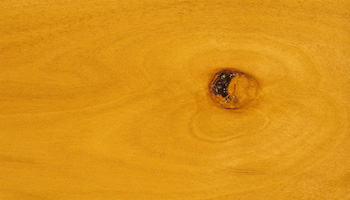
Eyre Peninsula and Kangaroo Island trees are much shorter and often have crooked trunks. Sugar Gums are notable for their mottled yellow to orange bark and clusters of flowers grouped on leafless branchlets inside the tree crown. The old bark is smooth and grey, shedding in irregular patches to expose the fresh yellowy-brown bark.
Timber harvested from Sugar Gum has little defect and is prized for its durability. It is particularly suited to situations requiring high strength where appearance is also important, such as flooring and joinery. Sugar Gum polishes to a superb finish making it highly sought after for decorative applications. The timber can exhibit desirable grain features such as a bee’s wing and fiddle-back figure, suitable for the production of high quality furniture and flooring. Its durability also makes it a valuable timber for exterior applications such as cladding, decking, outdoor furniture and pickets.
Sydney Blue Gum | Eucalyptus saligna
Sydney Blue Gum is an Australian native hardwood timber species that is widely used in general construction and for flooring, furniture and joinery. Other Names: Blue Gum. Sydney Blue Gum is also extensively grown as a plantation species in South Africa and South America.
It is widely used for flooring, cladding, fencing, paneling and boat building. Other common applications include landscaping (as garden sleepers), furniture and joinery. The heartwood of the species ranges in colour from dark pink to a reddish brown.
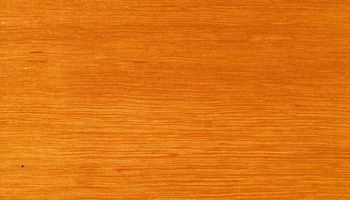
Sapwood is distinctly paler. The grain of Sydney Blue Gum timber is typically straight, with occasional interlocking of grain. Texture is moderately coarse and gum veins are common. Sydney Blue Gum is a moderately durable timber with a life expectancy for in-ground applications of between eight and 15 years. Untreated sapwood is susceptible to Lyctid borer attack. Sydney Blue Gum timber is easy to dry relative to most other eucalypts. It is also easy to work, dress and fix. It responds well to most finishes and takes a good polish, making it popular for decorative applications where moderate durability is required.
Tallowwood | Eucalyptus microcorys
Tallowwood is an extremely hard, durable and versatile Australian native hardwood species. Its timber products are suitable for a wide range of applications.
The heartwood of this species ranges in colour from pale to dark yellow-brown, with occasional tinges of olive green. Sapwood is a whitish colour. The texture of Tallowwood timber is moderately coarse, generally with interlocked grain. Unusually for a eucalypt species, Tallowwood is free of gum veins. Figure is lacking but the timber possesses a distinctive lustre and ‘greasy’ appearance.
Tallowwood timber products exhibit exceptional durability in both in-ground and aboveground applications, where life expectancy is greater than 25 and 40 years, respectively. Although Tallowwood is highly resistant to decay and will withstand damp and wet conditions quite well, its sapwood is susceptible to Lyctid borer (powder post beetle) attack.
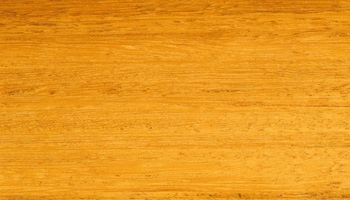
Tallowwood is also used in fencing, landscaping and the construction of retaining walls. Decorative uses include outdoor furniture, turnery and joinery. Other applications include boat building, the construction of coaches, carriages and agricultural machinery, and structural plywood.
Tasmanian Oak | E. delegatensis, E. obliqua & E. regnans
Tasmanian Oak is a premium Australian hardwood timber encompassing three species that grow in the mountainous areas of Tasmania, Victoria and South East NSW. It is a versatile timber perfect for both construction and interior applications, including flooring, paneling, architraves and skirtings. Other Names: Victorian Ash, Mountain Ash, Alpine Ash, Gum-topped Stringybark, Australian Oak, Whitetop Stringybark, White-top, Woollybutt, Blue Leaf, Mountain White Gum.
It is light in colour, varying from straw to reddish brown with intermediate shades of cream to pink. It is recognised for its excellent staining qualities, which allow ready matching with other timbers, finishes or furnishings.
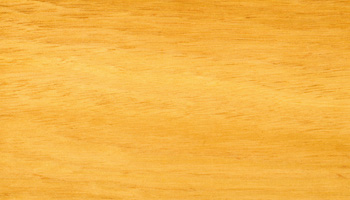
Taun | Pometia Pinnata
Taun is a moderately durable hardwood timber with a range of applications including general building framework, flooring and cladding, joinery and cabinetwork, as well as cooperage, outdoor furniture, boat building, plywood and veneers. Taun comprises several hardwood species occurring in various parts of South-East Asia and the Pacific. Taun lends itself to general building construction and decorative uses.
Other Names: Malugai (Philippines), Kasai, Sibu (Sarawak, Sabah), Truong (Vietnam), Aia Fai, Mala, Ula, Ako Dawa (Solomon Islands), Tava (Western Samoa), Ahabu, Matoa (Papua New Guinea), Malugay, Akwa, Pometia Tomentose, Pometia Tomentosa, Pometia spp.
Taun comprises several members of the Pometia species occurring in low-lying coastal and riverine areas of Sri Lanka and South-East Asia, Papua New Guinea, the Solomon Islands and Samoa. Although the species can attain heights of up to 25 metres, an irregular bole and elliptical cross-section results in relatively short log lengths.
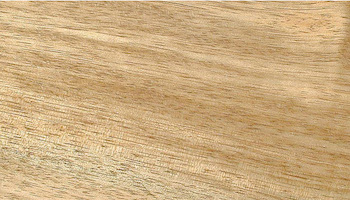
Taun heartwood varies in colour from pink to reddish-brown, darkening with age. Sapwood is a pale, pinkish buff, not always visually distinct from the true wood. The grain of Taun timber is straight, with occasional interlocking, and of moderately coarse texture.
Taun is a moderately durable hardwood, with an above ground life expectancy of between 15 and 40 years. Its in-ground life expectancy is considerably shorter, at between five and 15 years. Taun sapwood is susceptible to Lyctid borer attack and is very difficult to impregnate with preservative. Taun is not termite-resistant.
Uses of Taun in construction include general house framing, cladding, fascia boards, internal flooring, and plywood. Taun’s properties also lend themselves to decorative applications such as lining, paneling, joinery, cabinetwork, outdoor furniture, carving, turnery and veneers. It is also used for boat building and cooperage.
Teak | Tectona grandis
Teak is one of the world’s best-known hardwood timbers. Teak is famous for its marine applications, including boat building, and a wide variety of decorative uses. Other Names: Djati, Jati (Indonesia), Kyun (Myannmar), Sagwan (India), Teck, Mai Sak (Thailand), Giati (Vietnam), Teca (Brazil).
Teak’s heartwood is typically golden brown in colour, although grey and red tinges are not uncommon. The sapwood, a pale yellow colour, is clearly distinct. Grain is usually straight, but due to Teak’s high degree of ring porosity, longitudinal streaks and an uneven texture, ranging from coarse to smooth, are typical. The freshly cut wood can be variable in colour, with blotches and streaks, but prolonged exposure to light ameliorates the more extreme variations. Teak contains an oleoresin which gives the timber a greasy feel, and imparts a distinctive odour to freshly cut material.
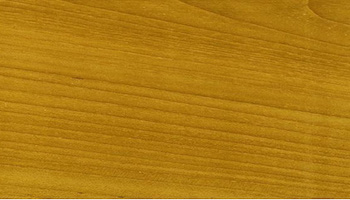
Teak is a firm timber, in general easily worked. However, the timber’s relatively high silica content causes severe blunting of cutting edges. For this reason, the use of tungsten-carbide blades is recommended. Teak holds nails and screws well, although pre-boring is recommended when nailing. Gluing sometimes presents difficulties because of the oily nature of the wood, and it is important to bond only freshly dressed surfaces. Teak will readily accept paints and stains. It also varnishes, polishes and waxes well. It is not suitable for steam bending. Sanding dust irritates the skin of some users.
Teak is well known for its above ground durability, with a life expectancy of greater than 40 years. In-ground life expectancy ranges from 15 to 25 years. Teak exhibits a good resistance to acids, and will not corrode metal fixings. Teak is termite-resistant, although untreated sapwood is susceptible to borer attack.
Teak is extensively used in boatbuilding for decking, rails, bulwarks, hatches, weather doors, and planking. It is also used for cooperage, pipes, and chemical vats. In general construction it is suitable for flooring, decking, framing, cladding, fascias and barge boards. Decorative uses of Teak include indoor and outdoor furniture, parquetry, turnery, carving, lining and paneling.
Teak occurs naturally in the monsoon forests of India, Myanmar, Thailand and Vietnam. Teak plantations have been established in Indonesia, Papua New Guinea, Africa, Solomon Islands, Fiji and the West Indies.
Turpentine | Syncarpia Glomulifera
Turpentine is an extremely hard and durable Australian native hardwood timber. It is suitable for a wide range of construction and engineering applications. Other Names: Luster, Red Luster, Syncarpia Laurifolia
The true wood of this species ranges in colour from deep red to red-brown. Sapwood is distinctively paler, often creamy. The texture of Turpentine timber is fine to medium but often wavy, with interlocked grain. It is relatively free of gum veins. Turpentine is extremely durable in above ground applications, where its life expectancy is in excess of 40 years. In-ground life expectancy ranges from 15 to 25 years. The timber of this species is termite-resistant, and untreated sapwood is immune to Lyctid borer attack.
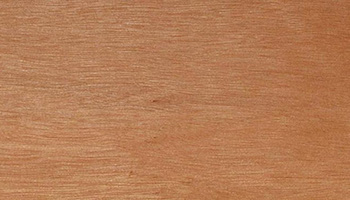
Victorian Ash | E. delegatensis & E. regnans
Victorian Ash is the trade name for two of Australia’s largest and most attractive hardwoods that can be used for timber framing, internal applications and furniture. Other Names: Alpine Ash, Tasmanian Oak, Mountain Ash, Gum-topped Stringybark, White-top, Blue-leaf. This Australian hardwood takes its name from the fact that it grows in the alpine areas of Victoria, Tasmania and New South Wales. It can refer to either Mountain Ash or Alpine Ash and is marketed under the trade names Tasmanian Oak or Victorian Ash, although it is important to note that the proportions of each species can vary considerably. Victorian Ash is mainly available in Victoria, Tasmania and NSW, with limited availability to other parts of Australia. Victorian Ash timber usually has a straight grain but may also produce fiddleback markings and have visible gum veins. It has a course texture. The heartwood ranges from pale pink to yellowish brown and a walnut colour can be achieved by steaming with ammonia. The heartwood is often indistinguishable in colour from the softwood. Care needs to be taken when drying Victorian Ash because of its proneness to collapse and internal checking, as well as surface checking on the tangential surface. There is minimal shrinkage after drying. To ensure good quality boards, logs are quarter-cut, which provides excellent dimensional stability. Reconditioning is standard practice. While Victorian Ash can be used for general construction, such as framing, its low to moderate durability means it is best suited for interior applications such as flooring, paneling, high-end joinery and furniture. Victorian Ash is also used to manufacture plywood and may also be used for boxes, crates and paper pulp. Victorian Ash is grown as a plantation timber due to its quick growth rate and resistance to insect attack.
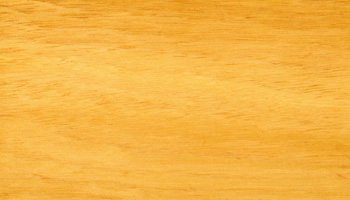
WA Sheoak | Allocosuarina fraseriana
WA Sheoak is a hardwood used for flooring, furniture, roofing shingles, turnery and decorative purposes. Other Names: Casuarina fraseriana. WA Sheoak is a hardwood that, as its name suggests, grows on the south coast of south-west Western Australia. It is used for flooring and paneling, roofing shingles, furniture, decorative woodwork and turnery, and before the invention of the aluminium cask it was used in the manufacture of beer barrels.
The heartwood of WA Sheoak is red-brown and the sapwood is pale yellow. The texture is moderately even and fine, and the grain is straight. The medullary rays are not as prominent as those of River Sheoak and Rose Sheoak. WA Sheoak is easy to work. It is susceptible to lyctid borer. The timber is available in limited quantities in Western Australia.
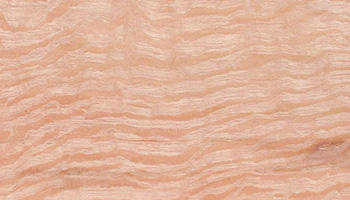
Western Australian Blackbutt | Calyptus patens
Western Australian Blackbutt is a large Australian hardwood from the forest areas of south west Western Australia. It’s used for general construction, flooring and paneling. Other Names: WA Blackbutt, Yarri, Swan River Blackbutt. It is generally in very limited supply, in part to it growing in reserves.
Also known as Yarri, it is lighter in appearance than Blackbutt Eucalyptus pilularis. The heartwood is a pale yellowish brown, while the sapwood is much paler in appearance. Western Australian Blackbutt has a medium to course texture and an interlocked grain, which can make this species harder to work. Apart from this it has good workability characteristics. Pinholes may also be present but can sanded or polished out during finishing.
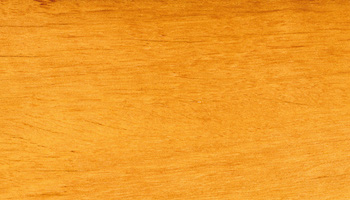
White Birch | Betula pubescens
White Birch is a medium-sized hardwood native to parts of Europe, northern Asia, the Arctic and North America. Other Names: Silver Birch, English Birch, Finnish Birch, Swedish Birch, European Birch, Betula verrucosa, Betula maximowicziana.
In Europe it is known as Betula pubescens, while in Japan it is known as Betula maximowicziana. The timber is pale in appearance with the heartwood ranging from a cream to pale brown, while the Japanese species tends to be more of a yellowish red colour. The sapwood is off-white and may not be well demarcated from the heartwood. The grain of White Birch can be straight or interlocked with a fine, uniform texture.
White Birch is easy to work and glues and finishes well. It is used mainly for the manufacture of plywood and as furniture. Other applications include shelving, cases, coffin boards, turnery, match splints and toys.
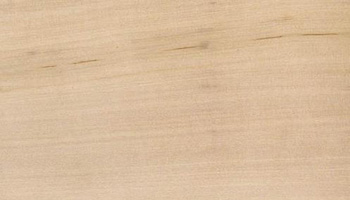
White Mahogany | Eucalyptus acmenoides
White Mahogany is a premium Australian hardwood used for structural, interior and exterior applications. Other Names: Yellow Stringybark (Qld), White Stringybark, Narrow-leaved White Mahogany, Eucalyptus Umbra, Eucalyptus tenuipes.
White Mahogany is one of Australia’s premium native hardwoods with a high degree of natural durability and strength, making it an ideal timber for a variety of structural, exterior and interior applications. The heartwood is light brown to yellow brown in colour. The sapwood is usually creamy brown and is uniformly lighter than the heartwood. White Mahogany wood has a slightly greasy feel, a characteristic that aids machining and boring. It is termite resistant and the sapwood can be easily treated with preservatives.
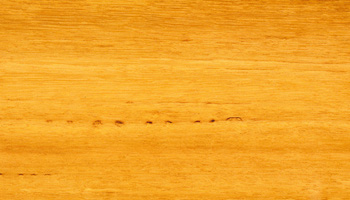
The heartwood is too dense to accept readily available commercial preservation processes. The wood is used as a sawn timber in engineering applications such as wharf and bridge construction, railway sleepers, cross-arms and mining timbers. It is suitable for a range of building applications, such as posts and poles, framing, flooring, lining, decking and cladding. White Mahogany is also used in the manufacture of veneer and plywood. Other applications include boatbuilding, coach and carriage building, and agricultural machinery.
White Stringybark | Eucalyptus eugenioides
White Stringybark is an Australian native hardwood species. Its timber products are suitable for a wide range of applications, from general building to wharf and bridge construction, boat building, outdoor furniture and turnery. Other Names: Small-leaved Stringybark, Thin-leaved Stringybark, Wilkinson’s Stringybark, Pink Blackbutt.
The heartwood of this species is light brown to pale pink in colour. Sapwood is paler but not always clearly distinguishable from the true wood. Grain is generally uniform and medium-textured, but occasional interlocking can produce attractive figure in some samples.
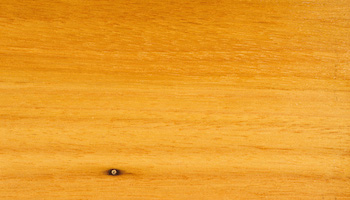
It has an above ground life expectancy of up to 40 years, and an in ground life expectancy of between 15 and 25 years. It is not termite-resistant. Sapwood (but not heartwood) is readily impregnated with preservatives. White Stringybark is not susceptible to Lyctid borer (powder post beetle) attack.
Sawn timber is used in wharf and bridge construction; as railway sleepers, cross-arms, poles, piles and mining timbers; and for general house framing and cladding, flooring and decking, linings and joinery. White Stringybark is also used for fencing, landscaping and retaining walls. Other uses include outdoor furniture and turnery; boat, coach and carriage building; and structural plywood.
Woollybutt | Eucalyptus longifolia
Woollybutt is a native Australian hardwood timber species renowned for its durability in a wide range of engineering and construction applications. The true wood of this species is a medium to dark red in colour, with distinctively paler sapwood. Texture is medium to fine. Grain is typically straight but occasionally interlocked. Woollybutt timber surfaces often exhibit a waxy sheen when dressed.
Because of its extreme durability, Woollybutt finds a wide variety of applications in engineering and general building construction. Commonly used for posts, utility poles, sleepers, wood blocks, stumps, printing blocks and fence posts, Woollybutt is also suitable for a variety of marine applications, including bridge and wharf construction, boatbuilding and decking. Being durable in contact with the ground and resistant to heavy traffic – Woollybutt is a very hard timber – it is also used for paving blocks.
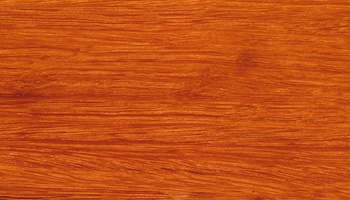
Care is needed in drying Woollybutt in order to minimise surface checking and splitting. A slight collapse of the timber is known to occur during seasoning. The heartwood of this species has been deemed termite-resistant for inside, above ground applications. If untreated, woollybutt sapwood is susceptible to Lyctid (powder post beetle) borer attack.
Yellow Gum | Eucalyptus leucoxylon
Yellow Gum is a medium sized native Australian hardwood valued for its toughness and durability. It is the perfect choice for heavy construction. Other Names: Blue Gum, White Ironbark, South Australian Blue Gum, Large Fruited Blue Gum, Water Gum.
Yellow Gum timbers are prized for their hardness, durability and impressive structural properties. Its vast range and availability make it an appealing choice for those requiring timber for heavy construction purposes. Common uses include heavy construction as posts, wharfage, bridgework, sleepers and fencing.
The timber is also termite resistant, although the sapwood is prone to lyctid borer. Workability is sacrificed for durability, as the timber is extremely dense and heavy. For this reason, it is not well suited to cabinetry.
Yellow Gum timber ranges in colour from yellow to pale brown. Grain is interlocked with a moderately coarse texture and often produces an attractive fiddleback figure.
Yellow Gum is often used in gardening as a screen, for windbreaks, and for displays of long-lasting, attractive flowers. It can be used to produce fine honey.
Yellow Stringybark | Eucalyptus muelleriana
Yellow Stringybark is a native Australian hardwood timber widely used in flooring and furniture making. Other Names: Yellow Stringy. The tree features yellow to yellowish-brown heartwood with distinctively paler sapwood. Its grain is medium to fine, mainly straight but sometimes interlocked. Gum veins and bug holes are common.
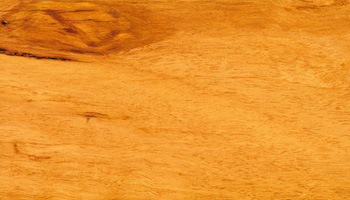
Yellow Walnut | Beilschmiedia bancroftii
Yellow Walnut is an Australian native hardwood timber species. Very limited quantities are still used for a variety of decorative and construction purposes. Other Names: Canary Ash, Yellow Nut. The heartwood of this species is pale to bright lemon yellow in colour. Sapwood is typically paler but often difficult to distinguish from the true wood, since it can occupy up to 50% of the stem radius. Grain is straight and moderately coarse, with little or no figure – although back-sawn surfaces may occasionally show figure due to earlywood/latewood ring formation.
Common applications of Yellow Walnut range from light construction (as sawn timber in general house framing, flooring, linings and mouldings) to a variety of decorative uses (plywood, furniture, joinery, turnery, carving and paneling).
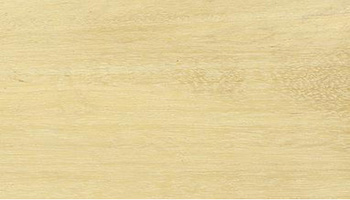
Abura | Mitragyna ciliata
Abura has a uniform yellow to pinkish-brown color, with sapwood indistinct from heartwood. It has a fine texture and a straight or slightly interlocked grain. It is non-durable and has poor resistance to decay or insect attack but has a good acid resistance. It takes glue and finishes well. It is a general-purpose lumber used for furniture, plywood, flooring, etc. Other Names: Abura, Bahia, Mitragyna ciliata. Distribution: West Africa, from Sierra Leone/Ivory Coast to Congo/Angolia.
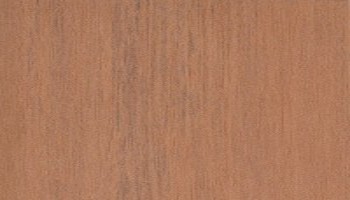
Afrormosia | Pericopsis elata
It’s heartwood is typically a yellowish brown, occasion will have an either reddish or olive hue. Color tends to darken with age. Grain is usually straight, though it can also be interlocked. With a fine uniform texture and good natural luster. This specie is rated as very durable regarding decay resistance, and is also resistant to termites and other insects. In nearly all regards, Afrormosia is easy to work with both hand and machine tools, though surfacing boards with interlocking grain may cause tearout. Other downsides include a slight blunting effect on cutting edges, and the development of dark stains if left in contact with iron in damp conditions. Afrormosia turns, glues, stains, and finishes well. Other names: Afrormosia, Afromosia, African Teak, Pericopsis elata. Distribution: West Africa. Trade of this species is currently tightly controlled. It’s usually available as lumber in good sizes. Prices are medium to high for an imported African hardwood. Along with Iroko, Afrormosia is sometimes referred to as “African Teak,” though it is not closely related to genuine Teak (Tectona grandis). Afrormosia does look somewhat similar to Teak, has similar working and mechanical properties, and is extremely durable in outdoor applications; for these reasons, it’s used with a fair degree of success as a substitute for Teak. Common Uses: Boatbuilding, veneer, flooring, and furniture.

Afzelia | Afzelia spp.
It’s heartwood is reddish brown. Well defined sapwood is a pale yellowish white. Color tends to darken with age. It is rated as very durable and is moderately resistant to termites, and variously resistant/susceptible to other insect attacks. Generally considered somewhat difficult to work on account of its interlocked grain, causing tearout during machining operations. Afzelia also has a pronounced dulling effect on cutters. Gluing and finishing can be variable, and some species contain water-soluble yellow deposits in the pores which can pose challenges in staining or finishing with water-based products. Other Names: Afzelia, Doussie, Afzelia spp. Distribution: Africa and southeast Asia
Prices for clear lumber tend to be moderate for an imported hardwood, though Afzelia is more often sold in smaller pieces of figured wood and burls, which are much more expensive.
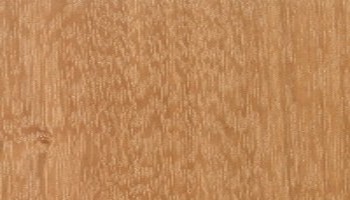
Common Uses: Furniture, cabinetry, veneer, flooring, docks, boatbuilding, exterior millwork and construction, turned objects, inlays, and other small specialty wood items. Sometimes sold under the name Doussie, Afzelia has been compared to both Mahogany and Teak for its favorable appearance, durability, and stability. For smaller projects, highly figured pieces of Afzelia are popular for a stunning, almost three-dimensional grain effect.
Macacauba | Platymiscium spp.
It’s heartwood color can be highly variable, ranging from a bright red to a darker reddish or purplish brown, frequently with darker stripes. Clearly demarcated sapwood is yellow to white. Grain is straight to interlocked, with a medium to fine texture. Other Names: Macacauba, Macawood, Hormigo, Orange Agate, Platymiscium spp. (P. dimorphandrum, P. pinnatum, P. trinitatis, P. ulei). Distribution: Central and South America. It is rated as durable to very durable regarding decay resistance, with good resistance to insect attacks as well. Overall, good working characteristics for both hand and machine tools, though areas of interlocked grain should be approached with care to avoid tearout. It is able to take a very high natural polish. Common Uses: Furniture, cabinetry, veneer, musical instruments, turned objects, and small specialty wood items.
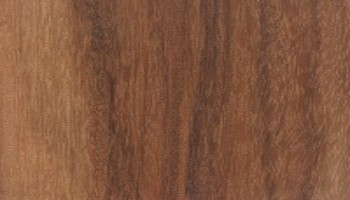
Madrone | Arbutus menziesii
Color tends to be a cream or pinkish brown color, but can also have dark red patches. Madrone is known for its burl veneer, which has many closely-packed clusters of knots and swirled grain. Grain tends to be straight, with a very fine and even texture. Madrone is rated as non-durable to perishable with regard to decay resistance. Madrone is easy to work with machine and hand tools, and compares similarly to Hard Maple in working characteristics. The wood can be difficult to dry, and has a tendency to warp or twist. Madrone is an excellent turning wood, and also takes stains and finishes well. Common Uses: Veneer, turned objects, and other small specialty objects.
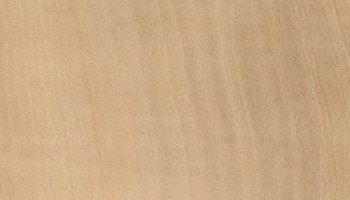
Madrone burl is highly prized as a decorative veneer, while Madrone lumber is a very dense and finely-grained hardwood that’s similar in appearance to fruitwoods. The wood burns long and hot, and as a result it is also used for firewood and charcoal. Other Names: Madrone, Pacific Madrone, Arbutus menziesii. Distribution: Western coast of North America
European Alder | Alnus glutinosa
European Alder tends to be a light tan to reddish brown; color darkens and reddens with age. There is no visible distinction between heartwood and sapwood. The overall grain pattern and appearance is similar to Birch (Betula genus)—though redder than Birch—and both genera are derived from the same family, Betulaceae. Other Names: European Alder, Black Alder, Common Alder, Alnus glutinosa. Distribution: Western Europe.
European Alder has closed pores, and a fine, even grain. The grain is usually straight, but can also be wild or irregular depending on the growth form of each individual tree. It is rated non-durable to perishable regarding decay resistance, and freshly cut logs should be quickly converted into lumber and dried to prevent staining or decay in the wood.
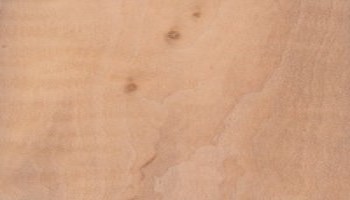
European Alder is very easy to work with both hand and machine tools; it sands especially easy. The wood is rather soft, however, and care must be taken to avoid denting it in some applications. European Alder has excellent gluing, staining, and finishing properties; it also turns well and behaves similar to Black Cherry. Common Uses: Veneer, plywood, charcoal for gunpowder, clogs, piles/supports, and turned items.
Nepalese Alder | Alnus nepalensis
Nepalese Alder tends to be a light tan to reddish brown; color darkens and reddens with age. There is no visible distinction between heartwood and sapwood. The overall grain pattern and appearance is similar to Birch (Betula genus)—though redder than Birch—and both genera are derived from the same family, Betulaceae. Nepalese Alder has closed pores, and a fine, even, and straight grain. It is rated non-durable to perishable regarding decay resistance, and freshly cut logs should be quickly converted into lumber and dried to prevent staining or decay in the wood. Other Names: Nepalese Alder, Utis, Alnus nepalensis. Distribution: Southeast Asia.
Nepalese Alder is very easy to work with both hand and machine tools; it sands especially easy. The wood is rather soft, however, and care must be taken to avoid denting it in some applications. Nepalese Alder has excellent gluing, staining, and finishing properties; it also turns well and behaves similar to Black Cherry. Common Uses: Interior utility wood, plywood, boxes, crates, and turned items.
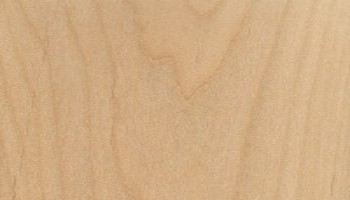
Nepalese Alder is a very fast growing tree that is native to Southeast Asia, but has been cultivated for plantation growth in a variety of tropical locations, such as Hawaii. The wood tends to be lighter and weaker than the domestic Red Alder found in the United States.
Red Alder | Alnus rubra
Red Alder tends to be a light tan to reddish brown; color darkens and reddens with age. There is no visible distinction between heartwood and sapwood. The overall grain pattern and appearance is similar to Birch (Betula genus)—though redder than Birch—and both genera are derived from the same family, Betulaceae. Other Names: Red Alder, Western Red Alder, Alnus rubra. Distribution: Coastal western North America.
Grain is generally straight, with a moderately fine, uniform texture. Red Alder is rated non-durable to perishable regarding decay resistance, and freshly cut logs should be quickly converted into lumber and dried to prevent staining or decay in the wood. It is very easy to work with both hand and machine tools; it sands especially easy. The wood is rather soft, however, and care must be taken to avoid denting it in some applications. Red Alder has excellent gluing, staining, and finishing properties; it also turns well and behaves similar to Black Cherry.
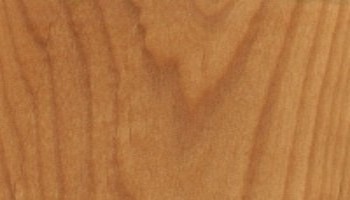
Red Alder is usually sold in two different grades: knotty, and clear. Knotty Red Alder is likely to be very inexpensive, on par with other domestic utility woods such as Poplar or Aspen. Clear Red Alder is likely to cost a bit more, closer to other cabinet hardwoods such as Birch or Maple.
Common Uses: Veneer, plywood, furniture, cabinetry, millwork, pallets, musical instruments (electric guitar bodies), and chip/pulp wood. Red Alder is the most abundant hardwood in the Pacific Northwest region of the United States, and is a commercially important lumber.
Cucumbertree | Magnolia acuminata
It has very wide sapwood which is creamy white to grayish in color. Comparatively narrow heartwood color ranges from a medium to dark brown, sometimes with green, purple or black streaks. Grain is straight, with a fine, uniform texture. Moderate natural luster. It is rated as non-durable to perishable regarding decay resistance, and also susceptible to insect attack. It is generally easy to work with both hand and machine tools. Other Names: Cucumbertree, Cucumber Magnolia, Magnolia acuminata. Distribution: Eastern United States. Cucumbertree is frequently mixed with Yellow Poplar (also in the Magnoliaceae family) and sold interchangeably as Yellow Poplar. Prices should be low for a domestic hardwood. Common Uses: Veneer, plywood, interior trim, upholstered furniture frames, and general utility wood. Cucumbertree is actually related to other species of Magnolia, and the woods within the genus can’t be reliably separated visually. Additionally, Magnolia species are very difficult to tell apart from Yellow Poplar (Liriodendron tulipifera), and typically microscopic examination is necessary to distinguish the two genera.
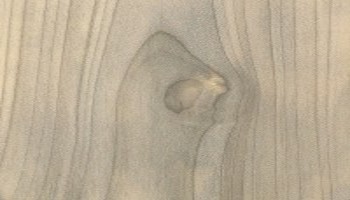
Southern Magnolia | Magnolia grandiflora
It’s very wide sapwood is a creamy white to grayish in color. Comparatively narrow heartwood color ranges from a medium to dark brown, sometimes with green, purple or black streaks. Other Names: Southern Magnolia, Magnolia grandiflora. Distribution: Southeastern United States. Grain is straight, with a medium to fine uniform texture. Moderate natural luster. It is rated as non-durable to perishable regarding decay resistance, and also susceptible to insect attack. It is generally easy to work with both hand and machine tools. Common Uses: Veneer, plywood, interior trim, upholstered furniture frames, and general utility wood. Southern Magnolia is the hardest and heaviest of the three primary magnolia species that are commercially harvested in the United States.
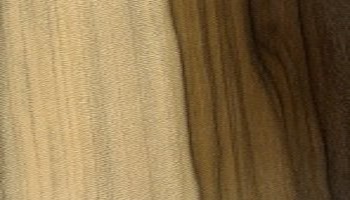
Sweetbay | Magnolia virginiana
It has a very wide sapwood which is a creamy white to grayish in color. It’s comparatively narrow heartwood color ranges from a medium to dark brown, sometimes with green, purple or black streaks. Grain is straight, with a medium uniform texture. Other Names: Sweetbay, Swamp Magnolia, Magnolia virginiana. Distribution: Southeastern United States. It is rated as non-durable to perishable regarding decay resistance, and also susceptible to insect attack. It is generally easy to work with both hand and machine tools. Common Uses: Veneer, plywood, interior trim, upholstered furniture frames, and general utility wood.
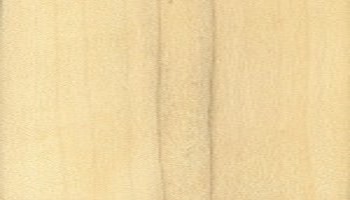
Blue Mahoe | Talipariti elatum
It’s heartwood can be highly varied in color, usually grayish or olive brown colored, sometimes with streaks of green, blue, or purple. The narrow sapwood is pale yellow and is clearly demarcated from heartwood. Blue Mahoe is one of very few woods with an overall gray heartwood appearance (in its fresh and unweathered state), and perhaps the only commercially available wood that can exhibit a bluish hue. Distribution: Native to Cuba and Jamaica; widely planted throughout the Caribbean.
Grain is usually straight or shallowly interlocked, with a uniform fine to medium texture and a low natural luster. It is moderately durable to very durable regarding decay resistance. It is also reported to be resistant to insect attacks.
It is overall easy to work with both hand and machine tools.
Past over-exploitation has led to very scarce availability of this lumber. Currently, Blue Mahoe is very seldom exported out of its natural range, and wood is typically only available in very small pieces. Expect prices to be high for an imported hardwood. Common Uses: Cabinetry, furniture, turned objects, carvings, musical instruments, inlay, marquetry, and interior trim.
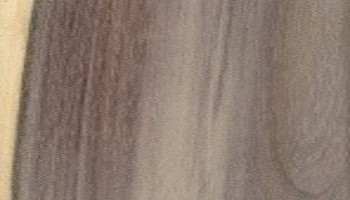
Blue Mahoe is the national tree of Jamaica, where it’s prized as a quality furniture wood. Unfortunately, this wood is now in very low supply, and is only infrequently seen (in very small sizes and quantities). It’s perhaps one of the only commercial hardwoods in the world that comes close to possessing a blue heartwood color.
Philippine Mahogany
The wood name Philippine Mahogany is a loose term that applies to a number of wood species coming from southeast Asia. Another common name for this wood is Meranti: while yet another name that is commonly used when referring to plywood made of this type of wood is Lauan. (And even though it’s called Philippine Mahogany, it bears no relation to what is considered to be “true” mahogany in the Swietenia and Khaya genera.)
Scientifically, the name Philippine Mahogany has been used to encompass most commercial lumber found in the Shorea genus, where it is very commonly used in it’s native southeast Asia. There is an abundance of variety between the difference species: each with different working properties, appearances, and mechanical strength values.
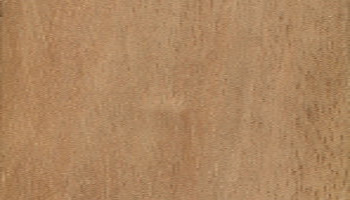
The five main groupings for Philippine Mahogany (Meranti/Lauan) are: Light Red Meranti, Dark Red Meranti, White Meranti, Yellow Meranti, and Balau.
African Mahogany | Khaya senegalensis
Other Names: African Mahogany, Khaya spp. (Khaya anthotheca, K. grandifoliola, K. ivorensis, K. senegalensis). Distribution: West tropical Africa.
It’s heartwood color is variable, ranging from a very pale pink to a deeper reddish brown, sometimes with streaks of medium to dark reddish brown. Color tends to darken with age. Quartersawn surfaces can also exhibit a ribbon-stripe appearance. Grain is straight to interlocked, with a medium to coarse texture. Good natural luster with a light-reflecting optical phenomenon known as chatoyancy.
Easy to work, glue, and finish. Tearout can sometimes be a problem if the grain is interlocked. Readily available in a variety of lumber sizes, as well as plywood and veneer. Prices are low to moderate for an imported hardwood. Common Uses: Veneer, plywood, turned items, furniture, boat-building, and interior trim.
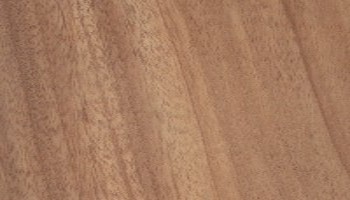
Cuban Mahogany | Swietenia mahogani
Heartwood color can vary a fair amount with Cuban Mahogany, from a pale pinkish brown, to a darker reddish brown. Typically, the denser the wood, the darker the color. Color tends to darken with age. Other Names: Cuban Mahogany, West Indies Mahogany, Swietenia mahogani. Distribution: Southern Florida and the Caribbean.
It has medium to large sized pores, and a medium texture. Grain can be straight, interlocked, irregular or wavy. Mahogany also exhibits an optical phenomenon known as chatoyancy. It is considered durable or very durable in regards to decay resistance, though it has been reported as being susceptible to insect attack.
It is typically very easy to work with tools: machines well (with exception to sections with figured grain, which can tearout or chip during machining). Slight dulling of cutters can occur. Sands very easily. Turns, glues, stains, and finishes well. Common Uses: Furniture, cabinetry, turned objects, veneers, musical instruments, boat-building, and carving.
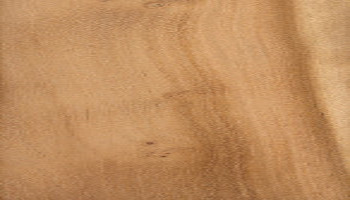
In 1946, Cuban banned all exporting of the wood due to over-harvesting and high demand; it has also been in scarce supply from other sources in the Caribbean as well. Today, the lumber has become so obscure that the term “Genuine Mahogany” now applies almost exclusively to its close substitute, Honduran Mahogany (Swietenia macrophylla), rather than the Cuban wood that for centuries has simply been referred to as “Mahogany.”
Cuban Mahogany’s easy workability, combined with its beauty and phenomenal stability have made this lumber an enduring favorite.
Honduran Mahogany | Swietenia macrophylla
Other Names: Honduran Mahogany, Honduras Mahogany, American Mahogany, Genuine Mahogany, Big-Leaf Mahogany, Brazilian Mahogany, Swietenia macrophylla. Distribution: From Southern Mexico to central South America; also commonly grown on plantations.
Heartwood color can vary a fair amount with Honduran Mahogany, from a pale pinkish brown, to a darker reddish brown. Color tends to darken with age. It has medium to large sized pores, and a medium texture. Grain can be straight, interlocked, irregular or wavy. Mahogany also exhibits an optical phenomenon known as chatoyancy.
It is considered durable or very durable in regards to decay resistance, though it has been reported as being susceptible to insect attack.
It is typically very easy to work with tools: machines well (with exception to sections with figured grain, which can tearout or chip during machining). Slight dulling of cutters can occur. Sands very easily. Turns, glues, stains, and finishes well. Common Uses: Furniture, cabinetry, turned objects, veneers, musical instruments, boat-building, and carving.
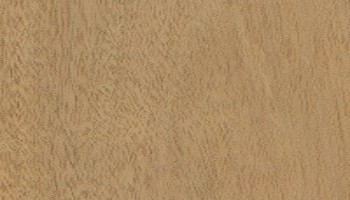
Honduran Mahogany goes by many names, yet perhaps its most accurate and telling name is Genuine Mahogany. Not to be confused with cheaper imitations, such as Philippine Mahogany, Swietenia macrophylla is what most consider to be the real and true species when referring to “Mahogany.”
An incredibly important commercial timber in Latin America, Honduran Mahogany is now grown extensively on plantations.
Santos Mahogany | Myroxylon balsamum
There is a fair degree of color variation between boards of Santos Mahogany, ranging from a lighter golden brown to a darker purplish red or burgundy. The color tends to turn more red/purple with age. Quartersawn sections can show a striped or ribbon pattern. Grain is usually interlocked, with a medium to fine texture. Good natural luster. Distribution: Southern Mexico and Central and South America
It is rated as very durable in regards to decay resistance, with mixed reports on susceptibility to insect attack. Santos Mahogany has a noticeable blunting effect on cutting edges. Working characteristics are rated as fair to poor, on account of both its density and its interlocked grain. Staining or gluing can sometimes be problematic, though the wood finishes well. Common Uses: Flooring, furniture, interior trim, and heavy construction.
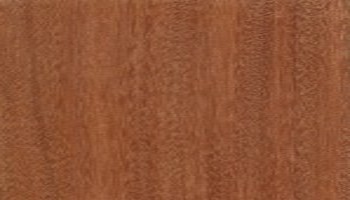
Despite its name, Santos Mahogany is not really related to true Mahogany (Swietenia genus), nor is it even in the Meliaceae family, as is the case with African Mahogany (Khaya genus) and Spanish Cedar (Cedrela odorata). Santos Mahogany can have a Mahogany-like appearance, though it is typically much denser, harder, and stronger than true Mahogany—and also much more difficult to work. Santos Mahogany trees, sometimes called Balsamo, are used in the production of the substance called Balsam of Peru, used as a fragrance in perfumes.
Ovangkol | Guibourtia ehie
It comes in varying shades of yellowish to reddish brown with darker brown, gray, or black stripes. Moderately wide sapwood is a pale yellow, clearly demarcated from heartwood. Sometimes seen with a curly or mottled grain pattern. Grain is straight to slightly interlocked. It is rated as moderately durable, with good resistance to insect attack. Other Names: Amazique, Amazoue, Mozambique, Ovangkol, Shedua, Guibourtia ehie. Distribution: Tropical west Africa.
Overall a fairly easy wood to work, though Ovangkol contains silica and can therefore dull cutters prematurely. Also, if the grain is interlocked, or if there is other figure present in the wood, planing and other machining operations may be troublesome and cause tearout. Common Uses: Veneer, furniture, cabinetry, turned objects, musical instruments, and flooring.
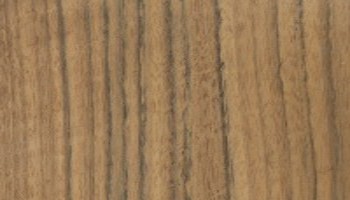
This wood wins the award for the most commonly-used aliases, with no single name being predominant. When used in guitars, it’s most commonly referred to as Ovangkol. Most other woodworkers favor either Shedua or Amazique, while veneer is sometimes sold under the name Mozambique. All refer to the same wood specie: Guibourtia ehie.
Amboyna
This is the very same wood as Narra (Pterocarpus indicus). Narra is commonly called Amboyna when it is found in burl form.
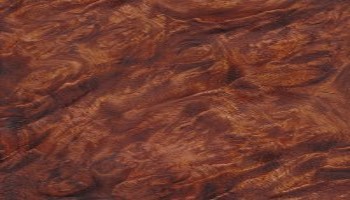
Amendoim | Pterogyne nitens
It’s heartwood is a light to medium reddish brown, sometimes with darker stripes. Color tends to darken with age. Pale yellowish brown sapwood isn’t always clearly distinguished from hearwtwood. Overall appearance is very similar to Mahogany. Grain is straight to interlocked, with a medium texture and a high natural luster. It is rated as moderately durable regarding decay resistance. Distribution: Scattered throughout southern South America
It is overall fairly easy to work with both hand and machine tools, though interlocked grain can cause tearout, especially during laning and other machining operations. Amendoim has a blunting effect on cutters due to a naturally high silica content. Turns, glues, and finishes well. Responds well to steam-bending.
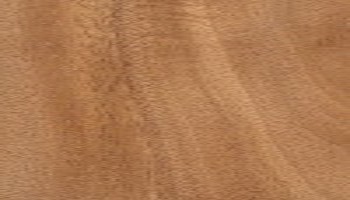
Andiroba | Carapa spp.
It’s heartwood tends to be a pale reddish brown, darkening with age to a medium to dark brown. Sapwood is a lighter pink or pale brown, not always demarcated from heartwood. Quartersawn surfaces exhibit a ribbon-like appearance similar to Sapele. Andiroba has a uniform, fine to medium texture with a medium natural luster and a straight grain, though the grain is sometimes wavy or interlocked. Andiroba is considered moderately durable to very durable regarding decay resistance, though it can be susceptible to insect attack. Weathering characteristics are similar to Honduran Mahogany. Other names: Andiroba, Crabwood, Carapa spp. (Carapa guianensis, etc.). Distribution: Central and South America. Overall Andiroba is easy to work with both hand and machine tools. Sometimes pieces with interlocked grain will experience tearout during surfacing operations. Andiroba also has a moderate blunting effect on tool cutters. Andiroba has an increased risk of warping and other drying defects. It glues, finishes, and turns well.
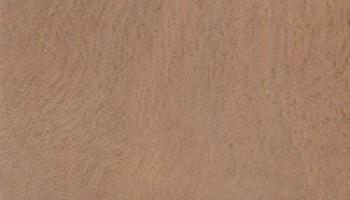
Seldom available in the United States, Andiroba makes an economical Mahogany substitute where it is available. Andiroba is used in both lumber and veneer form. Common Uses: Veneer, plywood, cabinetry, furniture, flooring, interior trim, and turned objects. Frequently touted as a substitute for Mahogany, Andiroba tends to be a bit blander and less stable than Mahogany, (though once the initial drying process is complete, Andiroba remains fairly stable).
Marblewood | Zygia racemosum
Other Names: Marblewood, Angelim Rajado, Zygia racemosum (syn. Marmaroxylon racemosum). Distribution: Northeastern South America.
It’s heartwood is a yellow to golden brown, with irregular brown, purple, or black streaks. Sapwood is paler than heartwood, and is a solid yellowish color lacking contrasting streaks. Grain tends to be straight or slightly interlocked; texture is medium with open pores. It is rated as durable to very durable regarding decay resistance, with moderate resistance to insect attack. It tends to be difficult to work on account of its high density. Marblewood can have a moderate to severe blunting effect on tool cutters. Glues, turns, and finishes well—though there is a high risk of checking and resin exudation during drying. Marblewood prices tend to be in the mid to upper range for an imported exotic hardwood. Common Uses: Flooring, sliced veneer, turned objects, cabinetry, and fine furniture. The high contrast between the golden body and the much darker streaks give it an appearance somewhat similar to natural marble, hence the common name of “Marblewood” for this species. Marblewood’s overall appearance is very similar to Zebrawood, though Marblewood tends to have a slightly finer texture.
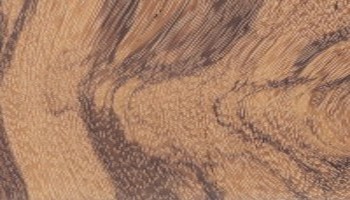
Anigre | Pouteria spp.
It’s heartwood is a light yellowish-brown, sometimes with a pinkish hue. Color tends to darken to a more golden brown with age. Pale sapwood is not well defined. Figured grain is occasionally present, such as curly or mottled grain. Other Names: Anigre, Anegre, Aniegre, Aningeria, (and variant spellings), Pouteria spp. (syn. Aningeria spp.). Distribution: Africa (most common in tropical areas of east Africa). Grain is straight to interlocked, with a medium uniform texture and a good natural luster. It is rated as non-durable to perishable. Not resistant to insect attack. Sapwood susceptible to blue fungal staining during initial drying. Common Uses: Veneer, plywood and interior furniture; in board form it’s used for boatbuilding, general carpentry, and other light construction uses.
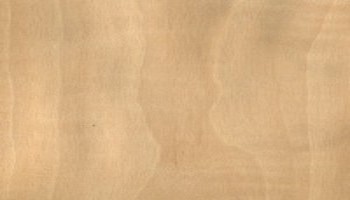
Anjan| Hardwickia binata
It’s heartwood dark reddish brown to nearly black. Sapwood thin, whitish in color. Interlocked grain. Close grain. It is very durable. It has high cutting resistance.
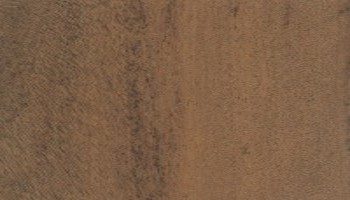
Apple | Malus domestica
It’s heartwood can vary from a light reddish or grayish brown to a deeper red/brown. The grain of Apple is sometimes seen with streaks of darker and lighter bands of color, similar to Olive. Sapwood is a pale cream color. Grain is straight (though on some sections of the tree it can also be wild). With a very fine, uniform texture, closely resembling Cherry. Other Names: Apple, Crab Apple, Wild Apple, Malus spp. (Malus domestica, Malus sieversii, Malus sylvestris, etc.). Distribution: Found throughout most temperate climates. Apple is rated as non-durable for heartwood decay. It can be somewhat difficult to work due to its high density, and can burn easily when being machined. Apple glues, stains, finishes, and turns well. Apple is seldom available in lumber form, and is usually seen only in very small sizes when available. Likely to be rather expensive, and is usually meant for only small projects and specialized applications. Common Uses: Fine furniture, tool handles, carving, mallet heads, turned items, and other small specialty wood objects. Apple has a high shrinkage rate, and experiences a large amount of seasonal movement in service. Its appearance and texture closely resemble Cherry, another fruit tree. Yet Apple is significantly heavier and harder than Cherry, and is excellent for turning.

Araracanga | Aspidosperma megalocarpon
It’s heartwood ranges from golden yellow to reddish brown, sometimes with violet/pinkish streaks. Yellowish sapwood not always clearly demarcated from heartwood. Color tends to darken with age. Grain is straight with a uniform medium texture. Durability can vary based on growing location: rated anywhere from moderately durable to very durable regarding decay resistance, though susceptible to insect attack. Other Names: Araracanga, Volador, Aspidosperma megalocarpon. Distribution: Mexico, Central America, and northern South America. Overall easy to work, producing good results, though Araracanga has an above average blunting effect on cutters. Glues, turns, and finishes well. Common Uses: Furniture, general construction (within its natural range), flooring, boatbuilding, and turned objects. Araracanga, sometimes called Volador, is a close relative of more popular Peroba Rosa. Araracanga is slightly heavier, stronger, and of a coarser texture than Peroba Rosa.
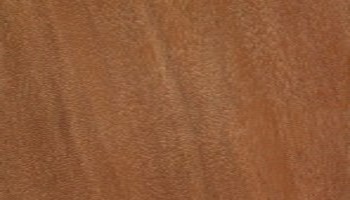
Chakte Viga | Caesalpinia platyloba
It’s heartwood is bright orange to golden brown. Sapwood pale white to yellow. Grain is usually straight, though sometimes interlocked. Has a fine, even texture with a good natural luster. Chakte Viga has been used as a fence-post material, with reports stating that the wood lasts up to 100 years in the ground. Other Names: Chakte Viga, Paela, Aripin, Caesalpinia platyloba. Distribution: Tropical areas of Mexico and Central America. Despite its high density, Chakte Viga generally responds well to most machining operations, though interlocked grain can result in tearout. Turns, glues, and finishes well. Common Uses: Inlays, furniture, flooring, and turned objects. Perhaps the closest relative to the more-famous Brazilwood (used for violin bows), Chakte Viga shares many of the same excellent acoustic properties. With great color, a smooth texture, and a unique iridescent quality that seems to shimmer under the proper wood finish, Chakte Viga has an almost subliminal cachet.
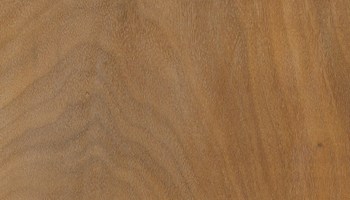
Makore | Tieghemella heckelii
It is pink or reddish brown, commonly with a mottled or wavy grain pattern. Figured grain patterns are commonly seen in Makore, and include: mottled, curly, wavy, and moire. Makore has a fine texture with closed pores. It also tends to have a natural luster and shine from its high silica content. The grain can be straight, interlocked, or wavy. Other Names: Makore, Tieghemella heckelii, Tieghemella africana. Distribution: Western and Middle Africa (from Sierra Leone to Gabon). Heartwood is very durable, and is also resistant to insect attack. Generally easy to work, though sections with interlocked grain can cause tearout during planing or other machining operations. Makore will react when put into direct contact with iron, becoming discolored and stained. Makore also has a pronounced blunting effect on cutters due to its high silica content. Besides this dulling effect, Makore turns well, and is easy to glue and finish. It should be moderately priced for an import. Likely to be on par with other common African hardwoods such as Padauk or African Mahogany. Boards with figured grain patterns are likely to be much more expensive. Makore, much like Sapele, is frequently imported from Africa in both board and veneer forms, and is available in a wide variety of figured grain patterns. Common Uses: Veneer, plywood, furniture, cabinetry, flooring, boatbuilding, musical instruments, turned objects, and other small wooden specialty items.
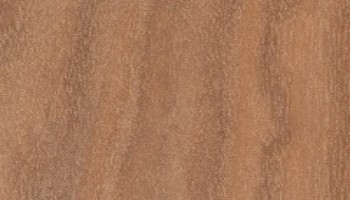
Mango | Mangifera indica
Because of the spalting that is commonly present, the wood can be a kaleidoscope of colors. Under normal circumstances, heartwood is a golden brown, while other colors such as yellow and streaks of pink and/or black can also occur. Paler sapwood is not always clearly defined. Curly or mottled grain patterns are also common. Grain can be straight or interlocked with a medium to coarse texture and good natural luster. Mango is rated anywhere from moderately durable to perishable. However, Mango is also susceptible to both fungal and insect attack. If interlocked or wild grain is present, tearout is common when machining. Reaction wood may also be present, which can shift as it is being sawed, potentially causing binding on the blade. Other Names: Mango, Hawaiian Mango, Mangifera indica. Distribution: Tropical Asia and Oceania. Common Uses: Furniture, ukuleles, veneer, plywood, turned objects, and flooring. Known much more widely for its fruit, Mango trees also yield beautiful and valuable lumber. The wood is considered very eco-friendly, as some Mango plantations harvest the trees for lumber after they have completed their useful fruit-bearing lifespan.

Mansonia | Mansonia altissima
It’s heartwood tends to be a yellowish or grayish brown, with overall mostly bland figuring. Color tends to lighten and fade with exposure to light. Sapwood is yellow to nearly white, about 1 to 2 inches wide, and is clearly demarcated from the heartwood. Grain is generally straight, though occasionally interlocked. Texture is fine to medium and uniform, with slight natural luster. Mansonia is very durable in regards to decay resistance, and is also resistant to termite and insect attack. Mansonia has good outdoor weathering properties. With the exception of the sawdust’s deleterious effects on health, Mansonia is easy to work with both hand and machine tools. It glues, turns, and finishes well, and also has good steam bending properties. Distribution: West tropical Africa. Common Uses: Veneer, cabinetry, furniture, boatbuilding, and turned objects.
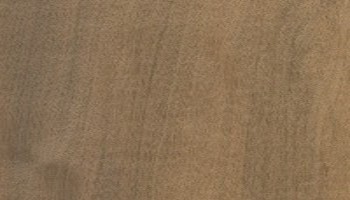
Manzanita | Arctostaphylos pungens
It’s heartwood is brownish red, sometimes with a bright orange hue. Sapwood is a pale off-white to light brown; clearly distinguished from heartwood, but not sharply demarcated. Burls and wild or swirled grain is common. Manzanita has a fine, uniform texture with a good natural luster. Distribution: Shrubland regions of western North America. Manzanita can be difficult to machine because the tree (usually a shrub) tends to have so many defects and irregular grain. Small pieces with straight, clear grain are relatively easy to work when compared to woods of similar density. Manzanita tends to check and split if not dried with care. Turns and finishes superbly. Manzanita is typically only a small shrub or tree, and supplies are limited to hobbyist demand. Root burls are the most common form of Manzanita offered for sale. Very small boards and turning blanks are also available occasionally. Given Manzanita’s small size, and special processing requirements, prices are understandably high. Common Uses: Decorative slabs, small boxes, turned objects, and other small, specialty wood items.
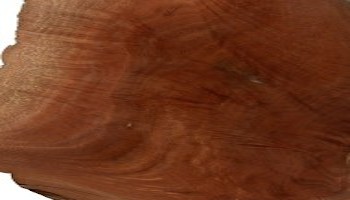
Black Ash | Fraxinus nigra
The heartwood is a light brown color, though darker shades can also be seen, which is sometimes sold as Olive Ash. Black Ash tends to be a bit darker in color than White Ash (Fraxinus americana). It has a medium to coarse texture similar to oak. The grain is almost always straight and regular, though sometimes curly or figured boards can be found. It is rated as perishable, or only slightly durable in regard to decay. Ash is also not resistant to insect attack. It produces good results with hand or machine tools. Responds well to steam bending. Glues, stains, and finishes well. Other Names: Black Ash, Swamp Ash, Fraxinus nigra. Distribution: Northeastern United States and Eastern Canada. Common Uses: Flooring, millwork, boxes/crates, baseball bats, and other turned objects such as tool handles.
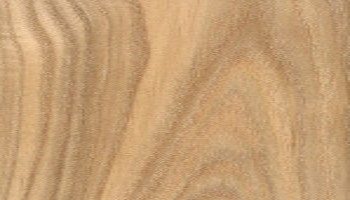
European Ash | Fraxinus excelsior
The heartwood is a light brown color, though darker shades can also be seen, which is sometimes sold as Olive Ash. It has a medium to coarse texture similar to oak. The grain is almost always straight and regular, though sometimes curly or figured boards can be found. Heartwood is rated as perishable, or only slightly durable in regard to decay. Ash is also not resistant to insect attack. Common Uses: Flooring, millwork, boxes/crates, baseball bats, and other turned objects such as tool handles. European Ash has fairly good strength properties for its weight, and is also shock resistant. Other Names: European Ash, Common Ash, Fraxinus excelsior. Distribution: Europe and southwestern Asia.
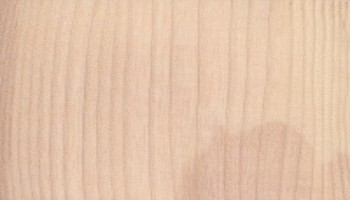
Green Ash | Fraxinus pennsylvanica
The heartwood is a light brown color, though darker shades can also be seen, which is sometimes sold as Olive Ash. It has a medium to coarse texture similar to oak. The grain is almost always straight and regular, though sometimes curly or figured boards can be found. Common Uses: Flooring, millwork, boxes/crates, baseball bats, and other turned objects such as tool handles. Green Ash is one of a handful of species in the Fraxinus genus that are used as commercial lumber. It has strength/mechanical properties that are very close to the related White Ash (Fraxinus americana) and is frequently mixed and sold as White Ash. Distribution: Eastern and Central North America
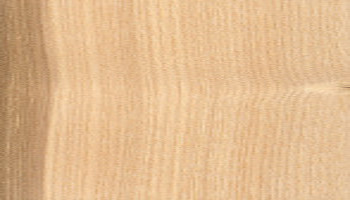
Oregon Ash | Fraxinus latifolia
The heartwood is a light brown color, though darker shades can also be seen, which is sometimes sold as Olive Ash. It has a medium to coarse texture similar to oak. The grain is almost always straight and regular, though sometimes curly or figured boards can be found. Distribution: Western North America. Common Uses: Flooring, millwork, boxes/crates, baseball bats, and other turned objects such as tool handles. Oregon Ash is one of a handful of species in the Fraxinus genus that are used as commercial lumber. It’s not quite as strong or dense as the related White Ash.
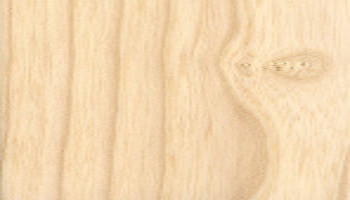
White Ash | Fraxinus americana
The heartwood is a light brown color, though darker shades can also be seen, which is sometimes sold as Olive Ash. Sapwood can be very wide, and tends to be a beige or light brown; not always clearly or sharply demarcated from heartwood. It has a medium to coarse texture similar to oak. The grain is almost always straight and regular, though sometimes moderately curly or figured boards can be found. Common Uses: Flooring, millwork, boxes/crates, baseball bats, and other turned objects such as tool handles. White Ash has fairly good strength properties for its weight, and is also shock resistant. Other Names: White Ash, American White Ash, Fraxinus americana. Distribution: Eastern North America.
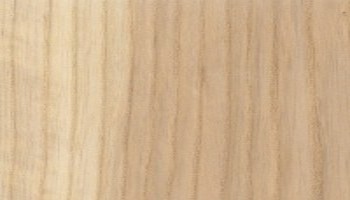
Olive Ash Wood
The term Olive Ash does not refer to any specific species of Ash (Fraxinus genus), but instead is in reference to the darker, streaked heartwood found in some Ash trees, which tends to resemble the wood of Olive trees in the Olea genus. And it should come as little surprise that Olive Ash can be a dead ringer for actual Olive, (with the exception of the porous grain structure, which gives its true identity away easily), because both Ash and Olive are placed in the same family: Oleaceae. The dark-on-light stripes of Olive Ash are also vaguely reminiscent of Zebrawood; though interestingly enough, the darker portions of Olive Ash do not correspond to the growth rings on the tree, but are independent of them. Olive Ash is a sought-after veneer, as well as desired for turning blanks. Olive Ash burl in particular is a highly valued veneer for its unique colors and swirly grain patterns. Far and away, most commercial Olive Ash occurs as European Ash (Fraxinus excelsior) and is typically imported from Europe.
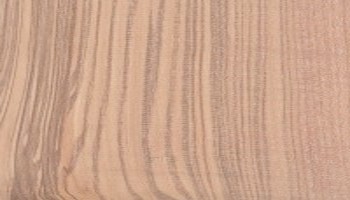
Ambrosia Maple Wood
Much like Spalted Maple and other forms of figured maple, Ambrosia Maple is technically not a specific species of Maple, but rather a general description of any type of Maple that has been infested by ambrosia beetles. The beetles bore into the tree, and with it bring fungus that discolors the wood. Ambrosia Maple is considered a decorative feature which gives the wood additional character, and is sometimes available for purchase.
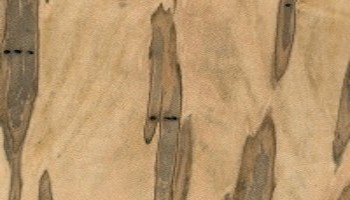
Bigleaf Maple | Acer macrophyllum
Unlike most other hardwoods, the sapwood of maple lumber is most commonly used rather than its heartwood. Sapwood color ranges from almost white, to a light golden or reddish brown, while the heartwood is a darker reddish brown. Silver Maple can also be seen with curly or quilted grain patterns. It has closed pores and a fine texture. Common Uses: Veneer, pulpwood, boxes, crates/pallets, musical instruments, turned objects, and other small specialty wood items. Distribution: Coastal regions of Pacific North. Bigleaf Maple is appropriately named, as its leaves are the largest of any maple, commonly reaching an overall width of 6 to 12 inches (15-30 cm) across. Bigleaf Maple is a commercially important hardwood timber for the United States’ west coast, where it is virtually the only commercial maple species in the region.
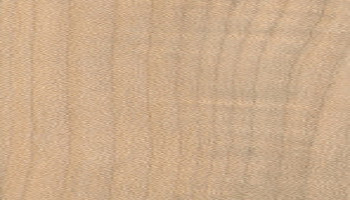
Birdseye Maple Wood
Birdseye Maple is not technically a distinct species of Maple, but rather, it’s a figure that’s occasionally found in Acer saccharum (Sugar Maple) trees. It’s named “birdseye” (sometimes simply written out as: Bird’s Eye Maple) because the figure resembles small bird’s eyes. The figure is reportedly caused by unfavorable growing conditions for the tree. The Sugar Maple attempts to start numerous new buds to get more sunlight, but with poor growing conditions the new shoots are aborted, and afterward a number of tiny knots remain. Birdseye Maple is frequently sold in veneer form, but solid lumber is available as well. Being tiny knots, the birdseye figure is most noticeable and pronounced on flatsawn pieces of lumber.
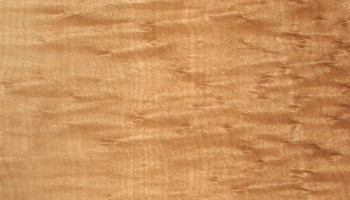
Black Maple | Acer nigrum
Unlike most other hardwoods, the sapwood of Black Maple lumber is most commonly used rather than its heartwood. Sapwood color ranges from nearly white, to an off-white cream color, sometimes with a reddish or golden hue. It is rated as non-durable to perishable in regard to decay resistance. Common Uses: Flooring (from basketball courts and dance-floors to bowling alleys and residential), veneer, pulpwood, musical instruments, cutting boards, butcher blocks, workbenches, baseball bats, and other turned objects and specialty wood items. Other Names: Black Maple, Black Sugar Maple, Acer nigrum. Distribution: Northeastern United States. Black Maple is very closely related to Hard Maple, and some authors simply treat it as a subspecies of Acer saccharum. One way to tell the two trees apart is by the leaves: Black Maple will have three-lobed leaves with shallower notches between the lobes, while Hard (Sugar) Maple will have five-lobed leaves with slightly deeper notches. Also, as its name implies, mature bark on Black Maple trees tends to be dark gray or almost black.
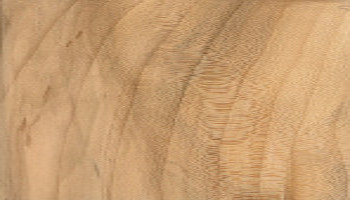
Box Elder | Acer negundo
Other Names: Box Elder, Boxelder Maple, Manitoba Maple, Ash-leaved Maple, Acer negundo. Distribution: North America (most commonly in central and eastern United States).
Sapwood is a pale white, sometimes with a yellow/green hue similar to Yellow Poplar. The heartwood is a grayish/yellowish brown, frequently with red or pink streaks. The red coloration is due to a pigment found in a fungus (Fusarium negundi) that commonly afflicts the tree. Much of the reddish coloring becomes a more subdued pink or brown/gray upon drying. Grain is straight, with a fine even texture. The growth rings are usually faint and non-distinct. It is rated as non-durable to perishable. Heartwood is subject to heart rot and insect attack. Common Uses: Turned objects, small ornamental objects, wood pulp, charcoal, boxes, and crates. Sometimes called “Ash-leaved Maple” because of it’s non-typical leaves, Box Elder is technically considered a maple tree (Acer genus). Its lumber is softer, weaker, and lighter than almost all other species of maple, and Box Elder’s overall strength, as well as it’s strength-to-weight ratio are poor.

Curly Maple Wood
Curly Maple is not actually a species, but simply a description of a figure in the grain—it occurs most often in soft maples, but is also seen in hard maples. It is so called because the ripples in the grain pattern create a three dimensional effect that appears as if the grain has “curled” along the length of the board. Other names for this phenomenon are: tiger maple, fiddleback maple, (in reference to curly maple’s historic use for the backs and sides of violins), or flamed maple. Unlike quilted maple, curly maple is most pronounced when the board is quartersawn, and the curls usually become much less pronounced or absent in flatsawn boards. Hence, on wide boards where the grain tends to be close to vertical (quartersawn) near the edges and horizontal (flatsawn) in the center, the curly pattern will be most evident on the edges of the board, with the figure diminishing in the center. It is not completely clear what environmental conditions (if any) cause this phenomenon, but there are different grades of curly maple, which greatly effect its price. Ideally, the criteria for determining value is based upon: color (both uniformity and lightness—whiter is preferred), frequency of the curls (tight, closely-spaced curls are preferred), and intensity (more depth is preferred). Prices can range from just slightly more expensive than regular soft maple for lower grades of curly maple, to triple, quadruple, or higher for prices of the highest grades. But in general, higher grades of curly maple tend to be less expensive than quilted maple, and offer an economical solution for a “figured” hardwood.
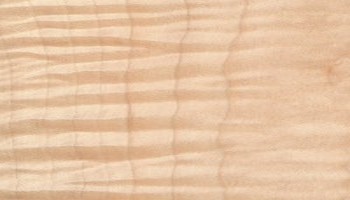
Field Maple | Acer campestre
Unlike most other hardwoods, the sapwood of maple lumber is most commonly used rather than its heartwood. Sapwood color ranges from nearly white, to an off-white cream color, sometimes with a reddish or golden hue. The heartwood tends to be a darker reddish brown. Maple can also be seen with curly or quilted grain patterns. Other Names: Field Maple, Hedge Maple, Acer campestre. Distribution: Europe. Being that the sapwood of maple is used, and not the heartwood, it is non-durable to perishable in regard to decay resistance. Common Uses: Flooring, furniture, musical instruments (violins), turned objects, and veneer. Although small and slow growing, Field Maple contends with Hard Maple (Acer saccharum) as being one of the hardest and heaviest maples around. One of its claims to fame is that Field Maple was used by Antonio Stradivari in making some of his famous violins.
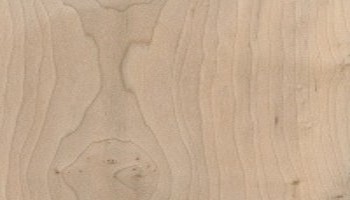
Red Maple | Acer rubrum
Unlike most other hardwoods, the sapwood of maple lumber is most commonly used rather than its heartwood. Sapwood color ranges from almost white, to a light golden or reddish brown, while the heartwood is a darker reddish brown. Red Maple can also be seen with curly or quilted grain patterns. Common Uses: Veneer, pulpwood, boxes, crates/pallets, musical instruments, turned objects, and other small specialty wood items. Distribution: Eastern North America. Red Maple is appropriately named, as its flowers, twigs, seeds, and autumn leaves are all red. Red Maple is common over a very large area of the eastern Untied States, and its wood tends to be slightly heavier, stronger, and harder than other species in the grouping of soft maples, though it is still not as strong as hard maple.
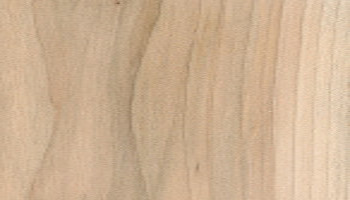
Silver Maple | Acer saccharinum
Unlike most other hardwoods, the sapwood of maple lumber is most commonly used rather than its heartwood. Sapwood color ranges from almost white, to a light golden or reddish brown, while the heartwood is a darker reddish brown. Silver Maple can also be seen with curly or quilted grain patterns. Distribution: Northeastern United States. Common Uses: Veneer, pulpwood, boxes, crates/pallets, musical instruments, turned objects, and other small specialty wood items. Silver Maple is so called because of the pale silvery undersides of its leaves. It is readily distinguished from Sugar Maple as the leaves of Silver Maple have deep notches between the lobes, whereas Sugar Maple’s leaves have shallower notches. Silver Maple is considered to be in the grouping of soft maples, and its wood is lighter, softer, and weaker than that of hard maple.
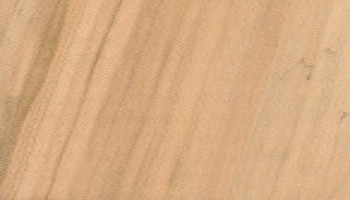
Spalted Maple
Much like Ambrosia Maple and other forms of figured maple, Spalted Maple is technically not a specific species of Maple, but rather a general description of any type of Maple that has been allowed to begin initial stages of decay, and then subsequently dried (preventing further decay). The partial decay, called spalting, gives the wood dark contrasting lines and streaks where fungus has begun to attack the wood. If the wood has been rescued from the spalting at the right time, the lumber should still be sound and usable, with little to no soft spots or rotten wood.
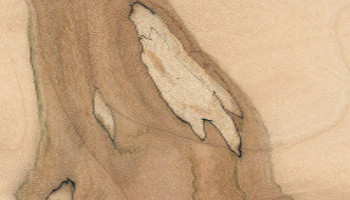
Striped Maple | Acer pensylvanicum
Unlike most other hardwoods, the sapwood of maple lumber is most commonly used rather than its heartwood. Sapwood color ranges from almost white, to a light golden or reddish brown, while the heartwood is a darker reddish brown. Striped Maple can also be seen with curly or quilted grain patterns. Distribution: Eastern North America. Common Uses: Veneer, pulpwood, boxes, crates/pallets, musical instruments, turned objects, and other small specialty wood items. Striped Maple is so called because of its distinct green striped bark. It is much smaller than most other maple species, and with trunk diameters measured in inches, rather than feet, it is seldom used for lumber.

Sycamore Maple | Acer pseudoplatanus
Unlike most other hardwoods, the sapwood of maple lumber is most commonly used rather than its heartwood. Sapwood color ranges from almost white, to a light golden or reddish brown, while the heartwood is a darker reddish brown. Sycamore Maple can also be seen with curly or quilted grain patterns. Common Uses: Veneer, pulpwood, boxes, crates/pallets, musical instruments, turned objects, and other small specialty wood items. Sycamore Maple is commonly referred to simply as Sycamore in Europe, though it is actually a type of maple tree (Acer genus) rather than sycamore (Platanus genus)—and its botanical name A. pseudoplatanus means “false plane” or “false sycamore.” In the United States, Acer pseudoplatanus is usually called Sycamore Maple to distinguish it from the tree that is more commonly referred to as Sycamore, Platanus occidentalis. Other Names: Sycamore Maple, European Sycamore, Acer pseudoplatanus. Distribution: Europe and southwestern Asia.
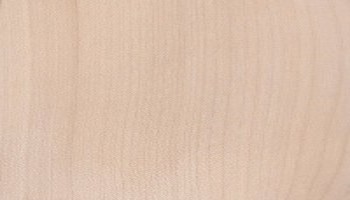
Bigtooth Aspen | Populus grandidentata
Heartwood tends to be light brown. Wide sapwood is a pale yellow to nearly white, and isn’t clearly demarcated, tending to gradually blend into the heartwood. Grain is generally straight, with a uniform medium texture. Low natural luster. Common Uses: Boxes/crates, veneer, plywood, and various utility purposes. Distribution: Northeastern North America.
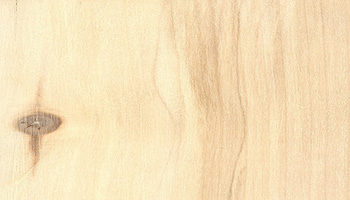
European Aspen | Populus tremula
Heartwood tends to be light brown. Wide sapwood is a pale yellow to nearly white, and isn’t clearly demarcated, tending to gradually blend into the heartwood. Grain is generally straight, with a uniform medium texture. Low natural luster. Common Uses: Boxes/crates, veneer, plywood, and various utility purposes. Other Names: European Aspen, Common Aspen, Populus tremula. Distribution: Temperate regions of Europe and Asia.
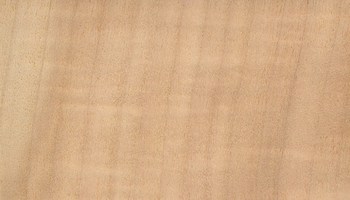
Quaking Aspen | Populus tremuloides
Heartwood tends to be light brown. Wide sapwood is a pale yellow to nearly white, and isn’t clearly demarcated, tending to gradually blend into the heartwood. Grain is generally straight, with a uniform medium texture. Low natural luster. Common Uses: Boxes/crates, veneer, plywood, and various utility purposes. Distribution: Canada and northern United States.

Avodire | Turraeanthus africanus
The color is pale yellow or cream, darkening with age to a golden yellow. Heartwood and sapwood usually look the same. Grain can be straight, wavy, or irregular and interlocked. Texture is fine, with a high natural luster, and small to medium-sized open pores. Common Uses: Veneer, cabinetry, furniture, millwork, and plywood. Avodire can exhibit a range of grain patterns, such as wavy, mottled, and rippled, with an almost-shimmering chatoyance, making it a popular choice for veneering applications. The wood is stable, and has a very good strength-to-weight ratio. Avodire is similar in working properties to the true Mahoganies, and is somewhat related to them as both are in the Meliaceae family. Distribution: Western and central regions of Africa, near lakes and streams.
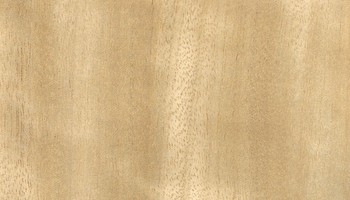
Balsa | Ochroma pyramidale
Heartwood tends to be a pale reddish brown color, though it is not commonly seen in commercial lumber. Most boards/blocks of Balsa are from the sapwood, which is a white to off-white or tan color, sometimes with a pink or yellow hue. Balsa has a medium to coarse texture with open pores and straight grain. Common Uses: Buoys, rafts, surfboards, model airplanes, musical instruments, packing/transport cases, core stock in sandwich laminations, and fishing lures. Balsa is a wood that is famous worldwide. And while its density and mechanical values can vary significantly depending on the growing conditions of any particular tree, it is generally the lightest and softest of all woods, ranging from 8 to 14 pounds per cubic foot. Yet despite its softness, Balsa is technically classified as a hardwood, rather than a softwood, since it has broad leaves and is not a conifer. Balsa has excellent sound, heat, and vibration insulating properties, and is also incredibly buoyant: in fact, Balsa is the Spanish word for raft.Distribution: Tropical regions of the Americas; also grown on plantations.
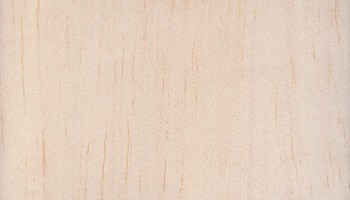
Basswood | Tilia americana
Pale white to cream color, with only subtle growth rings. The color is mostly uniform throughout the surface of the wood. It has a fine and even texture, which is preferred for wood carvers. Common Uses: Carvings, lumber, veneer, plywood, and wood pulp and fiber products. American Basswood is an ideal wood for many woodcarvers. Its soft, fine, even texture make it easy to work with, while its pale inconspicuous color doesn’t distract from the carved patterns of the finished product. It’s also easier to paint and color, since the wood is so light-shaded. Basswood is both very light and very soft: perhaps among the softest of wood species that is still considered a hardwood, with the exception of Balsa. But although it’s very light, it has an outstanding weight-to-stiffness ratio: though it’s overall strength is on par with its low weight. Simply put, when put under stress, it won’t bend much, but it will still break. Other Names: Basswood, American Basswood, Lime, Linden, Tilia americana. Distribution: Eastern North America.
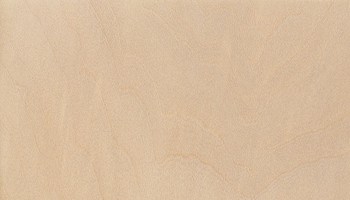
Bulletwood (Manilkara bidentata)
Heartwood is a medium to dark reddish brown. Color tends to darken with age. Pale yellow sapwood is clearly differentiated from the heartwood, though not always sharply demarcated. Grain straight to interlocked or wavy. Fine uniform texture with low natural luster. Common Uses: Heavy construction (within its natural range), decking, flooring, boat-building, bent parts, and turned objects. Bulletwood is an incredibly strong, dense wood which has good durability in exterior applications. Other Names: Bulletwood, Massaranduba, Manilkara bidentata. Distribution: Caribbean, Central and South America.

American Beech | Fagus grandifolia
Beech is typically a pale cream color, sometimes with a pink or brown hue. Veneer tends to be slightly darker colored, as slicing the veneer usually requires the wood to be prepared with steam, which gives the wood a more golden tone. Flatsawn surfaces tend to be very plain, while quartersawn surfaces exhibit a silvery fleck pattern. Grain is straight, with a fine to medium uniform texture. Beech is considered non-durable or perishable; it is also susceptible to insect attack. Common Uses: Lumber, veneer, flooring, crates/pallets, railroad ties, musical instruments, furniture, turnery, and other small wooden objects. American Beech is sometimes underrated and under-appreciated: which may be due to its somewhat bland appearance. Yet considering its decent strength and hardness and its comparatively low cost Beech represents an excellent value for woodworkers. Distribution: Eastern United States.

Beefwood | Grevillea striata
Beefwood is a medium to dark reddish brown with lighter reddish grey rays, (perhaps giving it a visual similarity to raw beef: hence the name). Like other woods that exhibit the strongest figure in quartersawn pieces, (such as Sycamore), Beefwood has the most pronounced figure and displays the largest flecks when perfectly quartersawn; this is due to the wood’s large medullary rays, whose layout can be seen the clearest when looking at the endgrain. It has a fairly coarse texture and straight grain. Common Uses: Inlay, marquetry, turnery, and other small specialty items. Beefwood is in the Proteaceae family, and has wide rays that are characteristic of Lacewood. In its vaguest sense, the term “lacewood” is used to describe any wood that displays figuring that resembles lace, (which would technically include Beefwood). Attempts to identify a specific board macroscopically may be difficult. However, Beefwood can usually be separated from most common species of Silky Oak and Lacewood based upon its darker color and considerably higher density (with the exception of Leopardwood, which also has a higher density). Distribution: Western Australia.
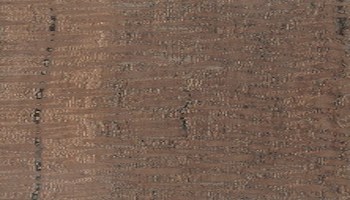
Dark Red Meranti | Shorea spp.
It is typically a dark reddish brown, or purplish brown: commonly with white resin streaks present. It has a coarse texture with medium to large pores. Grain is sometimes interlocked. It is reported as moderately-durable to non-durable in regard to decay resistance, but is susceptible to insect attack. It is typically easy to work, though any interlocked grain can present problems during planing, and Dark Red Meranti is reported to have very poor steam-bending properties. Some species may have a slight blunting effect on tools due to small levels of silica present in the wood. Glues, stains, and finishes well. Common Uses: Plywood, interior furniture, general construction, concrete forms, veneer, and boatbuilding. Sometimes referred to as Lauan, wood in the Shorea genus is very commonly used in southeast Asia, and there is an abundance of variety between the difference species: each with different working properties, appearances, and mechanical strength values.The five main groupings for Meranti (Lauan) are: Light Red Meranti, Dark Red Meranti, White Meranti, Yellow Meranti, and Balau. Also called Philippine Mahogany, Meranti bears no relation to what is considered to be “true” mahogany in the Swietenia and Khaya genera. Other Names: Dark Red Meranti, Lauan, Philippine Mahogany, Shorea spp. Distribution: Southeast Asia.
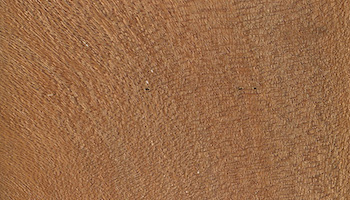
White Meranti | Shorea spp.
It’s heartwood is a pale yellowish-orange when freshly cut, aging to a golden yellow-brown. It has a coarse texture with medium to large pores. Grain is sometimes interlocked. Contains a high level of silica: over .5% of dried weight. White Meranti is in and of itself easy to work, but it has a very severe blunting effect on tools due to its high silica content, so carbide-tipped cutters are recommended. Also, interlocked grain can sometimes present problems during planing, and sawn/planed surfaces can be left fuzzy or ragged. Sanding to finer grits will help smooth the wood’s surface, and prepare it for a stain or finish. Glues well. Other Names: White Meranti, Lauan, Philippine Mahogany, Shorea spp. Distribution: Southeast Asia. Common Uses: Plywood, veneer, boatbuilding, interior furniture, and general construction lumber. Sometimes referred to as Lauan, wood in the Shorea genus is very commonly used in southeast Asia, and there is an abundance of variety between the difference species: each with different working properties, appearances, and mechanical strength values. The five main groupings for Meranti (Lauan) are: Light Red Meranti, Dark Red Meranti, White Meranti, Yellow Meranti, and Balau. Also called Philippine Mahogany, Meranti bears no relation to what is considered to be “true” mahogany in the Swietenia and Khaya genera.
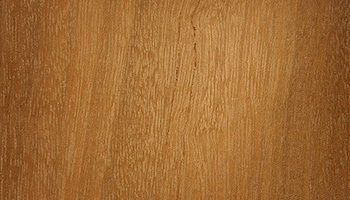
Beli | Julbernardia pellegriniana
Heartwood is a light brown, commonly with alternating darker stripes throughout. Quartersawn sections in particular exhibit a Zebrawood-like appearance. Wide sapwood is a pale yellow and is clearly demarcated from the heartwood, and lacks the darker stripes. Grain is usually interlocked, with a uniform medium to coarse texture. Moderate natural luster. It is rated as moderately durable, with moderate resistance to insect attack. Common Uses: Cabinetry, veneer, flooring, and interior millwork. A more economical (though much more uncommon) substitute for Zebrawood. Beli usually lacks the contrast between dark and light portions that are seen on Zebrawood, Black and White Ebony, and spalted woods. Distribution: Africa (Cameroon, Gabon).
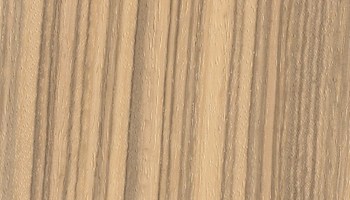
Gray Birch | Betula populifolia
Heartwood tends to be a light reddish brown, with nearly white sapwood. Occasionally figured pieces are available with a wide, shallow curl similar to the curl found in Cherry. There is virtually no color distinction between annual growth rings, giving Birch a somewhat dull, uniform appearance. Distribution: Northeastern North America. Grain is generally straight or slightly wavy, with a fine, even texture. Low natural luster. Common Uses: Plywood, boxes, crates, turned objects, interior trim, and other small specialty wood items. Birch is perishable, and will readily rot and decay if exposed to the elements. The wood is also susceptible to insect attack. Common Uses: Plywood, boxes, crates, turned objects, interior trim, and other small specialty wood items. Birch is one of the most widely used woods for veneer and plywood worldwide. Besides regular sheets of plywood, Birch veneer is also used for doors, furniture, and paneling.
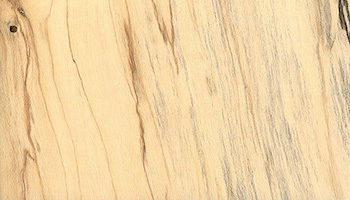
Masur Birch
Masur Birch is not a particular species of birch, but is rather a grain figure that is most commonly seen in Downy Birch and Silver Birch. It is also sometimes known as Karelian Birch—with Karelia being a region between Finland and Russia. Once surmised to have been caused by the boring larvae of a certain beetle, Masur Birch in Norway has been shown to be hereditary, classifying the name of the variant as Betula pendula var. Carelica. Regardless of the exact cause and makeup of the peculiar grain pattern, the resulting figure and appearance is very similar to burl wood or birdseye maple, though of a different origin. Masur Birch is commonly used for turned objects, decorative veneer, knife handles, and other small specialty items.
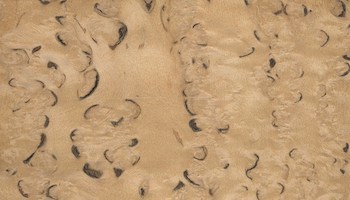
Paper Birch | Betula papyrifera
Heartwood tends to be a light reddish brown, with nearly white sapwood. Occasionally figured pieces are available with a wide, shallow curl similar to the curl found in Cherry. There is virtually no color distinction between annual growth rings, giving Birch a somewhat dull, uniform appearance. Distribution: Northern and central North America. Grain is generally straight or slightly wavy, with a fine, even texture. Low natural luster. Birch is perishable, and will readily rot and decay if exposed to the elements. The wood is also susceptible to insect attack. Common Uses: Plywood, boxes, crates, turned objects, interior trim, and other small specialty wood items. Birch is one of the most widely used woods for veneer and plywood worldwide. Besides regular sheets of plywood, Birch veneer is also used for doors, furniture, and paneling.
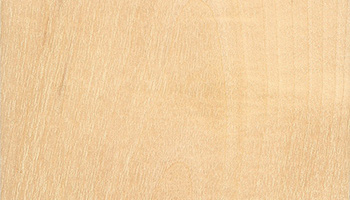
River Birch | Betula nigra
Heartwood tends to be a light reddish brown, with nearly white sapwood. Occasionally figured pieces are available with a wide, shallow curl similar to the curl found in Cherry. There is virtually no color distinction between annual growth rings, giving Birch a somewhat dull, uniform appearance. Distribution: Eastern United States. Grain is generally straight or slightly wavy, with a fine, even texture. Low natural luster. Birch is perishable, and will readily rot and decay if exposed to the elements. The wood is also susceptible to insect attack. Common Uses: Plywood, boxes, crates, turned objects, interior trim, and other small specialty wood items. Birch is one of the most widely used woods for veneer and plywood worldwide. Besides regular sheets of plywood, Birch veneer is also used for doors, furniture, and paneling.
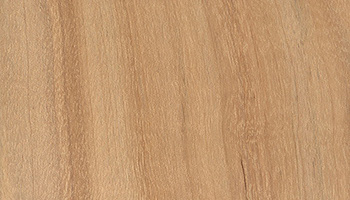
Silver Birch | Betula pendula
Heartwood tends to be a light reddish brown, with nearly white sapwood. Occasionally figured pieces are available with a wide, shallow curl similar to the curl found in Cherry. There is virtually no color distinction between annual growth rings, giving Birch a somewhat dull, uniform appearance. Distribution: Europe and southwest Asia. Grain is generally straight or slightly wavy, with a fine, even texture. Low natural luster. Birch is perishable, and will readily rot and decay if exposed to the elements. The wood is also susceptible to insect attack. Common Uses: Plywood, boxes, crates, turned objects, interior trim, and other small specialty wood items. Birch is one of the most widely used woods for veneer and plywood worldwide. Besides regular sheets of plywood, Birch veneer is also used for doors, furniture, and paneling.
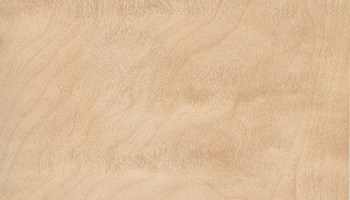
Yellow Birch | Betula alleghaniensis
Heartwood tends to be a light reddish brown, with nearly white sapwood. Occasionally figured pieces are available with a wide, shallow curl similar to the curl found in Cherry. There is virtually no color distinction between annual growth rings, giving Birch a somewhat dull, uniform appearance. Distribution: Northeastern North America. Grain is generally straight or slightly wavy, with a fine, even texture. Low natural luster. Birch is perishable, and will readily rot and decay if exposed to the elements. The wood is also susceptible to insect attack. Common Uses: Plywood, boxes, crates, turned objects, interior trim, and other small specialty wood items. Birch is one of the most widely used woods for veneer and plywood worldwide. Besides regular sheets of plywood, Birch veneer is also used for doors, furniture, and paneling.
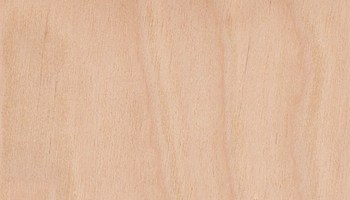
Black Mesquite | Prosopis nigra
Heartwood tends to be a medium to chocolate brown, somewhat reminiscent of Black Walnut. Color tends to darken with age. Sapwood is a yellow/tan color. Distribution: Gran Chaco region of South America. Black Mesquite has a medium to coarse texture and open pores, with a slight natural luster. Clear portions of the trunk tend to have straight grain, though knots, defects, and other irregularities are common. It is considered durable to very durable regarding decay resistance, though it is susceptible to insect attack. Common Uses: Flooring, turned objects, boatbuilding, and furniture.
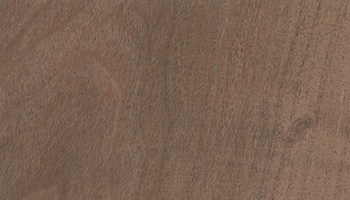
Honey Mesquite | Prosopis glandulosa
Heartwood tends to be a reddish brown, which darkens with age. Sapwood is yellow in color, and tends to be thin. Honey Mesquite has a medium to coarse texture and open pores, with a slight natural luster. Clear portions of the trunk tend to have straight or wavy grain: though knots, defects, and other irregularities are common. Distribution: Southwestern North America. Honey Mesquite is considered very durable regarding decay resistance. Considered by some to be an invasive species, Mesquite is known to produce great firewood with a high thermal value. Honey Mesquite is prized by segmented woodturners and others for its exceptional stability. Honey Mesquite exhibits very little movement or expansion/contraction due to environmental changes in humidity.
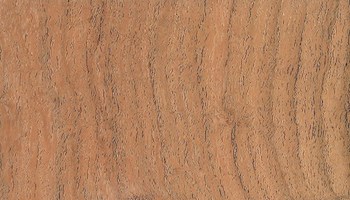
Monkeypod | Samanea saman
Color tends to be a golden to dark brown, sometimes with darker streaks. Sapwood is usually thin and yellow/white, clearly demarcated from the heartwood. Monkeypod is sometimes seem with highly figured curly or wild grain patterns. Other Names: Monkeypod, Monkey Pod, Samanea saman (syn. Albizia saman, Pithecellobium saman). Distribution: Central and South America, also planted/naturalized in many tropical regions of the world. Grain is usually straight, but can also be interlocked or wavy. Texture is medium to coarse, with medium to large open pores and a moderate natural luster. Rated as durable to very durable regarding decay resistance, Monkeypod is also resistant to most insect attacks. Common Uses: Veneer, plywood, millwork/trim, carving, cabinetry, furniture, musical instruments (guitars and ukuleles), and other small specialty wood items. Called by many different names in many different cultures, Monkeypod trees are commonly planted in tropical regions as an ornamental shrub or shade tree. Its lumber is likewise used for a number of different purposes depending on the locale, ranging from utility wood and construction purposes to fine furniture.
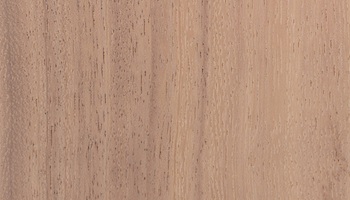
Mopane | Colophospermum mopane
Heartwood is medium to dark reddish brown, with black stripes. Color tends to darken with age. Well-defined sapwood is a pale yellow. Grain is usually interlocked. Fine uniform texture with a moderate natural luster. Mopane is rated as very durable, and is also resistant to termites and powder post beetles. Common Uses: Flooring, musical instruments (woodwind), turnery, fuelwood/charcoal, furniture, inlay, and exterior construction. Other Names: Mopane, Mopani, Colophospermum mopane. Distribution: Southern Africa. Mopane is an often neglected and overlooked African hardwood, though its density and durability are virtually unrivaled. The wood is also said to have excellent acoustic properties, comparing similarly to African Blackwood—at a more economical price.
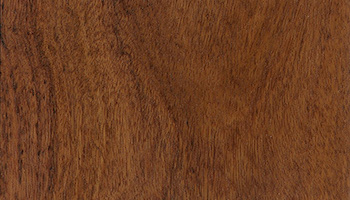
Guatemalan Mora | Maclura tinctoria
This Guatemalan variant of Argentine Osage Orange is sometimes called “Guatemalan Tigerwood” or “Mora” (not to be confused with Mora excelsa, which also goes by the common name of Mora) which is light to medium reddish brown, with streaks of lighter and darker material. Other Names: Guatemalan Mora, Mora, Maclura tinctoria (syn. Morus tinctoria). Distribution: Guatemala. It has a straight to interlocked grain, with a fine to medium texture. Guatemalan Mora is very durable and has good weathering characteristics; it is also resistant to termites. Common Uses: Heavy construction (within the tree’s natural range), flooring, furniture, turnings, and other small specialty wood items. Perhaps one of the most confusing names in modern hardwood commerce is the selling of a Guatemalan variety of Osage Orange—which looks vastly different than the traditional yellow color—that’s being marketed as “Mora.” Unfortunately, the common name Mora has traditionally been used for an unrelated wood found in northern South America (not found in Guatemala) known by the scientific name Mora excelsa.
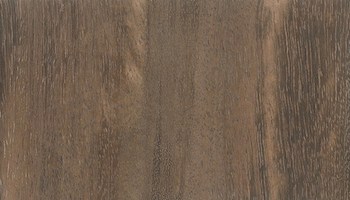
Pau Ferro | Machaerium spp.
Color can be highly varied, ranging from reddish/orange to a dark violet/brown, usually with contrasting darker black streaks. Narrow sapwood is a pale yellow and is clearly demarcated from the heartwood. Grain is typically straight, though sometimes slightly irregular or interlocked depending on the species. Fine, even texture and a naturally high luster—though depending on the particular species, the wood can have a coarser, more fibrous texture. It is rated as very durable, though quite susceptible to insect attack, and not recommended in direct ground contact. Pau Ferro is a wood of many names, and is sometimes called Morado: and because the wood is so similar in appearance and working properties to rosewood, it is also sometimes referred to as Bolivian or Santos Rosewood. The wood has been used in various capacities as a substitute for the endangered Brazilian Rosewood. Although the wood is not technically in the Dalbergia genus, it’s in a closely-related genus (Machaerium), and contains the same sensitizing compounds found in rosewoods—about as close to a true rosewood as a wood can get without actually being a Dalbergia species. Other Names: Pau Ferro, Morado, Bolivian Rosewood, Santos Rosewood, Machaerium spp. (Machaerium scleroxylon). Distribution: Tropical South America (mainly Brazil and Bolivia).
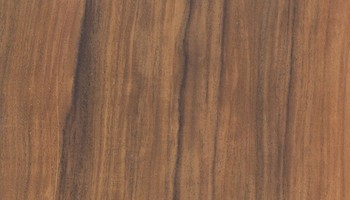
Movingui | Distemonanthus benthamianus
Yellow to orangish brown; color tends to darken with age. Movingui frequently exhibits figured grain patterns such as mottle or ripple. Grain can vary from being straight to interlocked to wavy. Texture is fine and even, with a naturally high luster. It is rated as moderately durable regarding decay resistance, and moderately resistant to termite attack. Common Uses: Veneer, cabinetry, furniture, and flooring. As with so many other lustrous yellow-colored woods, Movingui is frequently referred to as Satinwood. Its yellow color can be quite vibrant, while it can also have highly pronounced mottle figure, making it a favorite for veneering and applications used for accents. Other Names: Movingui, Ayan, Nigerian Satinwood, Distemonanthus benthamianus. Distribution: West Africa.
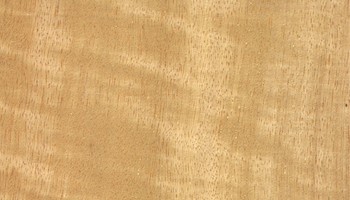
Red Mulberry | Morus rubra
Heartwood is a golden brown, darkening to a medium/reddish brown with age. Sapwood is a pale yellowish white. Overall appearance is very similar to Osage Orange. It is rated as very durable, with good insect resistance and weathering properties. Common Uses: Fence posts, furniture, and turned objects. Mulberry is perhaps better known for its fruit; the tree’s leaves are also the sole food source for the silkworm, which is used to produce silk.
The wood itself looks very similar to Osage Orange, though Mulberry tends to be significantly lighter. Other Names: Mulberry, Morus spp., Morus alba, M. nigra, M. rubra, etc. Red Mulberry is native to Southeastern United States, other species are found worldwide.

Muninga | Pterocarpus angolensis
Heartwood color can vary widely from a lighter golden brown, to a darker reddish or purplish brown. Muninga’s colors reportedly get lighter upon exposure to light. Heartwood is rated as being durable to moderately durable. There are mixed reports as to its resistance to insect damage, ranging from very resistant to susceptible. Common Uses: Furniture, boatbuilding, veneer, turnings, and other small wooden objects. As mentioned above, Muninga is sometimes treated as a substitue for Teak. The wood has outstanding stability, and should remain quite stable in the midst of seasonal changes. Other Names: Muninga, Kiaat, Mukwa, Pterocarpus angolensis. Distribution: South-central Africa

African Blackwood | Dalbergia melanoxylon
Often completely black, with little or no discernible grain. Occasionally slightly lighter, with a dark brown or purplish hue. The pale yellow sapwood is usually very thin, and is clearly demarcated from the darker heartwood. Heartwood is rated as very durable in regards to decay resistance, though only moderately resistant to insect attack. The sapwood is commonly attacked by powder-post beetles and other borers. Common Uses: Musical instruments (guitars, clarinets, oboes, etc.), inlay, carving, tool handles, and other turned objects. To be considered the original ebony, African Blackwood was imported and used in Ancient Egypt thousands of years ago. Even the name “ebony” has an Egyptian derivation as “hbny”—which has been shown to refer to primarily to Dalbergia melanoxylon, rather than the species which are considered to be ebony today: such as those in the Diospyros genus. In addition, African Blackwood is technically in the Rosewood genus (Dalbergia), and is more stable and resistant to movement and warping than other types of ebony. African Blackwood is considered to be among the hardest and densest of woods in the world; indeed, among some 285 species tested, (including Lignum Vitae), Gabriel Janka originally found African Blackwood to be the very hardest. Unfortunately, many online sources list African Blackwood’s Janka hardness at only ~1700lbf—which seems very unlikely given its confirmed specific gravity. Other Names: African Blackwood, Mpingo, Swahili, Dalbergia melanoxylon. Distribution: Dry savanna regions of central and southern Africa.
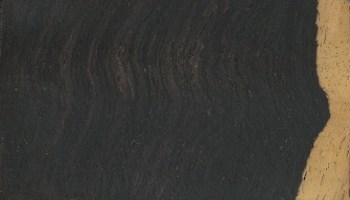
Australian Blackwood | Acacia melanoxylon
Color can be highly variable, but tends to be medium golden or reddish brown, similar to Koa or Mahogany. There are usually contrasting bands of color in the growth rings, and it is not uncommon to see boards with ribbon-like streaks of color. Boards figured with wavy and/or curly grain are also not uncommon. Rated as moderately durable regarding decay resistance, though susceptible to insect attack. Common Uses: Veneer, furniture, cabinetry, musical instruments, gunstocks, turned objects, and other specialty wood objects. Although called “Blackwood,” the name is somewhat of a misnomer, as its wood is not at all black. Rather, its lustrous golden brown grain has been used as a sustainable alternative to Koa. The species has been introduced to a number of regions worldwide—either as an ornamental shade tree, or on a plantation for lumber—and in many areas, the hardy tree species has become an invasive species. Australian Blackwood compares very closely with Koa. Australian Blackwood tends to have a straighter grain, and slightly better machining characteristics than Koa. Other Names: Australian Blackwood, Tasmanian Blackwood, Acacia Blackwood, Acacia melanoxylon. Distribution: Native to Tasmania and eastern Australia; also introduced to Africa, South America, and southern Asia.
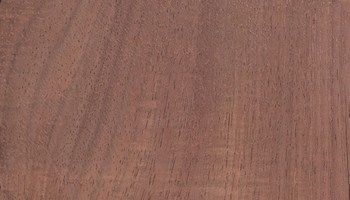
Burmese Blackwood | Dalbergia cultrata
Heartwood color is variable, and ranges from a medium olive or reddish brown to a darker purplish brown, frequently with nearly black streaks throughout. Color tends to darken with age. Pale gray sapwood is clearly demarcated from heartwood. With the light and dark streaks and lighter parenchyma bands, the wood can have a very unique (though subtle) grain pattern, particularly on flatsawn surfaces. Common Uses: Turned objects, carvings, furniture, inlay, musical instruments (percussion), and small specialty wood items. Called by a number of names, such as Khamphi Rosewood or Laos Rosewood, this species is actually in the true rosewood genus (Dalbergia), though another species, Dalbergia oliveri, is called Burmese Rosewood and has an overlapping distribution. In addition to its unique coloration and grain patterning, Burmese Blackwood is also reputed to be very resonant, and is sometimes used for marimba bars and other musical instrument applications. Other Names: Burmese Blackwood, Khamphi Rosewood, Laos Rosewood, Dalbergia cultrata. Distribution: Southeast Asia.
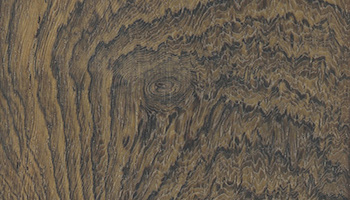
Myrtle | Umbellularia californica
Heartwood is light brown to gray or olive. Sapwood is lighter and is a pale brown color. The heartwood is reported to be very resistant to decay, but the sapwood is not. Since most boards and pieces can include both sapwood and heartwood, Myrtle should not be used in exterior applications. Common Uses: Veneer (burl), cabinetry, interior trim, and turned objects. Myrtle has a very poor strength-to-weight ratio, and is typically used for more aesthetic purposes, rather than in applications where strength is important. Other Names: Myrtle, Oregon Myrtle, California Bay Laurel, Umbellularia californica. Distribution: Coastal regions of southwest Oregon and central California.
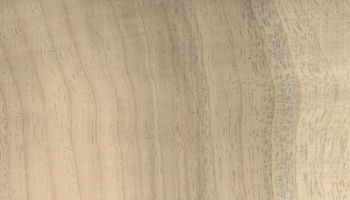
Tasmanian Myrtle | Nothofagus cunninghamii
Heartwood is a pink or light reddish brown. Narrow sapwood is paler, and is ambiguously demarcated by a zone of intermediate coloration. Can have a wavy or curly grain which has a very satiny appearance. Much more uncommon, Tasmanian Myrtle can also have dark black streaks in the wood, sometimes referred to as “tiger myrtle.” Rated as non-durable to perishable regarding decay resistance. Also susceptible to insect attack. Common Uses: Veneer, plywood, boatbuilding, turned objects, carving, flooring, and furniture. Tasmanian Myrtle is not closely related to the lumber that’s considered Myrtle in the United States (Umbellularia californica)—technically, neither species is considered a true myrtle, which is restricted to the Myrtus genus. Tasmanian Myrtle is actually closer in relation to beech (Fagus genus), and is sometimes referred to as Myrtle Beech or Silver Beech. Other Names: Tasmanian Myrtle, Myrtle Beech, Nothofagus cunninghamii. Distribution: Southeast Australia and New Zealand.
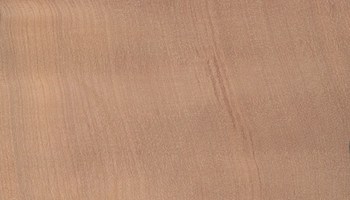
Narra | Pterocarpus indicus)
Heartwood can vary widely in color, ranging from a golden yellow to a reddish brown. Narra has good weathering characteristics and is typically very durable regarding decay resistance. It is generally resistant to termite and powder post beetle attack, though there can occasionally be ambrosia beetles present, especially in the sapwood. Common Uses: Veneer, furniture, cabinetry, boatbuilding, plywood, turned objects, and small specialty wood items. Narra is the same wood species (Pterocarpus indicus) as Amboyna, with Amboyna being the specific name of Narra that is in burl form. Other Names: Narra, Amboyna (burl), Pterocarpus indicus. Distribution: Southeast Asia.
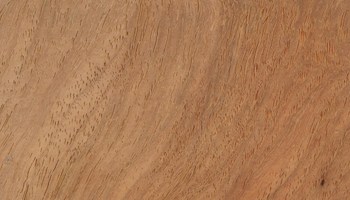
Peruvian Walnut | Juglans spp.
Heartwood tends to be darker than temperate walnut species, with a deep chocolate brown color, sometimes with a purplish hue. May also contain streaks of lighter-colored wood mixed throughout the heartwood, which can sometimes be extensive and result in a high degree of waste. Grain figuring such as curl seems to be much less common than other walnut species. Peruvian Walnut is rated as moderately durable in terms of decay resistance, though it is susceptible to insect attack. Common Uses: Furniture, cabinetry, veneers, flooring, musical instruments, and interior trim. Perhaps the most fitting name would be Tropical Walnut, yet the term Peruvian Walnut is commonly used among hardwood dealers, even though the Walnut may not always technically come from Peru. The name Nogal is also used on occasion, and is the Spanish word for Walnut. Other Names: Peruvian Walnut, Tropical Walnut, Nogal, Juglans spp., Juglans australis, J. neotropica, J. olanchana, etc. Distribution: Southern Mexico, Central and South America.
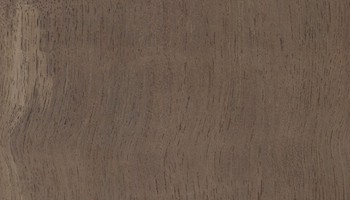
Nyatoh | Palaquium spp.
Heartwood can be pale pink to reddish or purplish brown. Sapwood is lighter colored, and not clearly delineated from heartwood. Other Names: Nyatoh, Palaquium spp., Payena spp. Distribution: Widely distributed from India through Southeast Asia to the Philippines, New Guinea, and the Western Pacific Islands. Rated as non-durable and is susceptible to insect attack. Common Uses: Furniture, plywood, and interior joinery. The two genera, Palaquium and Payene, are closely related and have very similar characteristics: though when dealing with specific data, it only reflects the average values from a number of species. A latex material called gutta-percha has been harvested from trees in the Palaquium genus, though its use today has been largely supplanted by synthetic materials.
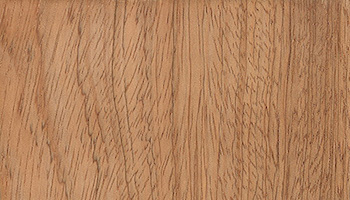
Bloodwood | Brosimum rubescens
Heartwood is a bright, vivid red. Color can darken to a darker brownish red over time with exposure to light. Applying a thick protective finish, and keeping the wood out of direct sunlight can help slow this color
shift. Well defined sapwood is a pale yellowish color, though given the typically large trunk diameters, it’s seldom seen or included in imported lumber. Other Names: Bloodwood, Satine, Brosimum rubescens (syn. B. paraense). Distribution: Tropical South America. Reported to be very durable, and resistant to most insect attacks. Common Uses: Carvings, trim, inlays, furniture, guitars, knife handles, and turned objects. Traditionally known by the name Satine, it’s no wonder that the wood (now more commonly called Bloodwood) has grown so popular as an imported wood species. Though it poses some challenges in working characteristics, its hardness, strength, and coloration make this a crimson favorite.
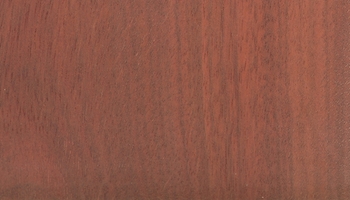
Bocote | Cordia spp.
Has a yellowish brown body with dramatic dark brown to almost black stripes. Color tends to darken with age. Also, the grain patterning can be quite striking, particularly on flatsawn areas. It’s not uncommon to see many “eyes” and other figuring in Bocote: though unlike knots, they do not seem to present any special challenges in machining. Distribution: Mexico and Central/South America. Heartwood is rated from moderately durable to very durable depending on the species; it is susceptible to insect attack. Common Uses: Fine furniture, cabinetry, flooring, veneer, boatbuilding, musical instruments, gunstocks, turned objects, and other small specialty wood items. With its striking, zebra-like contrasts, and bold figuring, Bocote can be a very eye-catching wood. Bookmatching two consecutive panels can create symmetrical ”faces” and other patterns in the wood, (though a relatively thin-kerf blade should be used to minimize the shift of the pattern). Bocote is generally used for its aesthetic attributes, rather than its mechanical ones—and although Bocote is by no means weak, its strength-to-weight ratio is
below average. (It is roughly as stiff and strong as Hard Maple, even though Bocote is considerably heavier.)
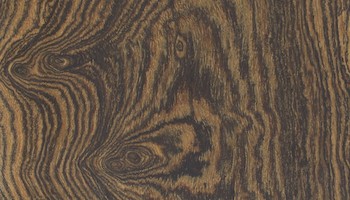
Bois de Rose | Dalbergia maritima
Heartwood color is a vibrant magenta or reddish purple, sometimes with darker violet-black streaks. Overall color tends to darken with age to a deep purple to nearly black. Other Names: Bois de Rose, Dalbergia maritima, Dalbergia louvelii. Distribution: Madagascar. Being a dense rosewood, it is presumably very durable. Common Uses: Musical instruments, inlay, fine furniture, carving, turned objects, and other small specialty wood items. This sought-after and prized hardwood is only found on the African island of Madagascar. Bois de Rose is french for “rosewood,” and it is in the true rosewood genus (Dalbergia), and could rightly be referred to as Madagascar Rosewood. But to avoid confusion, the common name Madagascar Rosewood belongs to another tree species endemic to Madagascar: Dalbergia baronii.
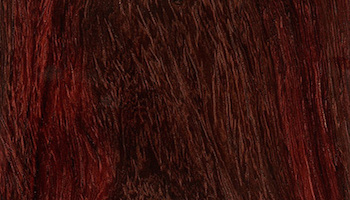
Bosse | Guarea cedrata
Heartwood initially a pale pinkish brown, darkening with age to a more golden to medium brown. Pale yellowish sapwood is well defined. Can be highly figured, with grain patterns such as pommele being sought after in veneer form. Other Names: Bosse, Guarea, Guarea spp. (G. cedrata and G. thompsonii). Distribution: West and Central Africa. Heartwood ranges from moderately durable to very durable regarding decay resistance. Bosse also has fair resistance against insect attacks and has good weathering characteristics. Common Uses: Veneer, furniture, cabinetry, inlay, flooring, boatbuilding, and turned objects. This wood is vaguely reminiscent of Sapele (both are in the Meliaceae family), though it tends to be a little lighter in color, and does not exhibit the ribboning figure on quartersawn surfaces. Bosse is primarily sold in veneer form (which may be a good thing, given the long list of heath effects that the sawdust can cause).
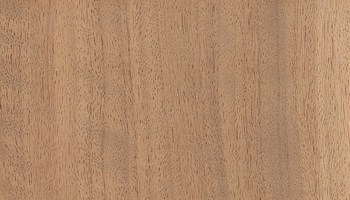
Boxwood | Buxus sempervirens
Color tends to be a light cream to yellow, which tends to darken slightly with prolonged exposure to light. Sapwood not distinct from heartwood. Other Names: Boxwood, Common Box, European Box, Buxus sempervirens. Distribution: Europe, northwest Africa, and southwest Asia. Heartwood is rated as durable, though it can become stained with dark streaks due to fungal attack. Occasionally susceptible to insect attack. Common Uses: Boxwood is well-suited for carving and turning, and the tree’s diminutive size restricts it to smaller projects. Some common uses for Boxwood include: carvings, chess pieces, musical instruments (flutes, recorders, woodwinds, etc.), rulers, handles, turned objects, and other small specialty items. It’s a shame that the term “Boxwood” has become so convoluted and confused in modern times, as there seems to be one particular wood species that has historically been associated with the name Boxwood: Buxus sempervirens. It is this species that can be considered the original, genuine boxwood. Boxwood’s ability to hold crisp details in carvings and lathe work, in combination with its color and silky-fine texture truly make it a classic.Other species in different genera tend to have similar appearances and working characteristics, (i.e., fine texture, hard, and heavy), and perhaps get marketed under the boxwood name, much like many woods are called by the mahogany name.

Castelo Boxwood | Calycophyllum multiflorum
Heartwood is a light brown to pale yellowish color. Sapwood is lighter in color and isn’t clearly demarcated form the heartwood. Other Names: Castelo Boxwood, Ivorywood, Palo Blanco, Calycophyllum multiflorum. Distribution: South America. Mixed reports depending on type of decay fungi; usually rated as moderately durable. Excellent resistance to marine borers. Common Uses: Archery bows, carvings, inlay and turned objects. Comments: Marketed as an alternative to true european Boxwood (Buxus sempervirens), Castelo Boxwood is said to turn very well, and its color and texture is comparable to true boxwood as well.
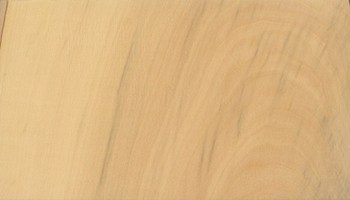
Red Oak | Quercus rubra
Has a light to medium reddish-brown color, though there can be a fair amount of variation in color. Conversely, White Oak tends to be slightly more olive-colored, but is by no means a reliable method of determining the type of oak. Distribution: Northeastern United States and Southeastern Canada. Falls somewhere between slightly durable to non-durable. Red Oaks do not have the level of decay and rot resistance that White Oaks possess. Common Uses: Cabinetry, furniture, interior trim, flooring, and veneer. Red Oak, along with its brother White Oak, are commonly used domestic lumber species. Hard, strong, and moderately priced, Red Oak presents an exceptional value to woodworkers—which explains why it is so widely used in cabinet and furniture making.
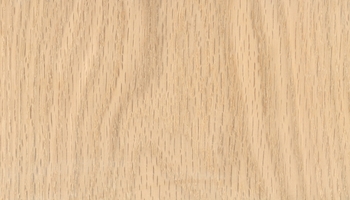
Black Oak | Quercus velutina
Has a light to medium reddish-brown color, though there can be a fair amount of variation in color. Conversely, White Oak tends to be slightly more olive-colored, but is by no means a reliable method of determining the type of oak. Other Names: Black Oak, Eastern Black Oak, Quercus velutina. Distribution: Eastern North America. Falls somewhere between slightly durable to non-durable. Red oaks such as Black Oak do not have the level of decay and rot resistance that White Oaks possess. Common Uses: Cabinetry, furniture, interior trim, flooring, and veneer. Not to be confused with Bog Oak (which is actually black in color), Black Oak falls into the red oak group, and shares many of the same traits as Red Oak (Quercus rubra). Red Oak, along with its brother White Oak, are commonly used domestic lumber species. Hard, strong, and moderately priced, Red Oak presents an exceptional value to woodworkers—which explains why it is so widely used in cabinet and furniture making.
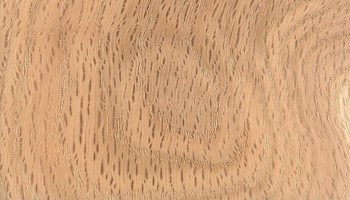
California Black Oak | Quercus kelloggii
Has a light to medium reddish-brown color, though there can be a fair amount of variation in color. Conversely, White Oak tends to be slightly more olive-colored, but is by no means a reliable method of determining the type of oak.
Rot Resistance: Falls somewhere between slightly durable to non-durable. Red oaks such as California Black Oak do not have the level of decay and rot resistance that White Oaks possess. Other Names: California Black Oak, Kellogg Oak, Quercus kelloggii. Distribution: Western United States. Common Uses: Cabinetry, furniture, interior trim, flooring, and veneer. California Black Oak falls into the red oak group, and shares many of the same traits as Red Oak (Quercus rubra). Red Oak, along with its brother White Oak, are commonly used domestic lumber species. Hard, strong, and moderately priced, Red Oak presents an exceptional value to woodworkers—which explains why it is so widely used in cabinet and furniture making.
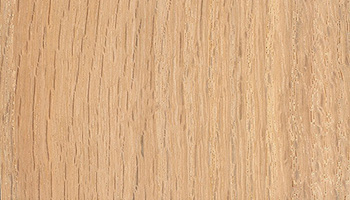
Laurel Oak | Quercus laurifolia
Has a light to medium reddish-brown color, though there can be a fair amount of variation in color. Conversely, White Oak tends to be slightly more olive-colored, but is by no means a reliable method of determining the type of oak. Red oaks such as Laurel Oak do not have the level of decay and rot resistance that White Oaks possess. Durability should be considered minimal. Distribution: Southeastern United States. Common Uses: Cabinetry, furniture, interior trim, flooring, and veneer. Laurel Oak falls into the red oak group, and shares many of the same traits as Red Oak (Quercus rubra). Red Oak, along with its brother White Oak, are commonly used domestic lumber species. Hard, strong, and moderately priced, Red Oak presents an exceptional value to woodworkers—which explains why it is so widely used in cabinet and furniture making.
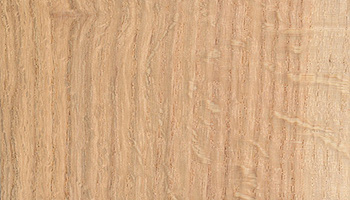
Pin Oak | Quercus palustris
Has a light to medium reddish-brown color, though there can be a fair amount of variation in color. Conversely, White Oak tends to be slightly more olive-colored, but is by no means a reliable method of determining the type of oak. Distribution: Eastern United States. Red oaks such as Pin Oak do not have the level of decay and rot resistance that White Oaks possess. Durability should be considered minimal. Common Uses: Cabinetry, furniture, interior trim, flooring, and veneer. Pin Oak falls into the red oak group, and shares many of the same traits as Red Oak (Quercus rubra). Red Oak, along with its brother White Oak, are commonly used domestic lumber species. Hard, strong, and moderately priced, Red Oak presents an exceptional value to woodworkers—which explains why it is so widely used in cabinet and furniture making.
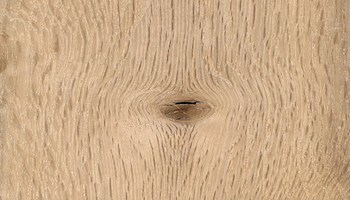
Scarlet Oak | Quercus coccinea
Has a light to medium reddish-brown color, though there can be a fair amount of variation in color. Conversely, White Oak tends to be slightly more olive-colored, but is by no means a reliable method of determining the type of oak. Red oaks such as Scarlet Oak do not have the level of decay and rot resistance that White Oaks possess. Durability should be considered minimal. Distribution: Eastern United States. Common Uses: Cabinetry, furniture, interior trim, flooring, and veneer. Scarlet Oak falls into the red oak group, and shares many of the same traits as Red Oak (Quercus rubra). Red Oak, along with its brother White Oak, are commonly used domestic lumber species. Hard, strong, and moderately priced, Red Oak presents an exceptional value to woodworkers—which explains why it is so widely used in cabinet and furniture making.
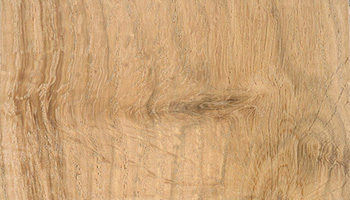
Southern Red Oak | Quercus falcata
Has a light to medium reddish-brown color, though there can be a fair amount of variation in color. Conversely, White Oak tends to be slightly more olive-colored, but is by no means a reliable method of determining the type of oak.
Other Names: Southern Red Oak, Spanish Oak, Quercus falcata. Distribution: Southeastern United States. Red oaks such as Southern Red Oak do not have the level of decay and rot resistance that White Oaks possess. Durability should be considered minimal. Common Uses: Cabinetry, furniture, interior trim, flooring, and veneer. Southern Red Oak falls into the red oak group, and shares many of the same traits as Red Oak (Quercus rubra). Red Oak, along with its brother White Oak, are commonly used domestic lumber species. Hard, strong, and moderately priced, Red Oak presents an exceptional value to woodworkers—which explains why it is so widely used in cabinet and furniture making.

Water Oak | Quercus nigra
Has a light to medium reddish-brown color, though there can be a fair amount of variation in color. Conversely, White Oak tends to be slightly more olive-colored, but is by no means a reliable method of determining the type of oak. Distribution: Eastern United States. Red oaks such as Water Oak do not have the level of decay and rot resistance that White Oaks possess. Durability should be considered minimal. Common Uses: Cabinetry, furniture, interior trim, flooring, and veneer. Water Oak falls into the red oak group, and shares many of the same traits as Red Oak (Quercus rubra). Red Oak, along with its brother White Oak, are commonly used domestic lumber species. Hard, strong, and moderately priced, Red Oak presents an exceptional value to woodworkers—which explains why it is so widely used in cabinet and furniture making.
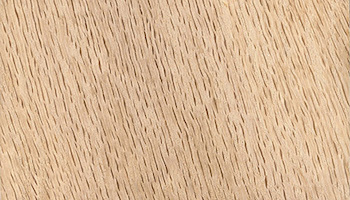
Willow Oak | Quercus phellos
Has a light to medium reddish-brown color, though there can be a fair amount of variation in color. Conversely, White Oak tends to be slightly more olive-colored, but is by no means a reliable method of determining the type of oak. Red oaks such as Willow Oak do not have the level of decay and rot resistance that White Oaks possess. Durability should be considered minimal. Distribution: Eastern United States. Common Uses: Cabinetry, furniture, interior trim, flooring, and veneer. Willow Oak falls into the red oak group, and shares many of the same traits as Red Oak (Quercus rubra). Red Oak, along with its brother White Oak, are commonly used domestic lumber species. Hard, strong, and moderately priced, Red Oak presents an exceptional value to woodworkers—which explains why it is so widely used in cabinet and furniture making.
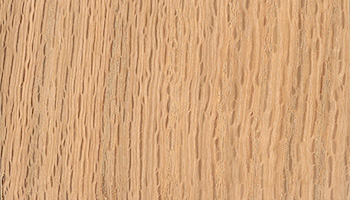
White Oak | Quercus alba
Has a light to medium brown color, though there can be a fair amount of variation in color. Conversely, Red Oak tends to be slightly redder, but is by no means a reliable method of determining the type of oak. Common Uses: Cabinetry, furniture, interior trim, flooring, boatbuilding, barrels, and veneer. White Oak, along with its brother Red Oak, are commonly used domestic lumber species. Hard, durable, and moderately priced, White Oak presents an exceptional value to woodworkers—which explains why it is so widely used in cabinet and furniture making.
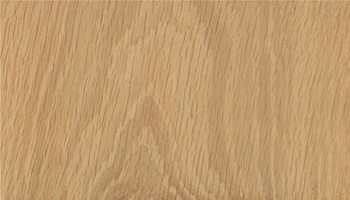
Bog Oak
Bog Oak, much like Brown Oak, is not a specific species, but is rather a term that designates oak that has been buried in a peat bog, sometimes for several hundreds of years. The anaerobic conditions of the bog protect the wood
from decay, while the acidic water contains tannins, which stain the wood a dark brown to almost black. Though Bog Oak does not describe a specific tree, it tends to most commonly occur in the United Kingdom, with English Oak being the most commonly salvaged species taken from bogs. Since there is such a limited supply of the wood—with Bog Oak essentially being the very early stage of fossilization—prices for this type of wood are very high. A special thanks to Steve Earis for providing the wood sample and turned photo of this wood species.
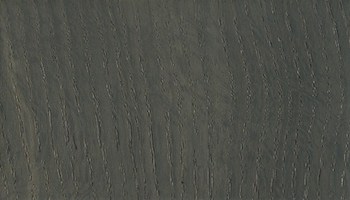
Brown Oak
Brown Oak is technically not a distinct species of oak, but rather refers to oak (almost always English Oak or another European species) that has been infected with a fungus. This fungus (Fistulina hepatica) has the effect of turning
the wood a deep brown color. Once the wood has been cut and dried, the fungus dies, leaving a rich golden brown lumber. Brown Oak is obviously not as common as regular oak, and the demand seems to be elevated, so prices are likely to be high for what could be considered a “domestic” hardwood for those in Europe—with prices going even higher for imported Brown Oak in the United States. Nonetheless, many people are willing to pay a premium for the rich, aged-look of Brown Oak.
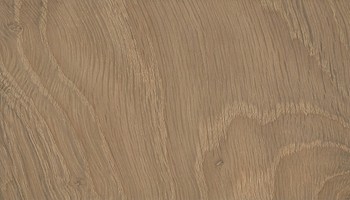
Bur Oak | Quercus macrocarpa
Has a light to medium brown color, though there can be a fair amount of variation in color. Conversely, Red Oak tends to be slightly redder, but is by no means a reliable method of determining the type of Oak. Other Names: Bur Oak, Burr Oak, Mossycup Oak, Quercus macrocarpa. Distribution: Eastern and Midwestern United States and south-central Canada. Bur Oak has been rated as having very good resistance to decay. Common Uses: Cabinetry, furniture, interior trim, flooring, boatbuilding, barrels, and veneer. Bur Oak falls into the white oak group, and shares many of the same traits as White Oak (Quercus alba). White Oak, along with its brother Red Oak, are commonly used domestic lumber species. Hard, durable, and moderately priced, White Oak presents an exceptional value to woodworkers—which explains why it is so widely used in cabinet and furniture making.
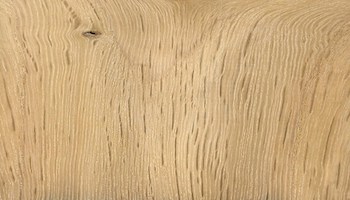
Chestnut Oak | Quercus prinus
Has a light to medium brown color, though there can be a fair amount of variation in color. Conversely, Red Oak tends to be slightly redder, but is by no means a reliable method of determining the type of Oak. Distribution: Eastern United States. Chestnut Oak has been rated as having very good resistance to decay. Common Uses: Cabinetry, furniture, interior trim, flooring, boatbuilding, barrels, and veneer. Chestnut Oak falls into the white oak group, and shares many of the same traits as White Oak (Quercus alba). White Oak, along with its brother Red Oak, are commonly used domestic lumber species. Hard, durable, and moderately priced, White Oak presents an exceptional value to woodworkers—which explains why it is so widely used in cabinet and furniture making.
